




Introduction 3 DLF Seeds – Innovations 6 Grass Management 10
Endophyte 12
Perennial Ryegrass 16 Hybrid Ryegrass 27 Italian Ryegrass 29 Annual Ryegrass 37 Programmed Approach™ 40
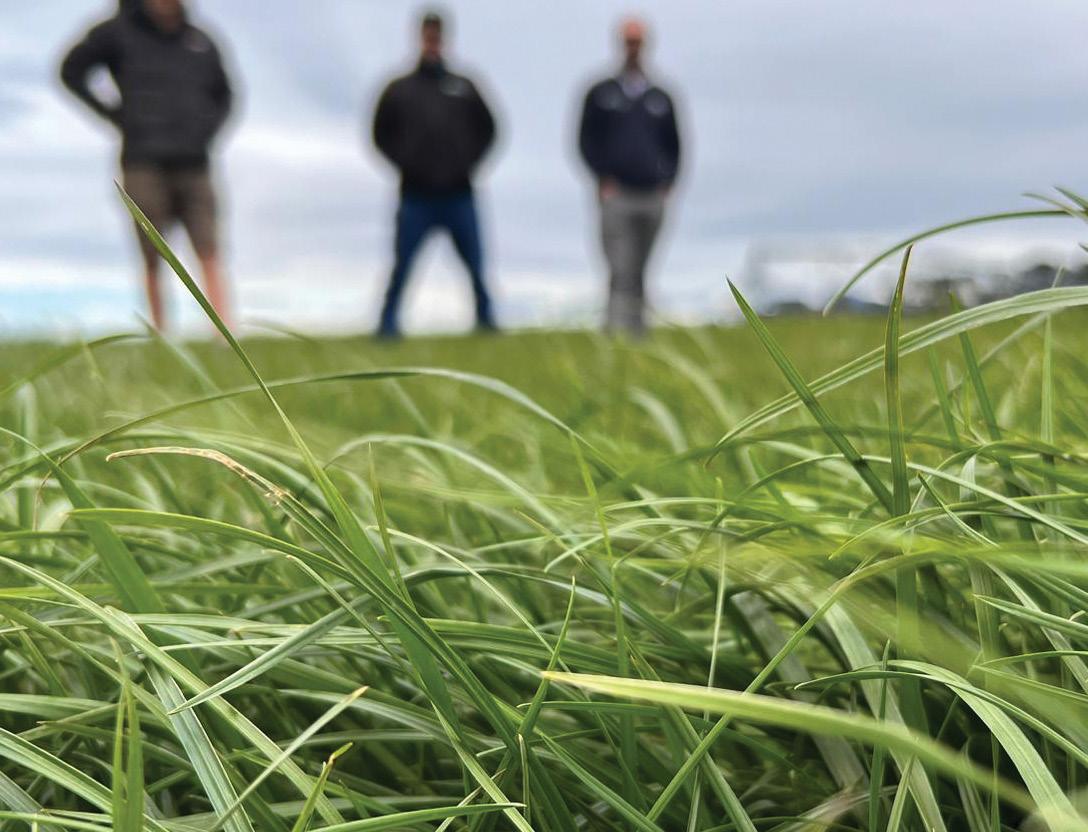
Repairing Pugged Pastures 42
Deep Rooted Grasses 43
Clover 53 Herb 63 Lucerne 70 Brassica 81 Mixes 95 Cereal 98 Selenium Chip 102 Seed Treatment 103 Sowing Table 109
For over 80 years we have been working to develop and deliver, to Australian farmers and agronomists, proven seed varieties designed to generate the best possible outcomes for their farms and the wider agricultural community.

We make it our business to understanding the local challenges at every level. We utilise our global capabilities to solve problems in a practical and sustainable manner, underpinned by science, knowledge and local expertise.
At DLF Seeds we stand by our products, and we stand by our farmers and their communities, through the twists and turns, and the ups and downs. We too are driven by the pursuit of increased performance, sustainability and the sense of pride, satisfaction, relief and success that comes when it all works.
In an environment that can be full of uncertainty. Having something you can rely on is worth sticking with and we continue to solve the problems of today to overcome the challenges of tomorrow. So you can be certain that what we say, we deliver on.

DLF Seeds represents the coming together of PGG Wrightson Seeds, AusWest and Stephen Pasture Seeds. These three respected Australian forage seed brands joined forces to provide the market with the ease and convenience of accessing all the quality products you have come to know in one place.
DLF Seeds through its global and local relationships, works with primary research partners including CSIRO, AgResearch and Plant and Food Research in New Zealand and the University of Western Australia and University of New England in Australia. This enables us to take advantage of this research and incorporate it for performance in the Australian environment. This includes, but is not limited to, Forage Innovations Limited (FIL) a joint venture between Plant & Food Research and PGG Wrightson Seeds Holdings Limited (NZ), which is the largest dedicated forage brassica breeding company in the world.
• The complete range of leading products currently available from the PGG Wrightson Seeds, Agricom and Corson Maize proprietary portfolios.
• Expertise in endophytes – with over 25 years’ of experience and knowledge, we are the leading experts in endophytes. We also have purpose built cold storage facilities to ensure viable endophyte levels are maintained.
• The benefit of over 15 million dollars per annum spent on Research and Development across Australasia.
• A leading role^ in the development of improved pasture plant genetics in this country, with a focus on grazing, animal health, farm productivity, farm system fit and agronomy advice.
• Global knowledge and local thinking with proven track record of supplying the agricultural community with locally based service and advice for over 80 years.
• A national network of Local Sales Agronomists who understand the local environment and farm systems servicing every state and territory.
• As the largest proprietary forage seed company in Australia, we have over 80 years’ experience^ supplying Australian farmers with the widest range of forage seed varieties.

• Market-leading technologies, advice and systems fit for a wide range of farming operations and climatic conditions.
• Proprietary varieties that go through vigorous testing in Australian conditions and the incorporation of animal grazing trials and the results into plant breeding. Led as PGG Wrightson Seeds and its predecessors.
An endophyte is a fungus found naturally in many grass species, including ryegrass and tall fescue. It provides the plant with protection from insects, and in return the plant provides the endophyte with a place to live and reproduce. At DLF Seeds, we have supplied the market with novel endophytic grasses for over 25 years and have developed the research, knowledge and understanding of how to ensure we deliver viable endophyte (percentage of live endophyte) in the seed we supply. Viable endophyte means that the grass will provide the maximum insect protection.
Endophyte technology has advanced significantly since the 1980’s and we have continued to help develop novel endophytes which provide the long-term pasture persistence and protection from pests that farmers require, but with reduced animal health issues.


New release, high performance perennial ryegrasses
Reason AR37 diploid perennial ryegrass: High performance diploid with industry leading autumn growth and a +3 heading date.
Vast AR37 tetraploid perennial ryegrass: Quality pasture with the latest perennial ryegrass heading date on the market.
As the Australian, market leading experts in endophyte innovation we:
• Have worked closely with AgResearch to ensure proven novel endophytes such as AR1 and AR37 are found within many of our high performance ryegrasses and MaxP ® within some tall fescue varieties.

• Have custom built, cold storage facilities to ensure live endophyte percentages are maintained (as only a live endophyte can protect a pasture).
• Provide Agronomists with detailed information on the live endophyte percentages in each bag (available upon request).
• Supply market leading endophytic varieties such as Base AR37 which ensures the pasture persistence and protection of high performance Base tetraploid perennial ryegrass is taken to a premium level.

• Provide the market with (LE endophyte) varieties were applicable.
• Have all the information farmers/agronomists need to understand what an endophyte is and how it can maximise pasture persistence.
AgResearch novel endophytes are identified and thoroughly tested with world-renowned science, with emphasis placed on testing effects on animals, insects, pasture production and persistence.
Endophyte is extremely important and can significantly improve the persistence, performance, durability and profitability of Australian pastures, and at DLF Seeds, we understand this and have been, and continue to be, at the frontline of leading endophytic technology.
Innovation pipeline: Cleancrop™ new release spring 2023
The Cleancrop™ Brassica System eradicates a range of key problem weeds in brassicas. Just plant the herbicide resistant Cleancrop™ seeds and then spray Telar ® herbicide within 48 hours to control 42 problem weeds, leaving all the goodness in the soil for your crop to thrive on. With reduced competition from weeds, crop yield and your return on investment goes up.
• Controls weeds within 48 hours of sowing*
• Low moisture required to activate Telar ® herbicide**
• No soil incorporation required
• Adaptable to all methods of sowing
*A second application at 4-6 leaf stage is available if problem weeds have not been addressed.
**When applied pre-emerge, Telar ® is taken up through the roots of weeds when conditions promote their growth.
The Cleancrop™ Brassica System is unique as it combines the power of the broad-spectrum herbicide Telar® and the traditionally bred plants that are resistant to it. Telar® takes care of 42 hardto-control weeds* at the time of sowing, freeing up moisture and nutrients to give your crop the best chance of maximising performance and delivering superior returns on your seed investment. Telar® cannot be used with conventional brassicas.
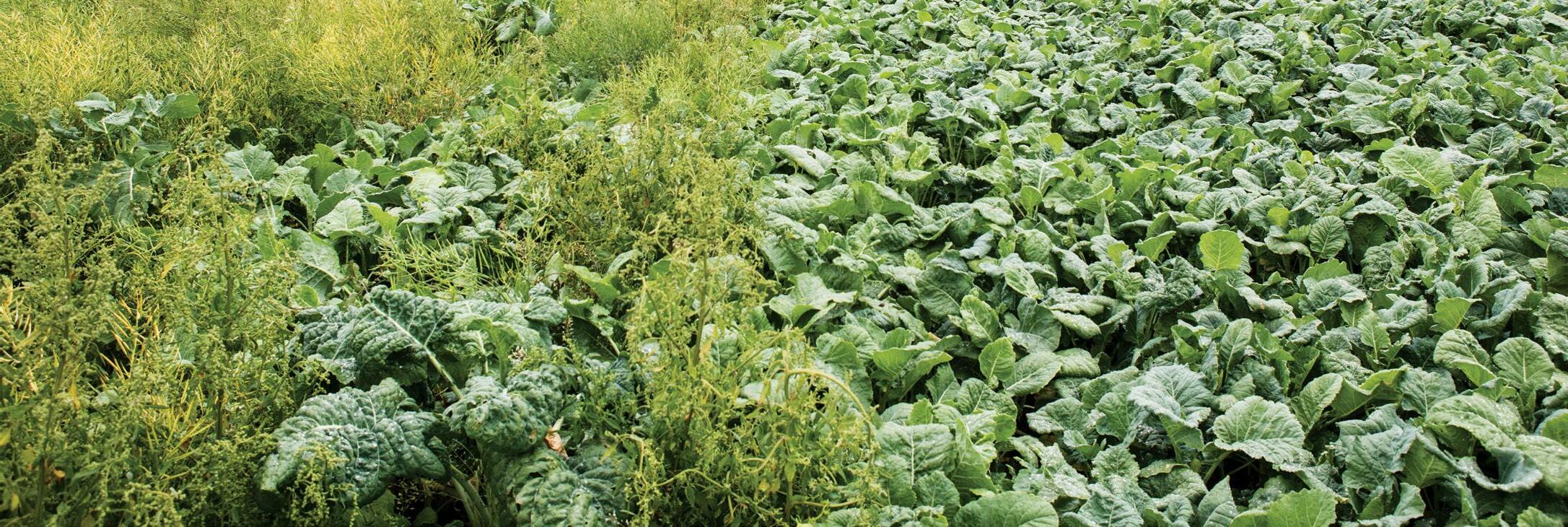
• Break perennial weed cycle by using different selective chemistry (by using Cleancrop as a weed management tool, it leads to a better result due to having less weeds in the new pasture in the following season)
• Increases the success of establishing a new perennial pasture in the following season
• Ease of convenience - your seed and chemical together in one easy to use pack
The Cleancrop™ Brassica System will be launched in Spring 2023, please speak to your local DLF Seeds Sales Agronomist for further information.
*Some weeds may be supressed or not controlled if under stress and sub optimal environmental conditions The Cleancrop Brassica System will only be

The four steps to choosing a ryegrass
1. What is the length of time the pasture needs to last?*
• Less than 1 year: Annual ryegrass
• 1 - 2 years: Italian ryegrass
• 2 - 4 years: Hybrid ryegrass
• 3-5+ years: Perennial ryegrass
* Under average or better management, soil fertility and moisture, and with the optimum endophyte.
2. What endophyte protection is needed based on insects present?
• AR37 controls: Argentine Stem Weevil Larvae, Pasture Mealy Bug, Adult Black Beetle and Root Aphid.
• ENDO5 ™ controls: Black Beetle, Argentine Stem Weevil Larvae, Root Aphid (moderate control) and Pasture Mealy Bug.
• AR1 controls: Argentitne Stem Weevil and Pasture Mealy Bug.
• MaxP ® controls: African Black Beetle, Agrentine Stem Weevil, Root Aphid and limited control of Field Cricket.
3. Diploids vs tetraploids and how will your paddock be grazed?

• Use tetraploids for: Rotational grazing or short periods of set stocking .
• Use diploids for: Rotational grazing, short periods of set stocking and long periods of set stocking.
See page 14 on diploids and tetraploids.
4. Do you need strong ryegrass growth rates early in spring or is late spring feed quality more important?
• Early-mid season heading ryegrasses can provide more dry matter, earlier in spring, late season heading ryegrasses yield higher quality feed in late spring. Your farms’ ryegrass portfolio should include a range of earlymid and late heading ryegrasses to deliver a balance of early season growth plus late spring feed quality.
DLF Seeds: Leading endophyte experts with over 25 years experience and purpose built cold storage facilities to ensure live endophyte percentages are maintained.

An endophyte is a fungus found naturally in many grass species, including ryegrass. It provides the plant with protection from insects, and in return the plant provides the endophyte with a place to live and reproduce.
FIGURE 1: How an endophyte protects your pasture
Ultrastrike® seed treatment protects between 0-6 weeks
Endophyte is found in the embryo of an infected seed
The endophyte grows into the emerging leaf as the seed germinates
Endophyte protection 8 weeks onwards
The endophyte grows up the stem and into the seed head of the reproductive plant
The endophyte is concentrated in the base of the plant, not in the roots
AR37 endophyte takes ryegrass pasture persistence and protection to a premium level.
Pests controlled: Argentine Stem Weevil Larvae, Pasture Mealy Bug, Adult Black Beetle and Root Aphid.
Available in: Base, Reason, One50, Vast, Legion# , Platform# and Expo perennial ryegrass, Mohaka hybrid ryegrass and Lush Italian ryegrass.
Benefits of ryegrass with AR37 endophyte
• Provides the best balance of pasture production and persistence
• Higher tiller density over time
• Assists with post-drought recovery and improves agronomic performance
• Provides stronger control of more insect pests compared to ryegrass cultivars containing AR1 or standard endophyte
• May produce greater carcass weight per hectare compared to ryegrass cultivars containing standard endophyte (SE)
• Helps to provide a greater return on investment
• Increased total dry matter production compared to ryegrass cultivars containing AR1 or nil endophyte
• Has no Ergovaline so may increase milk production compared to endophytes containing high Ergovaline levels
• Increased sheep performance compared to ryegrass cultivars containing standard endophyte
• Low incidence of dags in sheep (similar to that of cultivars containing AR1 endophyte)
Limitations of ryegrass with AR37 endophytes
• AR37 varieties should not be used or fed to any other classes of stock other than sheep, beef and dairy (eg. grazing horses/monogastrics)
Good pest control and no known risk of ryegrass staggers.
Pests controlled: Black Beetle, Argentine Stem Weevil Larvae, Root Aphid (moderate control) and Pasture Mealy Bug. (Comparatively, AR37 has demonstrated stronger protection from pests and insects).
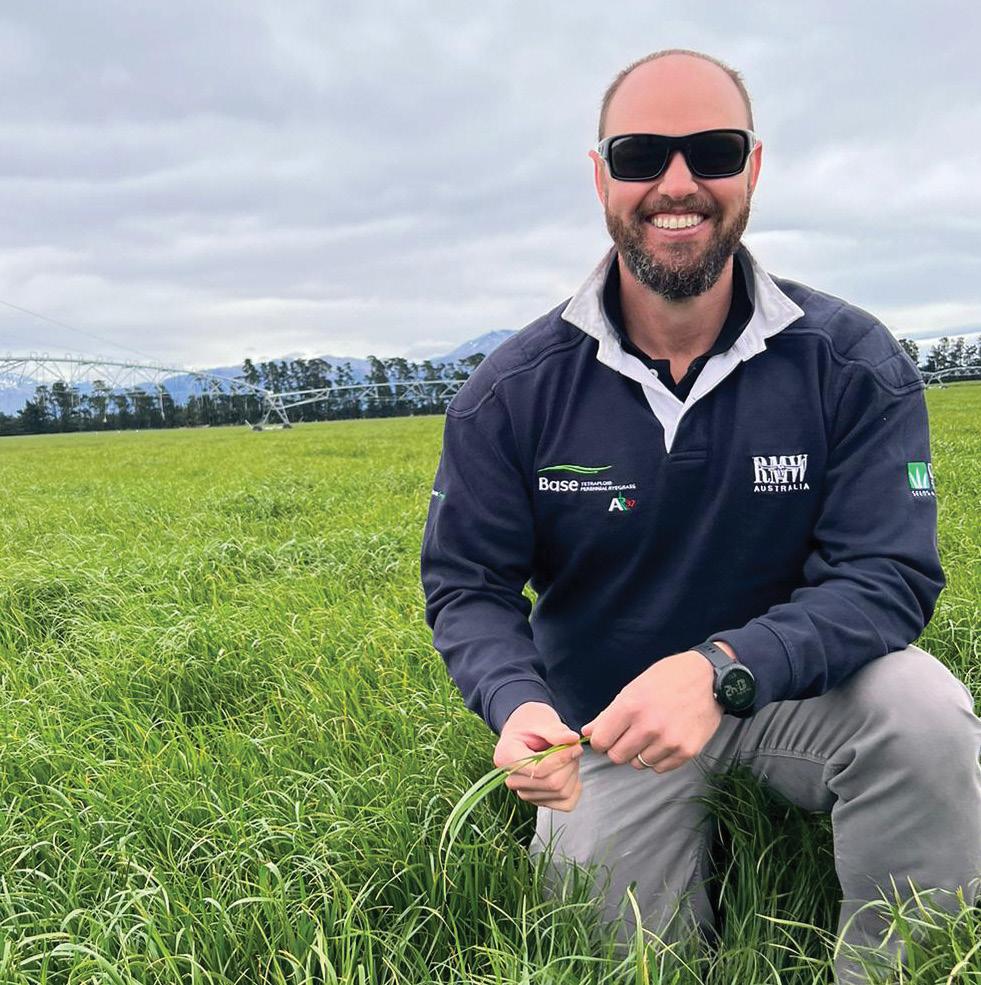
Available in: Reward perennial ryegrass.
Benefits of ryegrass with Endo5 endophyte
• Contains no Lolitrem B, the main cause of ryegrass staggers
• Produces less Ergovaline for increased milk production compared to endophytes containing high levels of Ergovaline (Standard Endophyte)
• Increased persistence compared to AR1 endophyte
• Pest and insect protection better than AR1
Limitations of ryegrass with Endo5 endophyte
• May produce lower animal performance levels over summer/autumn compared to ryegrass cultivars containing AR1 or nil endophyte
For important information relating to animal health and performance, visit dlfseeds.com.au
A novel endophyte option with high animal performance and no known animal health issues.
Pests controlled: Argentine Stem Weevil and Pasture Mealy Bug.
Available in: *Platform, *Legion and One50
A premium endophyte protecting tall fescue with no known animal health impacts for beef, sheep and dairy.
Pests controlled: African Black Beetle, Agrentine Stem Weevil, Root Aphid and limited control of Field Cricket.
Available in: Quantica, Hummer and Quantum II tall fescue.
Benefits of tall fescue with MaxP endophyte
*Due to small number of tip awns, Legion and Platform is certified Lolium boucheanum
perennial ryegrass. Benefits of ryegrass with AR1 endophyte
• Delivers excellent animal performance
• Provides a moderate range of insect protection
• Increase in milk production compared to ryegrass cultivars containing standard endophyte (where ryegrass persists)
Limitations of ryegrass with AR1 endophytes
• Has demonstrated poorer persistence in areas with major insect pest pressure from Black Beetle and Root Aphid
• AR1 can be overgrazed, resulting in more stress on the plant which may affect long term pasture persistence

It is important to choose the right endophyte for your operation. Some endophyte strains provide better insect protection but there may also be some impact on animal health. If you need a little extra know how, contact us on 1800 619 910 or visit dlfseeds.com.au/contact/contact-us.
Limitations of grass with Standard endophyte
• Contains Lolitrem B, the main cause of ryegrass staggers which can cause significant stock losses in some seasons
• Milk production may be lower in sheep, weight of lambs may be lower, and adult sheep consistently have lower bodyweight when grazing toxic pastures even when clinical staggers is not apparent
• Contains high levels of Ergovaline, which causes subclinical heat stress and is linked to other negative animal side effects
• An endophyte that improves the ability of tall fescue pastures to handle pest attack and possibly moisture stress
• Aids persistence and performance of tall fescue
• No known adverse animal health effects in beef, sheep and dairy
• Scours/dags
• Affects weight gain
• Lower milk production
• Higher water intake
• General “ill thrift”
• Sub clinical heat stress
The Neotyphodium endophytes infecting these grasses are not known to be transferred with pollen or by physical contact (Siegel et al., 1984).
David E. Hume and David J. Barker 2005 GROWTH AND MANAGEMENT OF ENDOPHYTIC GRASSES IN PASTORAL AGRICULTURE. In Neotyphodium in cool-season grasses. Eds. CA Roberts, CP West, DE Spiers 201-226 Iowa, IA: Blackwell Publishing
Diploid ryegrasses have two sets of chromosomes per cell, compared to a tetraploid which has four. Diploids combine yield and robustness, ensuring that even in less than ideal conditions, they will deliver for your stock.
The cells within a diploid ryegrass are smaller than in tetraploids resulting in a lower ratio of water soluble carbohydrates (sugar) compared to fibre.
Dependable diploids:
• Densely tillered
• Competitive with weeds
• Cope with lower fertility
• Ideal for grass to grass situations
• Can handle wetter environments
• Can be set stocked or rotationally grazed
A tetraploid plant has four sets of chromosomes per cell (a diploid has two sets) which simply means tetraploid ryegrasses are more palatable for your livestock. Tasty tetraploid ryegrasses are just what your stock ordered. Stock prefer tetraploids over diploids if they have a choice and tetraploids are more quickly and completely eaten by livestock.
• Fast to establish
• Extremely tasty and palatable
• Excellent pasture utilisation
• Very high quality
• Higher animal dry matter intakes
• Better animal performance
• Great for silage and hay quality
• Clover friendly
• Need a higher sowing rate – the seed is larger than diploids
• Should be rotationally grazed or set stocked for short periods only
• Are easily overgrazed, watch post-grazing residuals
• Should be sown with clovers or herbs
• Tetraploids are darker green. Don’t rely on colour change before applying nitrogen
Cell contents consist of rapidly available nutrients, such as sugars and starches, necessary for good rumen function cell wall (fibre)
Heading date is when a paddock visually has 50% of the plants seed heads emerged. Heading dates are defined relative to the cultivar Nui, heading at day 0.
Ryegrass heading date influences pasture production in two ways:
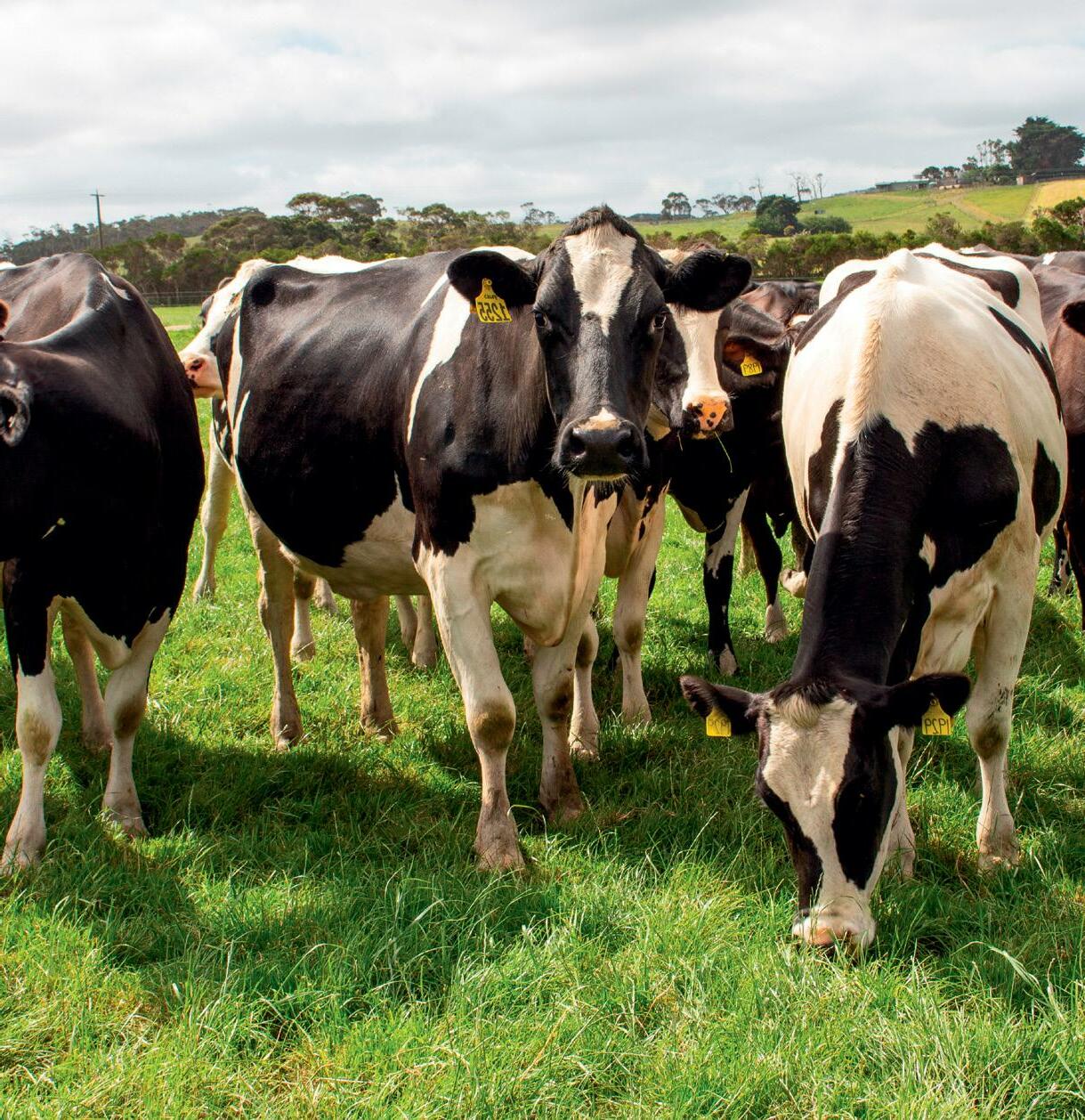
1. Timing of spring-flush: Very early through to mid season heading ryegrasses often produce more dry matter earlier
2. Timing of late spring/early summer loss of quality: Later heading cultivars hold quality, providing leafy high quality feed later in spring
• Sow a range of ryegrass cultivars with different heading dates to spread timing of heading and reduce loss of summer quality
• Sow ryegrasses with different heading dates in separate paddocks
• Sow no more than 50% of the farm in late or very late cultivars to reduce early spring feed pinches
Aftermath heading refers to the number of seed heads produced after the main heading event. If there are a lot of seed heads produced (high aftermath heading) then this means pasture quality is reduced. If there are minimal seed heads produced (low aftermath heading) then pasture quality is maintained for longer.
EARLY
Earlier heading
• Often earlier flush of spring growth
• Early maturing
• Poorer late season quality
• Improved spring quality if aftermath heading is low
VERY EARLY ≤ -12 days Barbaria - 20 days Kangaroo Valley - 17 days
LATE
EARLY
-11 to -6 days Victorian - 10 days Bolton - 8 days
MID -5 to +7 days Kingsgate - 3 days Nui 0 days Somerset +3 days Avalon +3 days Reason +3 days
LATE
Diploid Diploid Diploid Tetraploid
Diploid
+8 to +21 days Maxsyn +8 days Platform# +12 days Legion# +14 days Ansa +14 days Impact II +16 days Rohan +18 days Viscount +19 days One50 +20 days Ultra +20 days Expo +21 days
Diploid Tetraploid
Diploid Tetraploid
VERY LATE +22 to +25 days Base +22 days Matrix +23 days Reward +24 days Halo +25 days Bealey +25 days
EXTREMELY LATE +26 to +36 days Vast +36 days
Later heading
Diploid Tetraploid
• Can be later flush of spring growth
• Late maturing
• Better late season quality
• Responds well to summer rainfall
# Due to small number of tip awns, Platform and Legion are certified Lolium boucheanum
Agricom product portfolio: Kingsgate SE, #Legion AR37, One50 AR37/AR1/SE and Reason AR37 diploid perennial ryegrass.
PGG Wrightson Seeds product portfolio: Base AR37, Reward Endo5™ , #Platform AR37/ AR1, Vast AR37 tetraploid perennial ryegrass and, Expo AR37 and Somerset SE diploid perennial ryegrass.
Suited to a wide range of soil types with a minimum annual rainfall of 600mm+, perennial ryegrasses are used as a high performance pasture or in a pasture mix across temperate Australia. In Australian conditions, perennial ryegrass persists for 3-5+ years depending on seasonal conditions, management and soil fertility.
To maintain a high level of perennial ryegrass plants in a pasture, rotational grazing needs to be adopted. Maintaining soil fertility levels with adequate fertiliser applications is also important for persistence as well as production.
# Due to small number of tip awns, Platform and Legion are certified Lolium boucheanum

Our range of high quality, proprietary perennial ryegrass varieties includes:
Several years ago, African Black Beetle appeared on our farm decimating our Italian and some permanent ryegrass pastures which brought about a change in pasture variety selection on our farm. I wanted a tetraploid perennial that was persistent, palatable and responsive to summer and early autumn rains. Having evaluated several varieties on our farm, I now use Base AR37 perennial ryegrass almost exclusively in our pasture improvement programme.

A particular feature of it is its persistency, (I have many paddocks untouched for over 5 years) and its ability to maintain feed quality into the early summer.
It has also been a reliable performer in producing good quality silage in large quantities with up to 3 cuts on some out paddocks.
Tim Calder Meeniyan, VICDairy Australia’s Forage Value Index number 1 performer for 5 consecutive years Base is a late maturing tetraploid perennial ryegrass available with AR37 endophyte. Base offers superb dry matter yield meaning more feed is available for your stock. An added feature of Base is its high seasonal production in autumn and winter. It also responds well to summer rainfall, providing growth when moisture and fertility are available.

• Outstanding insect protection from AR37 endophyte
• Top performer in the FVI (Forage Value Index)
• Bred in Australia from drought surviving plants
• High performance in dairy, beef and sheep operations
• Excellent late season quality feed
• Very high tiller density and high dry matter production
Avoid hard set stocking during dry periods
For more information on AR37 see page 12 and visit dlfseeds.com.au for important animal health information. For more information on the FVI visit dairyaustralia.com.au.

In 2016 a demonstration commenced on a property located near Hamilton (‘Wexford’), owned by Tony Fleetwood. The aim was to evaluate lamb and ewe performance on two different perennial ryegrasses. These were Base AR37 (a late heading tetraploid containing AR37 endophyte) and Victorian SE (an early heading diploid containing standard endophyte).
The trial was independently managed by Andrew Speirs, a consultant with Meridian Agriculture.
• For persistence, Base AR37 stretched the lead in 2020 with Base AR37 at 81.3% and Victorian Standard Endophyte (SE) at 65.3%.
• In 2021 Base AR37 maintained high plant numbers with a persistence score of 87.5%. Victorian Standard Endophyte (SE) recovered to 72.80% with seedling recruitment.
• By autumn 2021 Base AR37 had persisted for 5 years, out producing Victorian Standard Endophyte (SE) every year with an overall advantage of $606/ha/year.
• In 2018 and 2019, both cultivars maintained very good plant numbers. In 2020 however, Victorian ryegrass reduced significantly - notably showing areas of winter grass.
• Importantly in 2020/2021, Base AR37 had a higher persistence count compared to Victorian Standard Endophyte (SE) under set stocking conditions and higher stocking rates. Debunking the popular belief that traditional perennial ryegrasses persist better than modern varieties during tough seasons. ( See graph "Measured persistence yearly rainfall Base AR37 trial on page 20").
FIGURE 4: Kg liveweight produced per hectare. Calculated income by variety based on lamb liveweight value of $3.50/kg in 2018, $4.00/kg in 2019 and $4.50/kg in 2020.
KG LIVEWEIGHT PRODUCED PER HECTARE
Victoria SE Base AR37
• Increased gross profit and live weight gain per hectare from lambs.
• Increased persistence after five years as a result of AR37 endophyte.
• Added palatability of a late heading tetraploid ryegrass leading to higher weight gains.
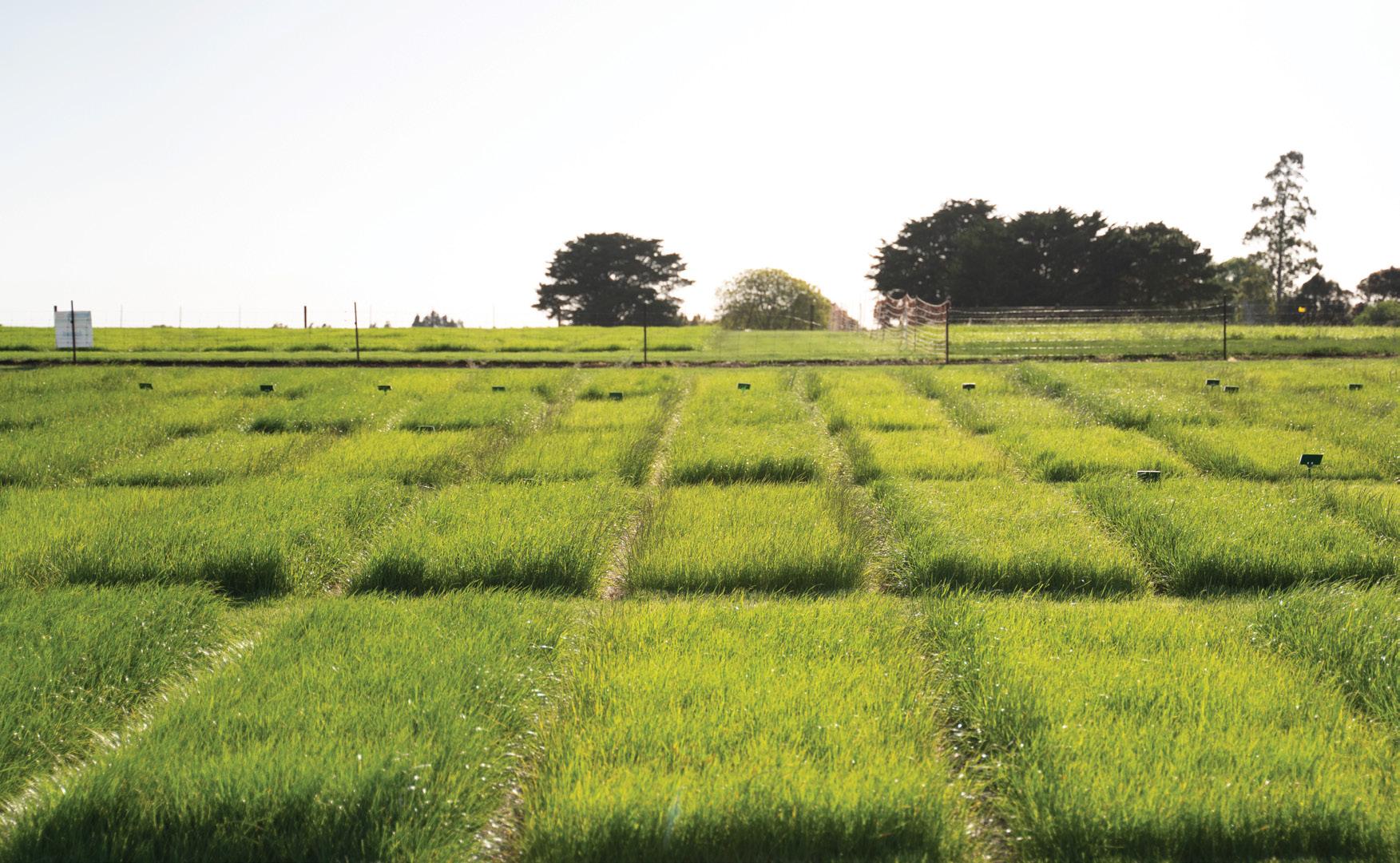
• Higher autumn/winter grass production enabled higher stocking rates of ewes resulting in more lambs being turned off per hectare.
• The ability of Base AR37 to maintain its feed quality longer at the end of season led to higher live weight gains in lambs, well into December.
• Base AR37 produces more dry matter and this dry matter is distributed more evenly across the year, making Base AR37 easier to manage compared to Victorian SE.
• Ewes had improved body condition scores with Base AR37 in comparison to Victorian SE.
FIGURE 5: Measured persistence and yearly rainfall from the Base AR37 Victorian SE trial.
PARSISTENCE (GROUNDCOVER %)
884mm 839mm
705mm 510mm 564mm
100% 90% 80% 70% 60% 50% 40% 30% 20% 10% 0 2016 2020 2017 *2021 2018 2019
461mm*
Victoria SE Base AR37 Rainfall
There is a common misconception that Victorian SE persists in years with low rainfall in comparison to modern perennial ryegrass pastures. This graph shows Base AR37 shows a stronger persistence into year four in comparison to Victorian SE, despite a dry year in 2019.
• In years 2 - 3 both cultivars maintained very good plant numbers but by different methods. Victorian SE by seedling recruitment and Base AR37 by established plant survival.
* 2021 rainfall based on 2021 rainfall up to November 2021
• The Base AR37 paddock hasn’t been allowed to seed as the improved palatability increased the relative grazing pressure, whereas animals refuse to eat Victorian SE when it goes to seed, allowing it to set seed and survive that way.

AR37
endophyte
Complete all rounder, all region, all season
Legion AR37 is a fine leaved, high performance diploid perennial ryegrass# with a +14-flowering date. Displaying strong autumn recovery, Legion produces high amounts of quality dry matter after the autumn break and leading into winter. Legion AR37 performs well in sheep and beef pastures displaying excellent density for periods of set stocking and winter grazing and is well suited to dairy pastures and runoffs.
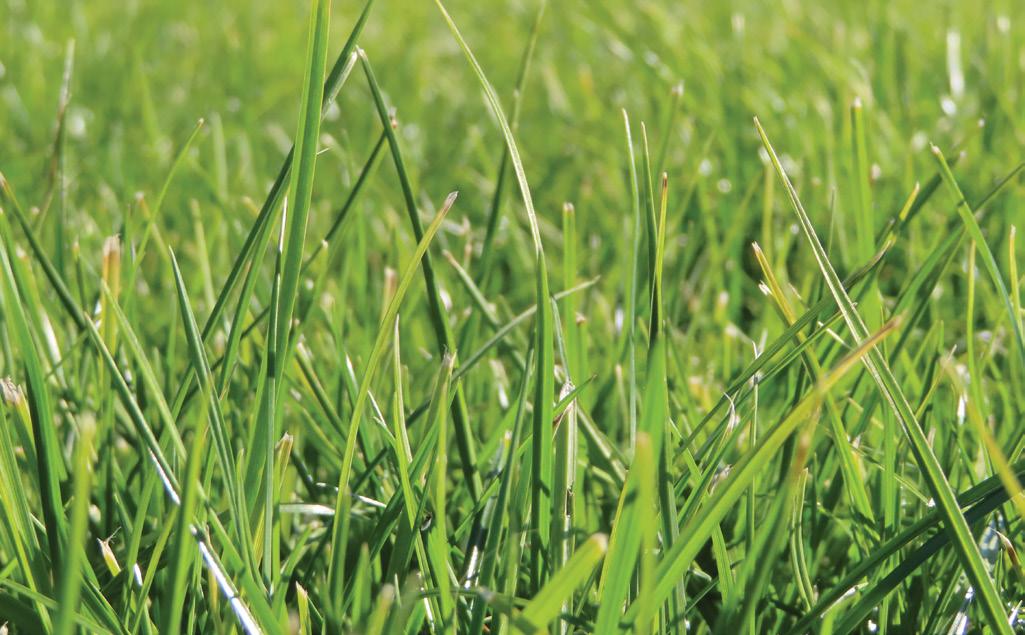
Take your brassica finishing operation to the next level and increase your live weight production per hectare.
Pallaton Raphno® is a raphanobrassica, a hybrid between Brassica oleracea (kale) and Raphanus sativus (radish). It is high yielding and offers flexible grazing as early as 56 days after sowing, but can be deferred up to 100 days after sowing. It is persistent under multiple grazings and is highly palatable to stock.
• High yielding
• Strong plant persistence under multiple grazings
• High water use efficiency
Legion has outstanding summer, autumn and winter growth, good sized tillers, low aftermath heading and excellent summer leafiness. Sow Legion for a slightly earlier spring flush compared to late heading varieties and its ability to grow well in all seasons and provide high quality pasture leading into Autumn.
• Aphid tolerant
• Premium insect protection from AR37 endophyte
• High palatability
• Excellent density for periods of set stocking and winter grazing
Achieve 5+ grazing’s with recommended management

• High dry matter production
• Strong autumn recovery
Available through accredited retailers under agency agreement only. Must be sown at 8kg/ha.
Reason AR37 has a + 3 heading date vs Nui* at 0 days. Within the DLF Seeds portfolio of products, Reason AR37 has a similar heading date to Somerset and is 7 days later than Kingsgate. It is 10 days earlier than Legion and 17 days earlier than ONE50.
*Nui heading date at 0 days is the 22nd October.
New, high performance diploid with industry leading autumn growth and a +3 heading date
Reason AR37 is a new diploid perennial ryegrass that has topped the accumulated dry matter production trial against leading perennial diploids* (2018 – 2021 Terang Victoria), proving it consistently produces excellent quality dry matter production across all seasons. This mid flowering perennial returns to a vegetative state after flowering, providing farmers with extended late season quality – a trait not typically seen in a mid flowering perennial ryegrass. With a +3 heading date and the added benefit of a very low aftermath heading, sow Reason AR37 to boost productivity and take advantage of early spring growth.
• A high performing diploid perennial ryegrass with mid heading (+3)
• Well balanced, seasonal growth potential with excellent early-spring growth in cooler regions
• Persistent in and tolerant of a wide range of environments
• Very good tiller density with extremely low aftermath heading in summer
• Ideal for sheep, beef and dairy systems looking for extra spring growth while maintaining summer and autumn quality and production
*DLF Seeds stage 2 Perennial Ryegrass trial (2018-2021)
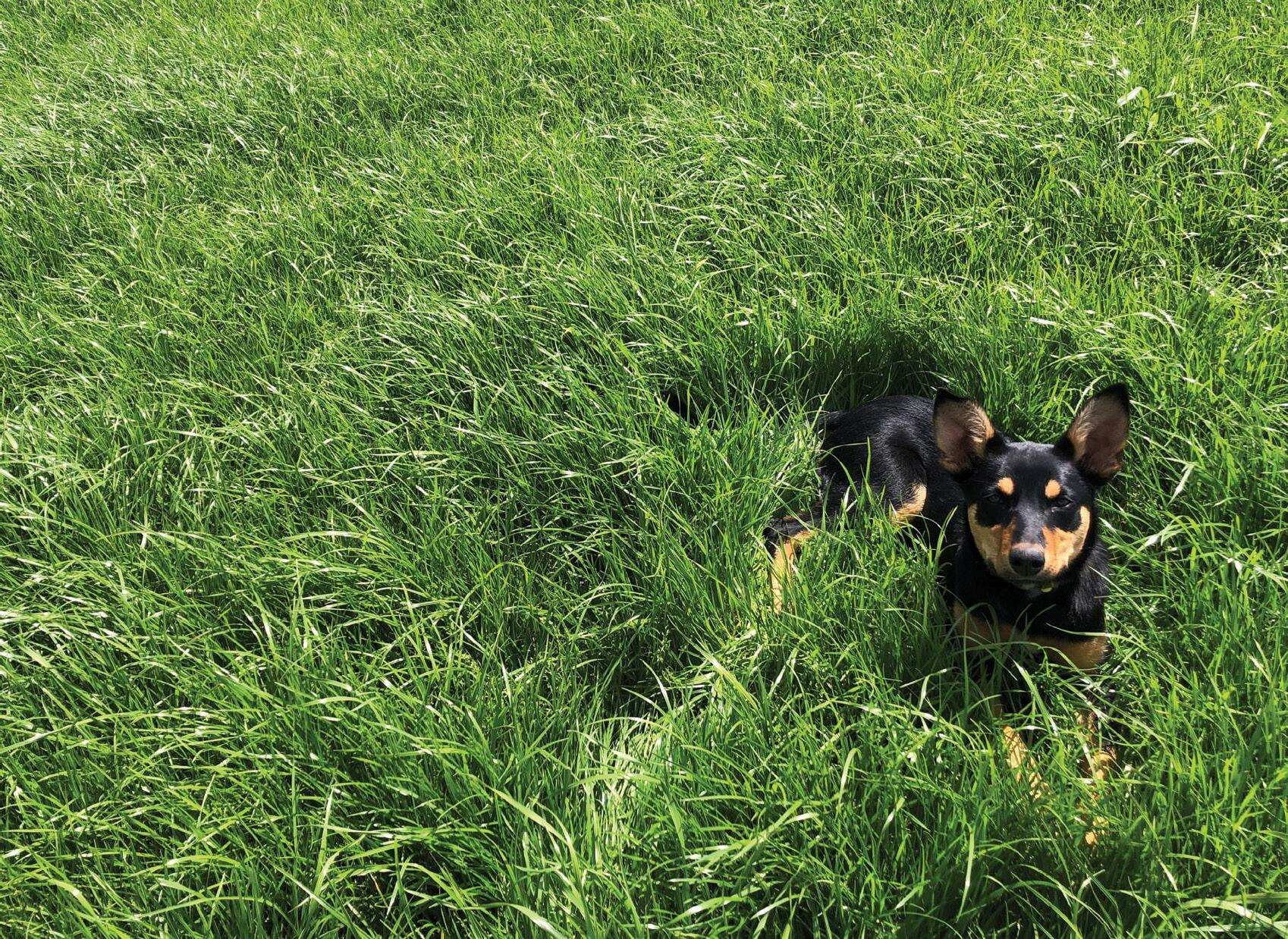
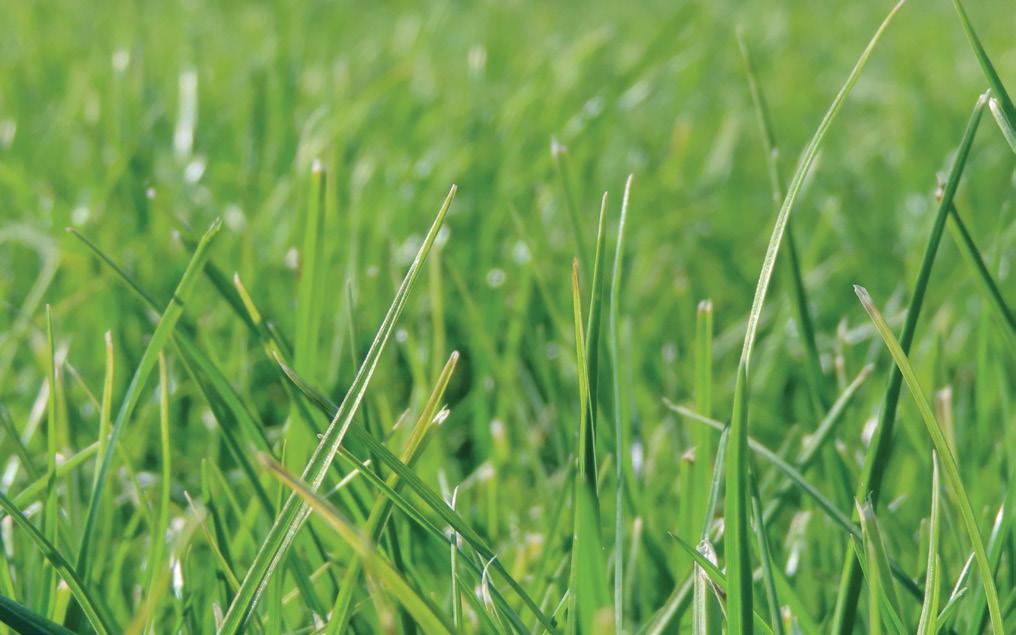
FIGURE 6: Accumulated dry matter production from DLF Seeds perennial ryegrass trial, Terang Victoria (2018-2021) • After 3 years, Reason AR37 was the highest producing diploid perennial ryegrass within the trial. • Reason AR37’s strong performance is attributed to strong Autumn recovery, early Spring growth and returning to vegetative growth state after flowering.



Vast provides strong annual production with exceptionally strong summer and autumn production advantages. In spring calving dairy systems, production of quality late season feed is ideal for slowing the post peak decline in milk production.
Sheep and beef systems will also benefit from exceptional summer and autumn production. Vast’s feed profile is ideal for beef, lamb finishing and providing feed during ewe flushing and mating.
Quality pasture with the latest heading date of a perennial ryegrass on the market

A tetraploid with diploid level density, Vast AR37 perennial ryegrass is the next generation in tetraploid perennial ryegrass breeding delivering the ultimate combination of density, quality, production and grazing preference for Australian farmers to maximise stock performance and productivity. With an extremely late (+36 days) heading date, Vast AR37 offers the latest heading date of any perennial ryegrass on the market.
Low seed head production after the initial seeding period, in combination with an extremely late flowering date, means Vast AR37 provides high quality feed across the majority of the growing season.
• Strong annual production with exceptional summer and autumn productivity
• Extremely late heading date (+36 days) boosting late seasonal pasture quality
• Diploid level tiller density to enhance persistence
• Tetraploid grazing preference to drive animal intakes
• Excellent rust tolerance to improve summer and autumn palatability
Sowing rate
20-25kg/ha (sole) 15-20kg/ha (mixed)
Heading date (days) +12 Pasture life (years) 5+
Rainfall/Irrigation Minimum 700mm p.a
Used for
A diploid perennial ryegrass which has been bred to suit a range of farming regions in southern Australia. Platform AR37 is a fine leaved, mid-late heading (+12) ryegrass with low aftermath heading enabling excellent pasture utilisation and quality late into the season.
The combination of high tiller density, resilient ryegrass genetics and AR37 endophyte means Platform AR37 displays strong persistence as well as the ability to provide excellent forage production across all seasons.
• High tiller density and excellent feed quality
• Fine-leaved and low aftermath heading
• Mid-Late heading (+12 days)
• Excellent, year round dry matter production
• High insect protection from AR37 endophyte
Available with AR37 and AR1 endophyte
#Platform has been bred, selected and successfully tested as a perennial and will function as a perennial ryegrass. Due to a small number of tip awns, Platform is certified as Lolium boucheanum
Sowing rate
20-30kg/ha (sole) 20-25kg/ha (mixed)
Heading date (days) +25 Pasture life (years) 5+
Rainfall/Irrigation Minimum 700mm p.a
Used for
The versatile all-rounder providing increased milk production
Reward is a tetraploid perennial ryegrass with Endo5 endophyte bred with low aftermath heading for the Australian farmer. It is very late maturing which means high quality feed for longer, especially at times when feed is needed most.


Reward is suited to a broad range of farming systems including sheep, beef and dairy, making it a great allround option.
• Bred for low aftermath heading
• Excellent persistence and dry matter production
• Endo5 endophyte for broad spectrum pest control
• No Lolitrem B (the main toxin that causes ryegrass staggers)
Endo5 contains Ergovaline and peramine for insect protection. It is recommended to avoid prolonged set-stocking or grazing fresh regrowth of such pastures during summer and autumn
Sowing rate 20-25kg/ha (sole) 15-20kg/ha (mixed)
Heading date (days) -3
Pasture life (years) 5+
Rainfall/ Irrigation Minimum 600mm p.a
Used for
A mid flowering, densely tillered, diploid perennial ryegrass offering early spring production and rust tolerance. Bred specifically to replace Kingston, Kingsgate has excellent low aftermath heading (a trait not common in early and mid-heading perennial ryegrasses). Best suited to beef and sheep grazing, Kingsgate performs well in low fertility areas and marginal country.
• Persistent and rust tolerant
• Rapid recovery from grazing
• Tolerant of and productive in acidic soils
Due to Kingsgate containing Standard Endophyte, it does require careful grazing management, particularly during drier times of the year when the possibility of ryegrass staggers is increased

Sowing rate
20-25kg/ha (sole) 15-20kg/ha (mixed)
Heading date (days) +21
Pasture life (years) 5+
Rainfall/ Irrigation Minimum 700mm p.a
Used for
Australian proven late-heading diploid perennial ryegrass
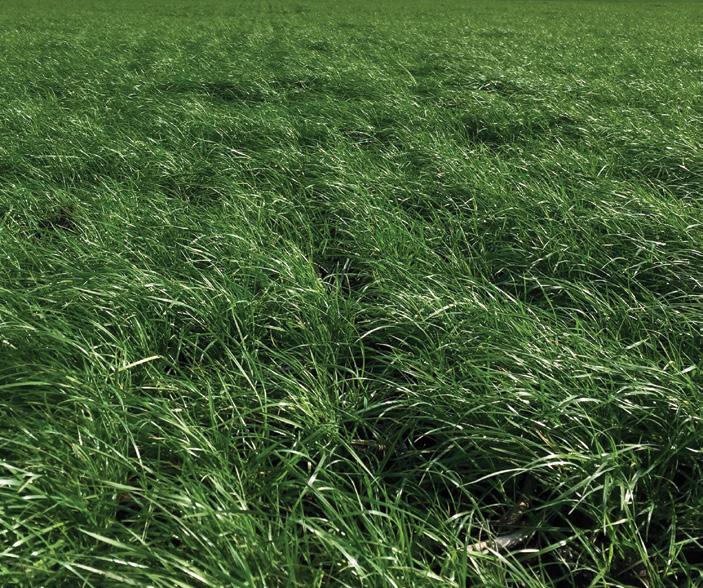
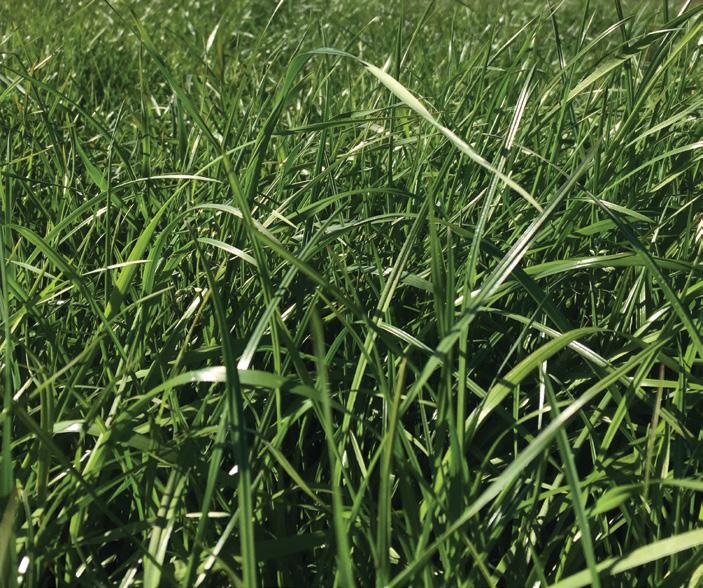
One50 is a late-heading perennial ryegrass providing good dry matter production and high-quality feed for silage and hay. It is high yielding and offers good summer, autumn and winter production. Producing good leaf production through summer, and high dry matter production through autumn and winter (particularly with AR37 endophyte), One50 displays spring quality and summer leafiness. Due to One50's late-heading date it maintains vegetative leaf production into late spring and early summer, making pasture management easier. Recommended for rotational grazing.
• Good persistence and dry matter production
• Strong summer, autumn and winter production
• High quality late season feed
• Proven persistence in the Australian environment
Available with AR37, AR1 and SE endophyte
Sowing rate
20-25kg/ha (sole) 15-20kg/ha (mixed)
Heading date (days) +3
Pasture life (years) 5+
Rainfall/ Irrigation Minimum 600mm p.a
Used for
Somerset (SE) mid-heading diploid perennial ryegrass
Somerset SE is a mid-heading (+3 days), diploid perennial ryegrass suited to beef, sheep and dairy grazing systems. With impressive seedling vigour to provide rapid establishment, combined with good autumn, winter and spring yields, Somerset is a reliable dry matter producer. With medium tiller density and tolerance to a wide range of insect pests, Somerset displays very good pasture persistence.
• Mid-heading (+3)
• High rust tolerance
• Medium tiller density
• High insect tolerance
• Tolerant of and productive in acidic soils
Due to Somerset containing Standard Endophyte, it does require careful grazing management, particularly during drier times of the year when the possibility of ryegrass staggers is increased
Agricom product portfolio: Mohaka AR37 hybrid ryegrass

Bred from a perennial ryegrass crossed with a varying percentage of Italian ryegrass, a hybrid ryegrass can persist longer than traditional annual/Italian ryegrasses. Depending on conditions, a hybrid ryegrass provides more cool season growth compared to perennial ryegrass and will persist for 2-4 years.
At DLF Seeds, we offer a range of proprietary ryegrass options suitable for most conditions and environments across Australia. To find about more, contact us on 1800 619 910 or visit dlfseeds.com.au/contact/contact-us.
Mohaka AR37 has high yields and maintains ground cover, helping to maintain stand integrity, production and weed suppression throughout its stand life. AR37 endophyte keeps key pasture pests at bay, allowing Mohaka to outlast and out perform other hybrids on the market. Mohaka AR37 has a good fit where Italian ryegrass can be stretched to 3 years, without compromising 1st year yield. Mohaka also offers a significant increase in first year production compared to perennial ryegrass in environments where perennials are only lasting 4 years anyway.
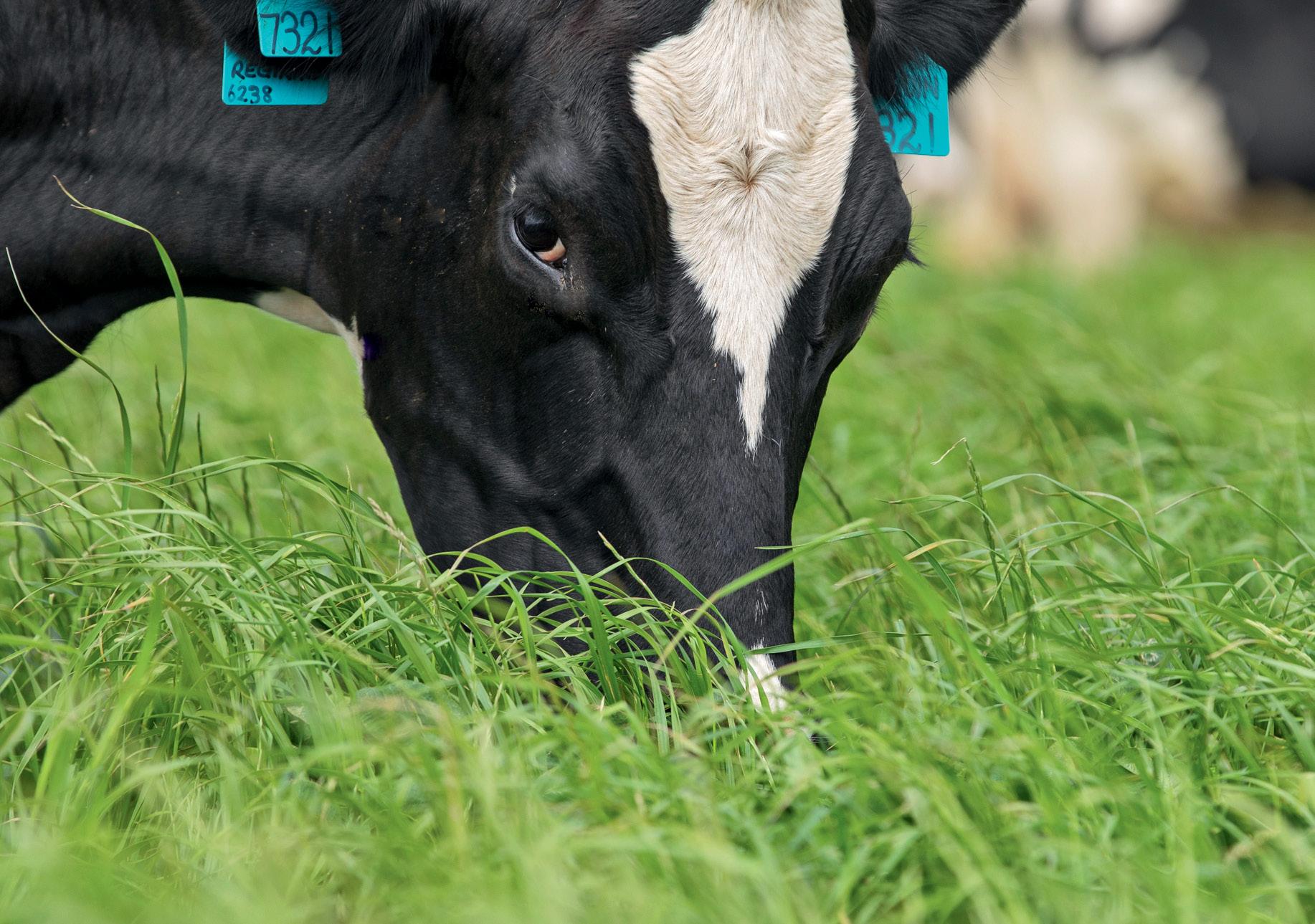
This broad leaved, densely tillered tetraploid hybrid ryegrass has superior cool season productivity when compared to its predecessor, Ohau, due to its higher percentage of Italian ryegrass parentage. In commercial trials, Mohaka has exhibited additional growth throughout the growing season compared to similar types and with AR37 endophyte, it is likely to persist for multiple years (2-4) when grown in favourable conditions.
Mohaka has a +20 flowering date that will push quality late into the spring. Mohaka’s excellent rust tolerance and tiller density will see it become favoured by Australian farmers. Mohaka can be used as a multi-year Italian ryegrass. Its fast establishment and seedling vigour makes it a successful oversowing option into existing perennial ryegrass paddocks that are starting to thin.
• Better cool season growth than perennial ryegrass

• Late flowering date delivering late spring quality
• Very high rust tolerance
• Excellent tiller density for a tetraploid
• Genuine oversowing option due to high establishment vigour
PGG
Best suited to high rainfall areas (600mm+ p.a or under irrigation) with good fertility, Italian ryegrasses are ideal for silage and haymaking, offering bulk winter feed and excellent regrowth potential late into the season (with favourable conditions).
At DLF Seeds, we offer a range of proprietary ryegrass options suitable for most conditions and environments across Australia. To find about more, contact us on 1800 619 910 or visit dlfseeds.com.au/contact/contact-us.

On advice from Nathan at DLF Seeds we decided to give Manta ryegrass a try in some of our paddocks (after using Nourish for years). Manta was planted at the end of April and despite a wet year it was very quick to get going and establish, so much so it out competed our Kikuyu. We have had multiple grazing’s on it so far. Once we got into spring we have been on 18 day grazing rotations and it’s still going strong. Our pastures have also benefited from the inclusion of Ecotain environmental plantain and Amigain red clover. We will definitely be using Manta on our farm again next year.
Rod Jones Kenilworth South East, QLDFast establishing Italian with outstanding cool season growth
Manta Italian ryegrass is the latest diploid Italian ryegrass from Agricom. Manta has explosive establishment speed being the fastest starting genetics we have seen to date. This fast establishment allows farmers to plant with confidence, growing quick feed before winter sets in.
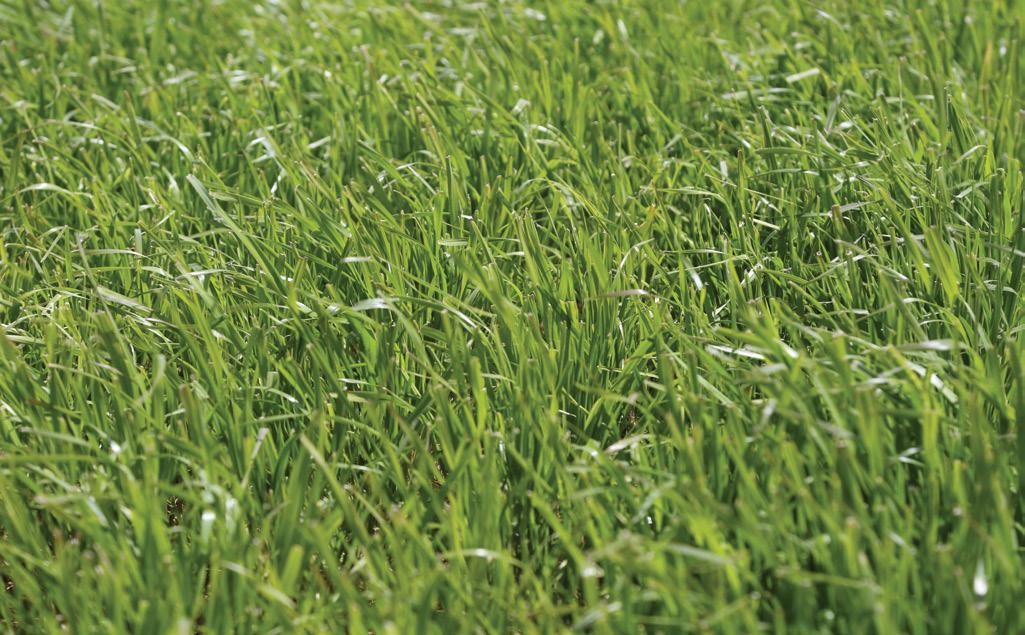
Manta has strong cool season growth with excellent spring yields; being Agricom's highest yielding diploid Italian means more grass grown for meat, milk and hay production. Trialled, tested and commercialised in Australia based on Australian data and Australian conditions.
• Fast establishment speed
• Good cool season growth
• Large leaf compared to other diploid Italians
• Impressive spring growth and high total dry matter production
• Versatile performer across all Australian temperate ryegrass regions


Sowing rate
20-35kg/ha (sole) 15-20kg/ha (mixed)
Heading date (days) +19 Pasture life (years) 1 to 2
Rainfall/Irrigation Minimum 600mm+ p.a
Used for
Concord® II is an outstanding Italian ryegrass with exceptional speed of establishment. It delivers increased winter production and solid seasonal dry matter production with the ability to carry through to the second year where conditions allow.
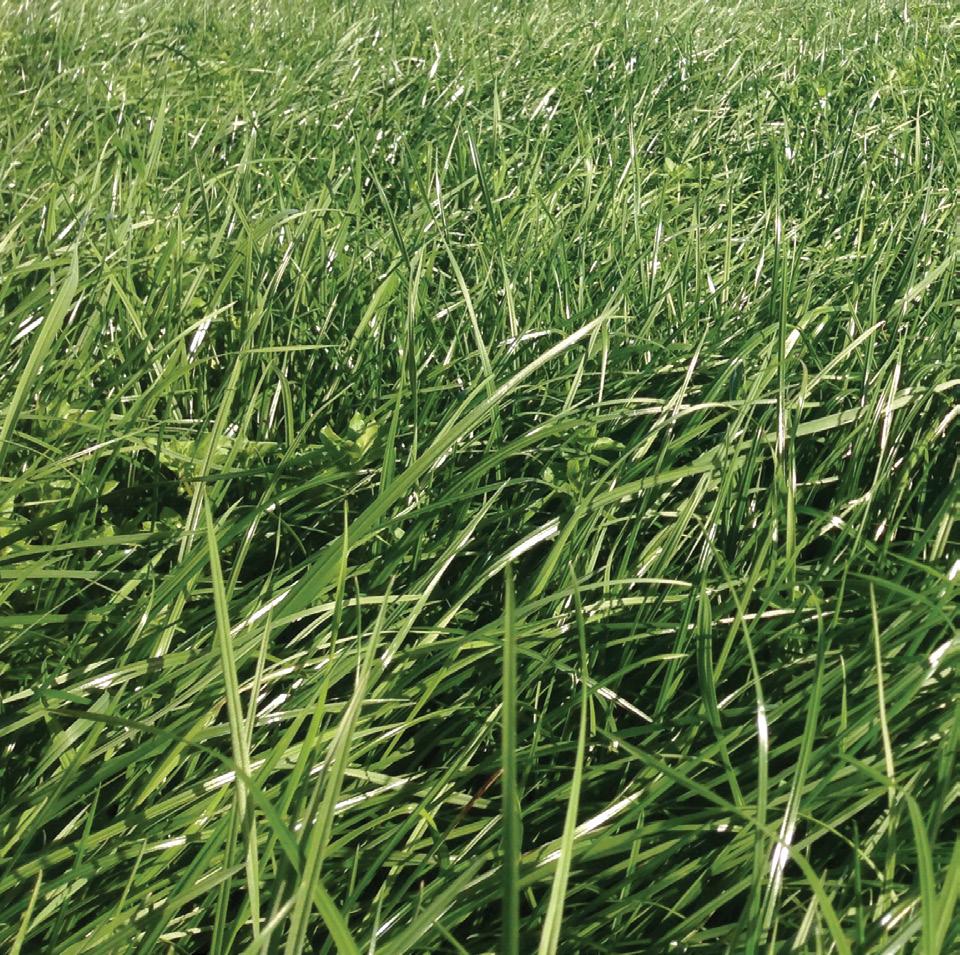
• Exceptionally fast to establish
• Even growth over the season
• Regrowth into the second season is very good, given favourable conditions
• Excellent disease resistance
Sow with other ryegrasses and clovers to maximise forage opportunities and fix free atmospheric nitrogen
Sowing rate
20-30kg/ha (sole) 15-25kg/ha (mixed)
Heading date (days) +17 Pasture life (years) 1 to 2
Rainfall/Irrigation Minimum 600mm+ p.a
Used for
Feast ® II tetraploid Italian ryegrass continues to perform strongly, providing exceptional winter and spring growth combined with low aftermath heading.
Feast II offers farmers an excellent return on investment achieved by multiple grazing opportunities during cooler months as well as high quality hay and silage later in the season.
• Rapid establishment
• Easily established by oversowing
• Proven disease resistance
• Good summer quality
Monitor fertility levels to optimise production

Sowing rate
25-35kg/ha (sole) 10-20kg/ha (mixed)
Heading date (days) +22 Pasture life (years) 1 to 2
Rainfall/Irrigation Minimum 600mm+ p.a
Used for
Fine leaf and increased dry matter production
Jackpot late flowering, diploid Italian ryegrass with a fine leaf is persistent and quick out of the ground. Bred for increased feed production, Jackpot produces high amounts of dry matter in winter and spring for up to 2 years.
The late spring growth of Jackpot allows farmers to take advantage of mid-spring rainfall and is an excellent option for traditional Italian ryegrass regions.
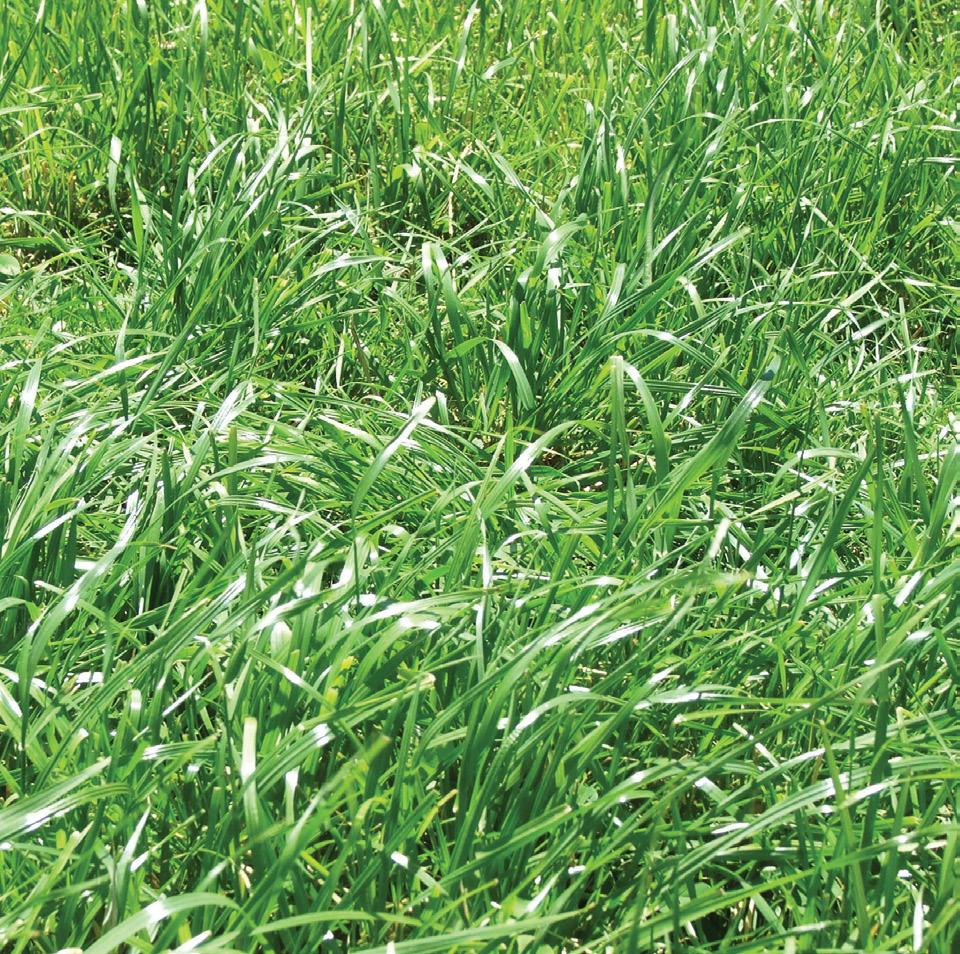
• Excellent long season production (+22 days)
• Strong second year survival
• Bred for increased dry matter production
• Fine leaf
Sowing rate
25-35kg/ha (sole) 10-20kg/ha (mixed)
Heading date (days) +28 Pasture life (years) 1 to 2
Rainfall/Irrigation Minimum 600mm+ p.a
Used for
All the benefits of a late heading date without the compromise
Mona tetraploid Italian ryegrass was bred to replace Jeanne, with improved production across all seasons, providing farmers with a high-quality, leafy feed all year round.

Mona's very late heading date extends farmers' spring grazing period and provides a high quality graze, cut of leafy forage or bulky silage. Uncompromised by its late heading, Mona displays good winter and early spring growth.
• Very late heading date (+28)
• Extended seasonal quality and improved summer survival
• Uncompromised by late heading date
• High quality forage and grazing
• Quality hay and bulky silage
Sowing rate 20-35kg/ha (sole) 10-20kg/ha (mixed)
Heading date (days) +19
Pasture life (years) 1 to 2
Rainfall/ Irrigation Minimum 600mm+ p.a
Used for
Persistent second year production and quick to establish
Knight is a fast establishing diploid Italian ryegrass with high winter yields. Performing in all seasons, Knight has good rust tolerance and is a great option for grazing, hay and silage in beef, sheep and dairy operations.
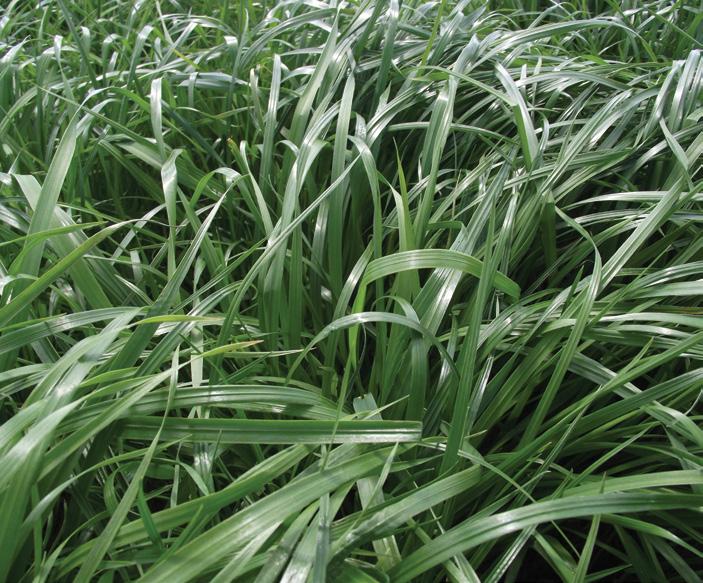
Knight’s increased early growth allows it to provide increased winter grazing’s, resulting in a strong start to spring. Knights’ persistence into/ during the second year (with favourable conditions) provides farmers with quality feed for longer making it a great addition to most pasture programmes.
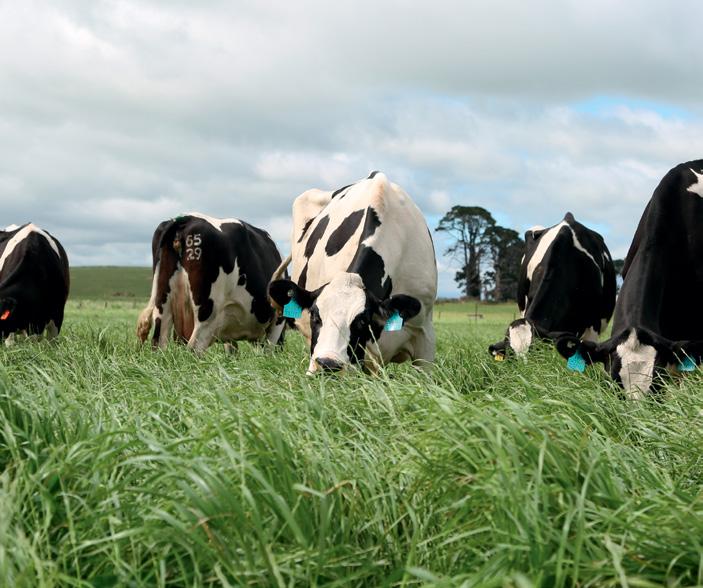
• Good tolerance to rust
• Good second year production in favourable seasons
• Ideal for late high-quality silage and hay production
• Quick to establish
Sowing rate
25-35kg/ha (sole) 15-25kg/ha (mixed)
Heading date (days) +17
Pasture life (years) 1 to 2
Rainfall/ Irrigation Minimum 600mm+ p.a
Used for
High yielding, late maturing Italian
Nourish® is a fast establishing tetraploid Italian ryegrass ideally suited to warmer northern environments. It offers excellent winter and early spring production as well as high quality hay and silage. Nourish can persist into the second year when conditions are favourable.

• Holds quality well through summer and autumn
• Fast establishment
• Better suited to warmer environments
• High yields
• Late to mature
Tetraploid Italian Ryegrass
Sowing rate 25-35kg/ha (sole) 15-25kg/ha (mixed)
Heading date (days) +22
Pasture life (years) 1 to 2
Rainfall/ Irrigation Minimum 600mm+ p.a
Used for
Quick to establish and late to flower
Selected for its high yields and rapid establishment, Thumpa displays the classic qualities of a good tetraploid Italian ryegrass. Quick to establish and Ideal for rotational grazing, Thumpa is an excellent winter crop solution for Australian sheep, beef or dairy farmers.
As a tetraploid that flowers late, Thumpa stays upright and provides high quality feed late into the season.
• High quality grazing, hay and silage
• High yielding
• Strong seedling vigour and early winter growth

• Valuable feed wedge heading into winter
• Late flowering



To maximise profits, our Research and Development team undertook sowing rate response experiments on four Italian ryegrass cultivars with rates between 5 and 80kg seed/ha, determining yield over five and four harvests in 2013 and 2014.
Throughout the trial, we determined that farmers can increase their return on investment and achieve an extra $120/ha, by increasing their sowing rate from 25kg/ha to 35kg/ha.
Italian ryegrass sowing rate comparison: Leigh Creek, Victoria

At first harvest, yield was directly linked to increased sowing rates. For example, Feast II® yield increased from 1221kgDM/ ha at 20kg/ha to 1620kgDM/ha at 40kg/ha. By the third harvest there was no significant difference between the sowing rates. This confirms that the sowing rate directly affects autumn and/or winter growth rates in Italian ryegrass.
FIGURE 8: Sowing rate of Feast II Italian ryegrass directly effects yield at first cut
FIGURE 9: Cost of increasing seed per hectare and the cumulative change in profit from increasing sowing rate
Sowing
kg/ha t DM/ha kg DM/ha $/ha based on a supplementary feed cost of $300/t DM 25 10.69 240 $32 $72 $40 $89 30 10.91 220 $32 $66 $34 $123 35 11.09 180 $32 $54 $22 $145 40 11.24 150 $32 $45 $13 $158
• 400kgDM/ha extra feed grown by increasing sowing rate from 25kg/ha to 35kg/ha
• Extra seed cost = $6.40/kg treated Italian ryegrass (Feast® II) = $64/ha
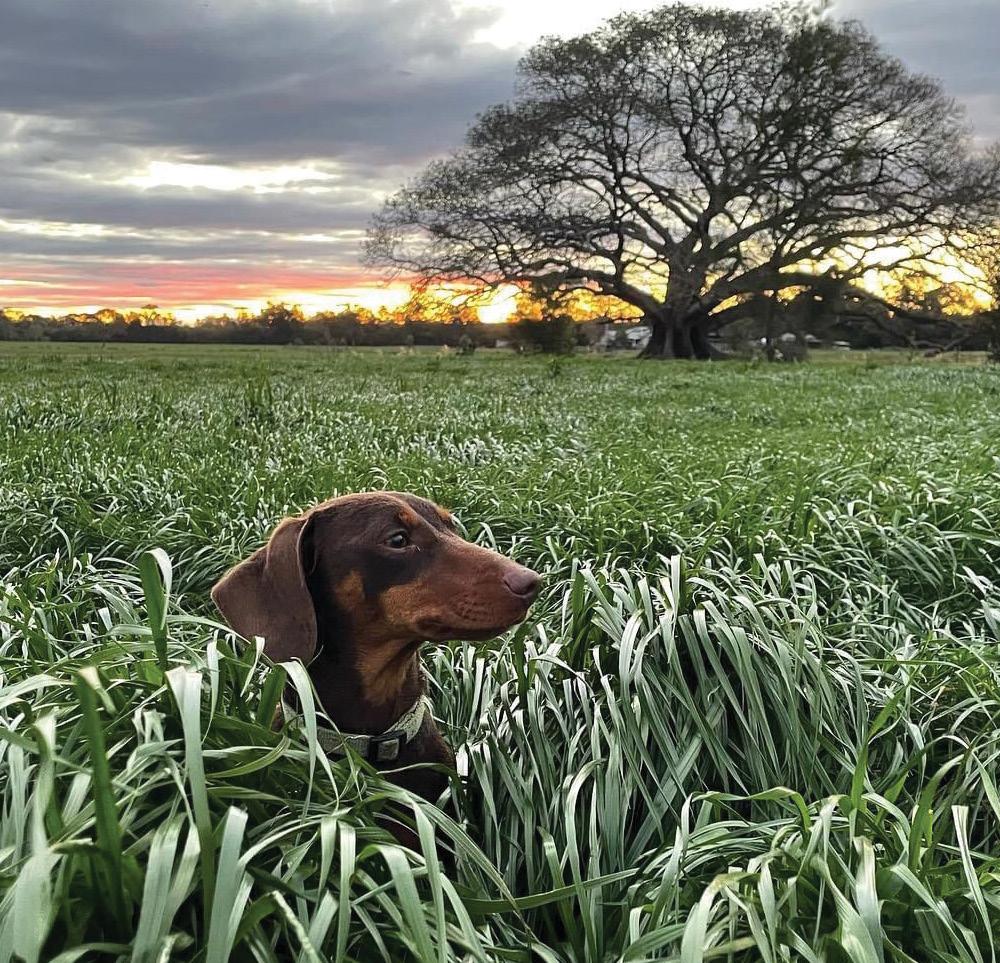
• Supplementary feed cost valued at $300/t DM
• By increasing sowing rate from 25kg/ha to 35kg/ha, additional dry matter was grown achieving 400kg DM/ha which is equivalent to $120/ha extra value to farmer
• Return on investment - $120/ha – $64/ha (extra cost of 10kg seed) = $56/ha advantage

Ultimately, yield can increase by approximately 1129kg DM/ ha from 15kg seed/ha to a sowing rate of 40kg/ha
Our recommendations
Based on this trial, we recommend sowing Italian ryegrass pastures at 35kg/ha to achieve the positive change in profit referenced in figure 9.
For the full set of data and economic analysis please contact your DLF Seeds Sales Agronomist.
Annual
At DLF Seeds, we offer a range of proprietary ryegrass options suitable for most conditions and environments across Australia. Alongside DLF Seeds proprietary seed varieties, we also supply varieties such as fast establishing, Astro® tetraploid annual ryegrass. To find about more, contact us on 1800 619 910 or visit dlfseeds.com.au/contact/contact-us.

Sowing rate
25-40kg/ha (sole) 15-25kg/ha (mixed)
Heading date (days) +9 Pasture life (years) 1
Rainfall/Irrigation Minimum 500mm p.a
Used for
Maintain quality late into the season with Ascend
Ascend was selected by plant breeders for its exceptional seedling vigour and ability to provide valuable forage from early winter through until late in the growing season. With improved rust tolerance, Ascend maintains high leaf quality enabling excellent pasture utilisation as well as silage and hay quality during the spring and summer months.
• Exceptional seedling vigour
• Improved early winter production
• High rust tolerance
• Maintains quality late into the season
• Offers real flexibility
Excellent total dry matter production
Sowing rate
25-40kg/ha (sole) 15-25kg/ha (mixed)
Heading date (days) +3 Pasture life (years) 1
Rainfall/Irrigation Minimum 500mm p.a
Used for
Early maturing (+3) Astro® annual ryegrass continues to be a great low cost option when quick winter feed is the priority. Astro’s excellent seedling vigour combined with early maturity provides growers the option of early winter to spring grazing along with an early cut of silage enabling timely preparation for sowing of summer forage crops.
The combination of impressive seasonal dry matter yields and fast post grazing recovery means Astro can be relied on to supply quality feed during those times of the year when you need it most.
• Good seedling vigour and pasture establishment


• Rapid post grazing recovery
• Bred for improved rust and leaf spot resistance
• Early heading ryegrass suited to silage/early hay production
Ideal short term grazing option prior to sowing paddocks to summer forage crop in spring
Sowing rate
25-40kg/ha (sole) 15-25kg/ha (mixed)
Heading date (days) +18 Pasture life (years) 1
Rainfall/Irrigation Minimum 500mm p.a
Used for
With the rapid establishment of Jivet tetraploid annual ryegrass, farmers benefit from excellent winter production and maintained spring quality. Jivet's +18 heading date provides a long growth period, allowing for a high stock carrying capacity, additional grazings and flexibility.
Jivet's large upright leaf, ease of mowing, disease resistance and high Metabolisable Energy (ME) for increased animal performance provides farmers with high-quality, easy-to-harvest silage and quality grazing opportunities.

• Rapid establishment and strong winter production
• Excellent quality silage
• Maintained spring quality
• Excellent disease resistance
• Strong animal performance
Sowing rate
25-40kg/ha (sole) 15-25kg/ha (mixed)
Heading date (days) +8 Pasture life (years) 1
Rainfall/Irrigation Minimum 500mm p.a
Used for
Rapid recovery
Mach® 1 is a fast establishing, high yielding tetraploid annual ryegrass that produces high quality feed well into spring and early summer. It has excellent recovery from grazing, matures late and is a great option for quality hay and silage. Rotationally graze for maximum growth rates and apply hay booster type fertilisers for extra dry matter production.

• Good seedling vigour and pasture establishment
• Rapid post grazing recovery
• Bred for improved rust and leaf spot resistance
• Mid heading (+8) ryegrass suited to silage/early hay production
Get the most out of your operation with a Programmed Approach™ to pasture renewal.
1st Autumn glyphosate Glyphosate + insecticide 2nd Autumn glyphosate
February
October March
Old pasture
New perennial pasture
- Break perennial weed cycle
- Encourage forward planning Yield
Capital fertiliser & lime Annual ryegrass Ascend, Mach 1®, Astro®
Summer brassica or chicory crop of Mainstar, Titan, Pasja II, Hunter, Goliath ® , Barkant, Rival, Pallaton*, Puna II, Choice or Rocket Fuel™
- Break standard endophyte cycle
Improving your pastures allows you to capture the best value and return from your land. The Programmed Approach is an easy to follow step-by-step process to help you improve your pasture and increase the supply and quality of your farm grown feed, all year round.
* Pallaton Raphno® is available through accredited retailers only.
The Programmed Approach to pasture renewal allows a farmer to capture the full value of improved pasture genetics in today’s new grasses and legumes. It encourages the view that by treating pastures as a crop, farmers ensure they have a good supply of quality, homegrown feed all year round.
Background Brassicas Grasses
Brassica crops are an integral part of a systematic approach to pasture renewal. As excellent sources of high-quality feed, brassicas improve animal productivity due to the high quantities of forage available for grazing. Brassicas also allow the use of selective chemistry, which is an essential part of cleaning paddocks up before perennial pastures are sown.
Annual and Italian ryegrasses can also be used in conjunction with brassicas (refer to: break the perennial weed cycle phase). By starting the Programmed Approach in autumn, the autumn application of glyphosate offers a better long term control option for hard to kill perennial grasses and weeds due to important translocation during autumn.
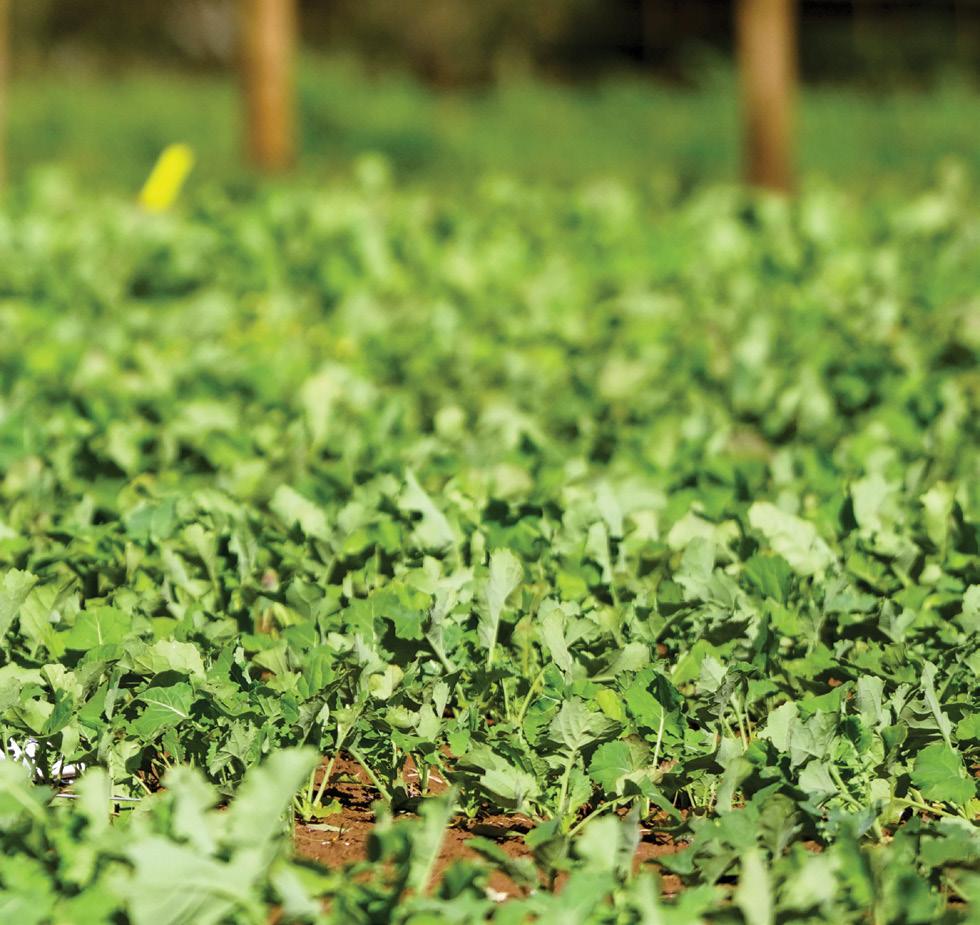
• Improved supply of high energy feed all year round
• Opportunity to break the perennial weed cycle using glyphosate, leading to pastures free of Couch, Californian Thistle, Kikuyu, Paspalum
• Introduce improved chemistry within cycle (brassica crop herbicides)
• Opportunity to break the standard endophyte cycle to allow summer safe grazing and the introduction of novel endophytes
• Encourages forward planning and the opportunity to address fertility and drainage issues earlier, resulting in more productive pastures and crops

• Increases the success of establishing a new perennial pasture
• Reduces the requirement for more expensive or bought in supplementary feed
1. Identify poor performing paddocks before soil testing (sparse plant population)
2. Soil test before starting the Programmed Approach and six months before planting a brassica
3. Spray out existing pasture with glyphosate (+ an applicable herbicide spike e.g. Hammer) to control all pasture and weed species including clover
4. Direct drill an Ultrastrike® treated winter active ryegrass such as Ascend, Mach 1®, Astro®, Abundant or Jivet
5. Spray out annual ryegrass with glyphosate + insecticide in spring

6. Sow a brassica or chicory crop of Mainstar, Titan, Pasja II, Hunter, Goliath®, Barkant, Rival, Pallaton*, Puna II, Choice or Rocket Fuel™
7. Manage brassica or chicory crop effectively
8. After autumn rains, spray out germinating weeds with glyphosate when full germination has occurred
9. Prepare paddock and sow an elite perennial pasture variety such as Base AR37, Reason AR37, Vast AR37, Reward Endo5™, Platform AR37#, Legion AR37#, One50 AR37, Reason AR37, Confederate, Quantica MaxP®, or Hummer MaxP® mixed with DLF Seeds proprietary clovers
10. Introduce new pasture management
Note:
Refer to dlfseeds.com.au for full version of the Programmed Approach™ to pasture renewal or contact your DLF Seeds Sales Agronomist.
* Pallaton Raphno® is available through accredited retailers only.
# Platform and Legion have been bred, selected and successfully tested as perennials and will function as a perennial ryegrass. Due to small number of tip awns, Platform and Legion are certified as Lolium boucheanum
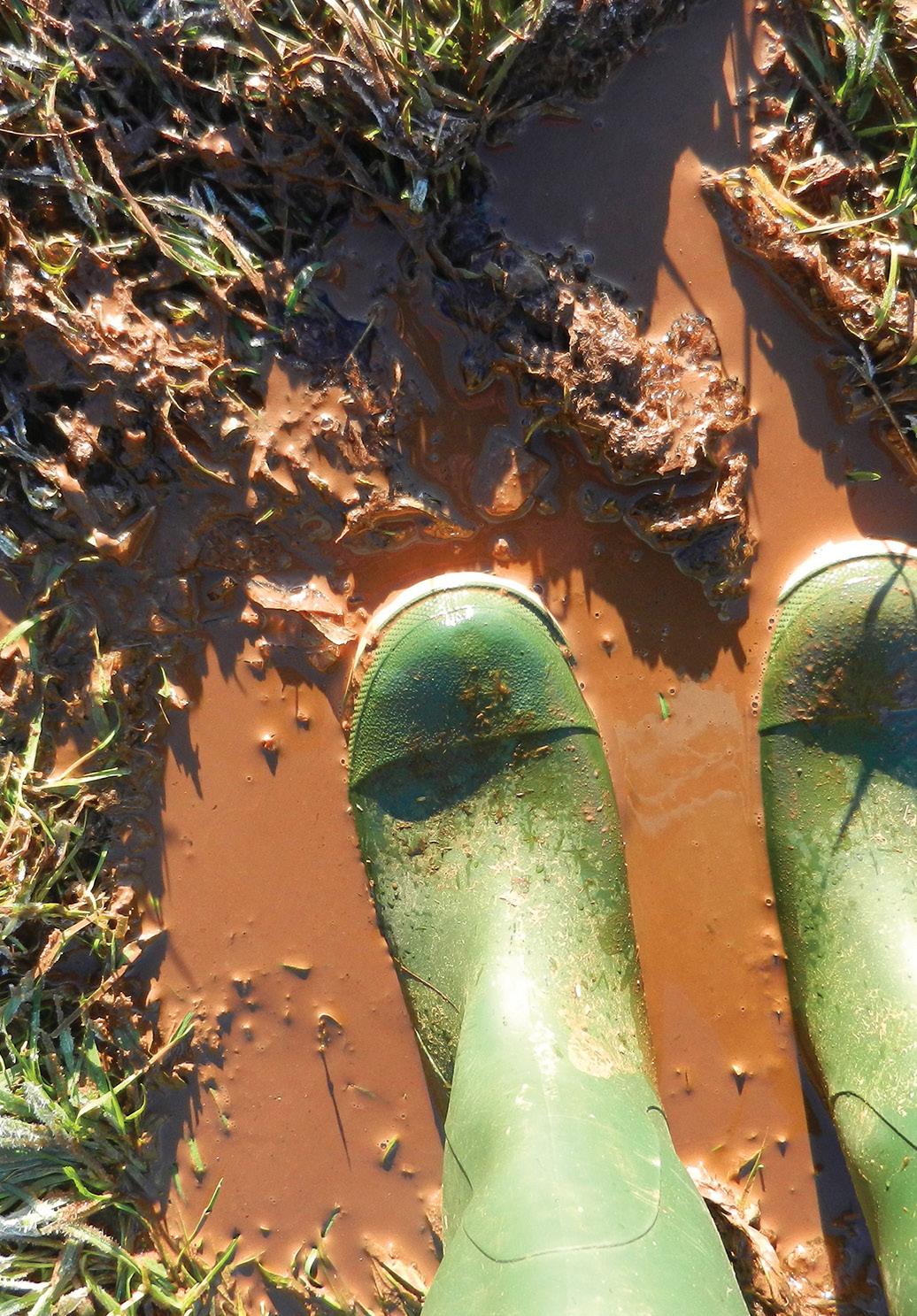
A wet winter can create a situation where many dairy pastures have been pugged/damaged by cows, which can result in pasture production losses of up to 25%. It also presents an opportunity for weeds to invade, particularly difficult to control weeds such as dock. Good early management of this problem can quickly restore paddocks back to productivity for late spring and summer and ensures they will give the best response to autumn rains.
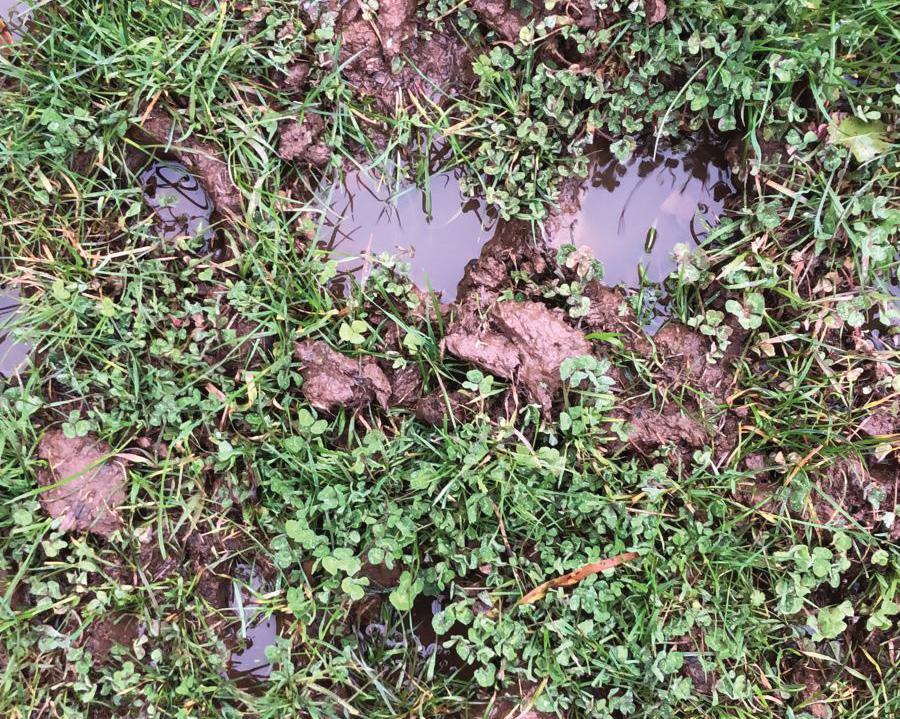
Depending on damage, consider the below ploidy and sowing rates.
• 10 - 20% damage: Oversow a diploid perennial blend at 15kg/ha
• 20 - 35% damage: Oversow a diploid medium term blend at20 kg/ha
• 35 - 50% damage: Oversow a diploid short term blend at 25kg/ha
• New pastures with 50% or more damage: Oversow a diploid perennial blend at 25kg/ha
• Old pastures with 50% or more damage: Spray out and sow a summer brassica crop
Deep rooted perennial grasses are more suited to lower rainfall/dryland environments compared to perennial ryegrass varieties due to their ability to extract water from deeper in the soil profile and tolerate higher summer temperatures. Deep rooted perennials will also differ in endophyte status and alkaloid production which can have significant effects on animal production. It is important to select the right deep rooted perennial for your system, climate and soil type.

Our range of high quality, proprietary tall fescue varieties includes:
Agricom product portfolio: Hummer MaxP ® and Hummer LE continental tall fescue
DLF Seeds product portfolio: Tower continental tall fescue
PGG Wrightson Seeds product portfolio: Quantica MaxP ® continental tall fescue and Temora winter active tall fescue
Tall fescue is a highly productive perennial grass with a deep fibrous root system, most suited to deep, heavy, fertile soil conditions. Tall fescue tolerates wet soils and short periods of flooding, but also has moderate drought tolerance. There are two types of tall fescues grown in Australia. Continental types grow vigorously in spring and early autumn but have slow winter growth. They are highly productive over summer where they respond particularly well to summer moisture in hot conditions that is often limiting to perennial ryegrass performance.
Mediterranean varieties are more winter active and summer dormant so they can tolerate summer drought better than continental varieties. They have a more pronounced winter and early spring growth pattern, similar to phalaris. The level of summer dormancy varies with cultivar. Both Mediterranean and continental tall fescues have an explosive spring growth habit and will require rotational grazing to keep biomass down. Tall fescue pastures have been known to survive for over 10 years when appropriate grazing management has been used and soil fertility is maintained. Newer generation tall fescues have been bred for softer leaves leading to increased palatability while MaxP ® novel endophyte in continental types extends its persistence markedly.
Our range of high quality, proprietary cocksfoot varieties includes:
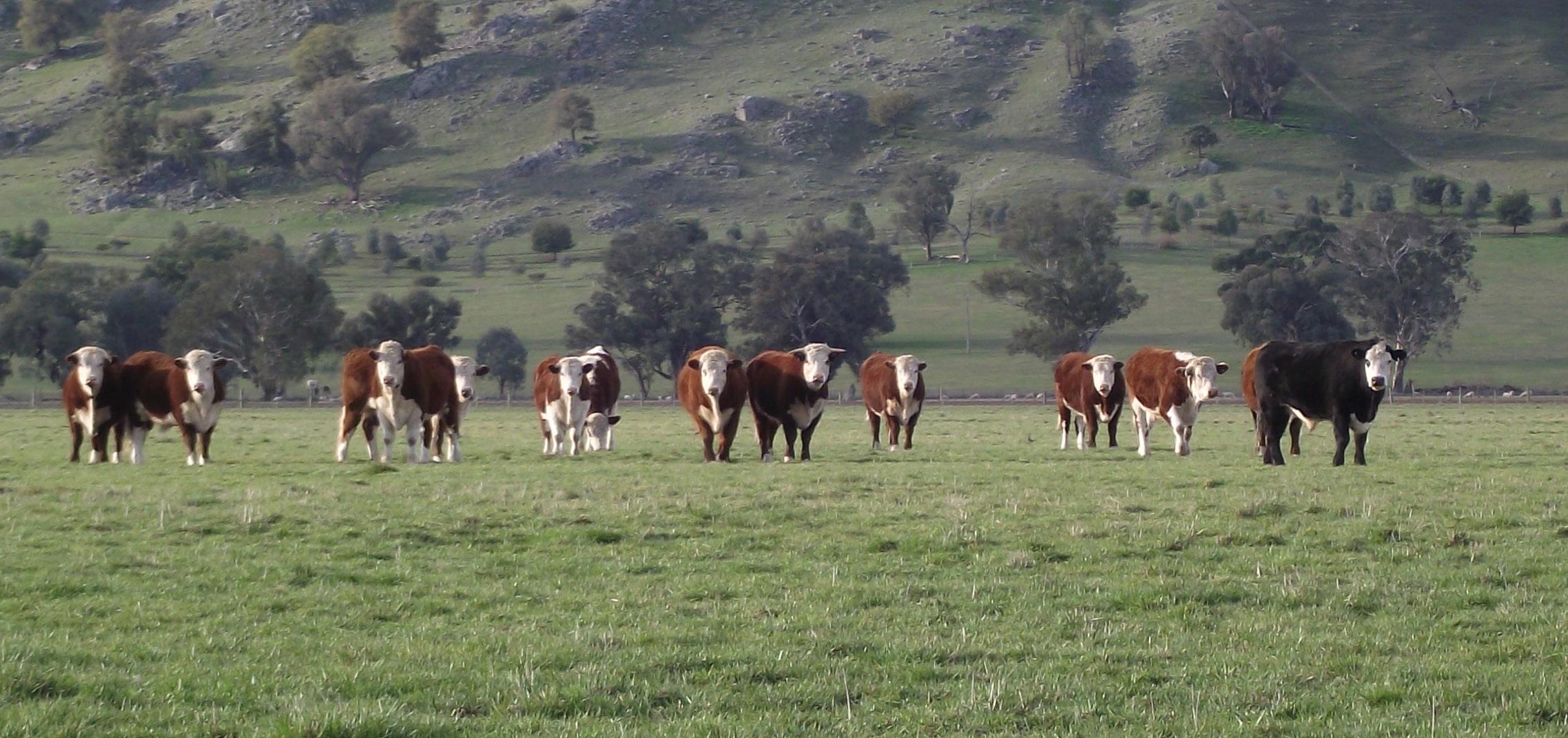
product portfolio: Savvy cocksfoot
DLF Seeds product portfolio: Uplands cocksfoot PGG Wrightson Seeds product portfolio: Aurus cocksfoot
Cocksfoot is a moderately deep rooted perennial grass most suited to well drained soils. It exhibits better drought tolerance and improved tolerance to acidic soils, compared with perennial ryegrass. There are two types of cocksfoot grown in Australia. Continental cocksfoot tends to actively grow throughout the year. It is very responsive to summer rainfall events, often being the first plant to have new leaves emerge.
Hispanic cocksfoot’s are suited to regions where hot dry summers and mild winters are not uncommon. They tend to grow vigorously from autumn to spring and go dormant over summer giving them higher drought tolerance than the continental types. The value of cocksfoot is its ability to persist and be productive in dry, moderately fertile, light free draining soils. It is an option to be considered in areas where ryegrass persistence is unachievable. Cocksfoot’s do not contain toxic substances making them a safe option for grazing. To maintain legume content, cocksfoot can be sown with lucerne and clovers, depending on when feed is required.
Our range of high quality, proprietary phalaris varieties includes:
PGG
Phalaris is a deep rooted perennial grass species suited to dryland pastoral systems that require autumn, winter and spring production. It is very persistent and drought tolerant once established due to its deep taproot system. It is best suited to high fertility, heavy textured, deep soils and is more tolerant to wet soils, flooding and saline soils than other grass species. Subterranean clovers are an ideal legume companion for phalaris however, careful grazing management is required to maintain legume density and feed quality. Phalaris is reasonably slow to establish so careful attention needs to be paid to weeds and pests to ensure the success of the stand. Phalaris staggers or phalaris toxicity can affect stock that is grazing phalaris. The risk of this occurring is generally highest in autumn and winter when plants are short, and occurrence of frosts is high.
Our range of high quality, proprietary prairie varieties includes:
Agricom product portfolio: Atom prairie grass

PGG Wrightson Seeds product portfolio: Leona prairie grass
Prairie grass is an alternative short to long rotation forage option providing high quality feed in late summer/autumn and late winter/early spring when moisture allows. It has good winter production, similar to short rotation ryegrasses, making it a useful pasture tool during cooler conditions as well. Prairie grass is more heat tolerant than ryegrass and the palatability remains high, even at seed set. As a rule, it will be most productive on highly fertile well drained soils, with the best growth occurring on soils with a pH of (Ca) 5.5 or above. It will perform poorly on waterlogged soils. Prairie grass also has nil endophyte making it well suited for grazing by horses. Lax rotational grazing is recommended for prairie grass, making it ideal for sowing into older lucerne stands or into a mix with other species such as white clover, plantain and chicory. Stand life can be greatly extended by good management.
At DLF Seeds, we offer a range of proprietary ryegrass options suitable for most conditions and environments across Australia. Alongside DLF Seeds proprietary seed varieties, we also supply a strong range of common and other grass seed varieties. To find about more, contact us on 1800 619 910 or visit dlfseeds.com.au/contact/contact-us.
Grazing brome is a perennial grass species closely related to prairie grass. Grazing brome has a denser habit of fine tillers ensuring persistence under harsher climatic and grazing conditions. It is more perennial by nature than prairie grass. Grazing bromes perform best on well drained soils with moderate fertility and are suited to all classes of stock due to their densely tillered nature. Like prairie grass, grazing bromes can maintain their palatability even as standing feed in summer. Brome grasses work well as stand-alone, but the addition of clovers and herbs can extend the quality of the sward as well as fixing free atmospheric nitrogen.
Our range of high quality, proprietary grazing brome varieties includes: Mix
Summer active fescue with insect protection from MaxP ® endophyte

Hummer MaxP ® is a summer active tall fescue that displays excellent persistence under tough conditions and maintains density over time. Bred for soft leaves, grazing management is simpler when compared to coarser type fescues. Suitable for both dryland and irrigated conditions, Hummer MaxP tolerates heavy, wet and moderately saline soils and is more flexible than perennial ryegrass in hot conditions.
The added protection of MaxP endophyte means pastures are more protected from insect and moisture pressure. Sow Hummer MaxP as a mixed pasture with Ecotain® environmental plantain, clovers or chicory for a high performing mix that through the clovers fixes free atmospheric nitrogen.

• Fine, palatable leaf for greater stock utilisation
• High quality soft leaves
• High yields and autumn activity
• Deep rooted, persistent perennial
• Insect protection from MaxP ® endophyte
For more information on MaxP, see page 13

Control African Black Beetle, Agrentine Stem Weevil, Root Aphid and Field Cricket (limited control of Field Cricket) with MaxP endophyte. MaxP endophyte is a premium tall fescue protection with no known animal health impacts for beef, sheep and dairy.
MaxP ® endophyte offers tall fescue premium insect protection with no known animal health impacts for beef, sheep and dairy. It delivers excellent animal performance, provides a moderate range of insect protection and increased milk production compared to ryegrass cultivars containing standard endophytes (SE).
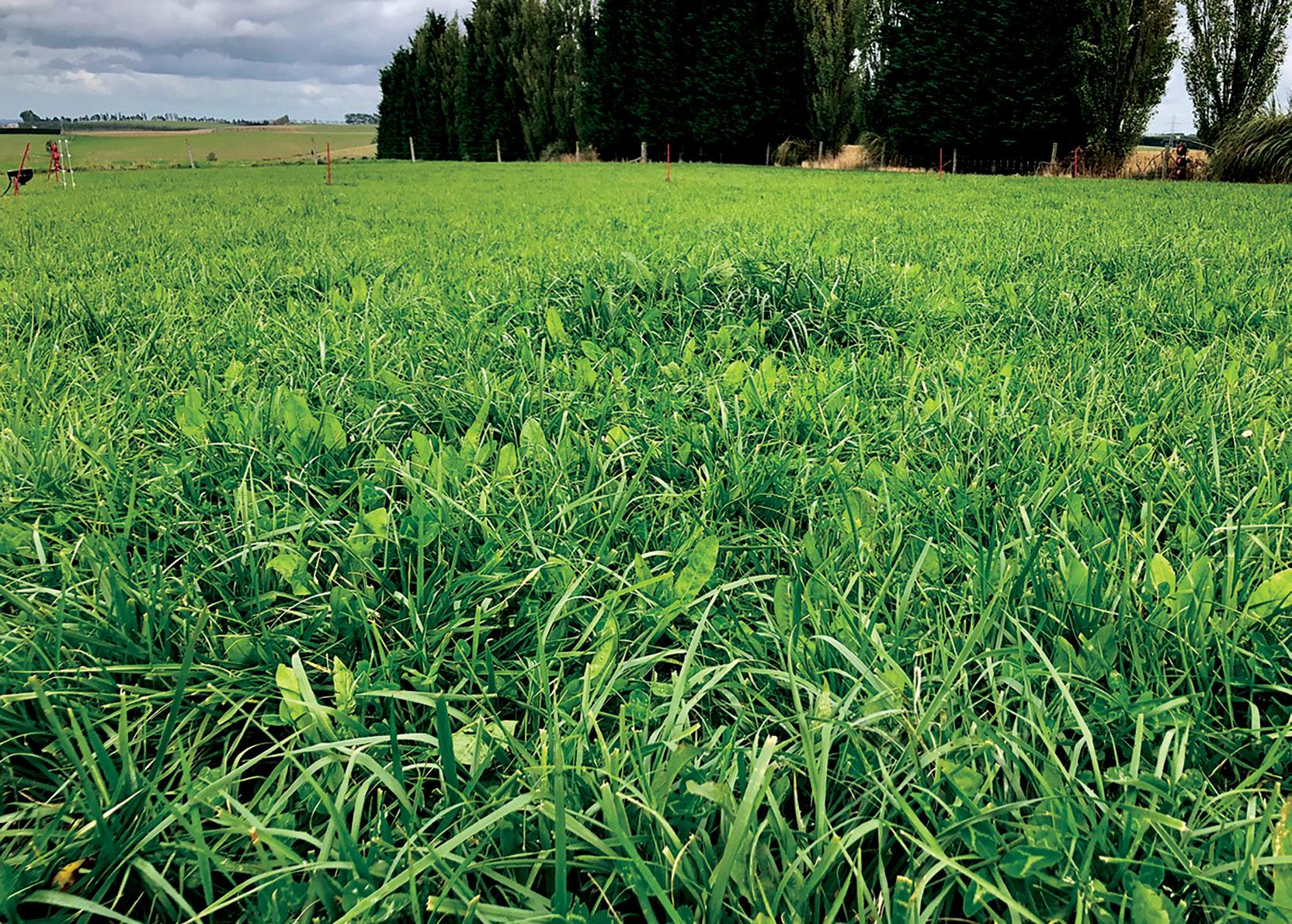
®
CONTINENTAL TALL FESCUE
Soft, fine leaved continental tall fescue with strong insect protection
Quantica is a soft, finely leaved continental tall fescue selected for improved animal palatability and rust resistance. Quantica is a deep rooted, robust, productive variety offering more persistence than perennial ryegrass and can tolerate waterlogging, salinity, pasture pests (from MaxP ® endophyte), heat and some drought conditions.
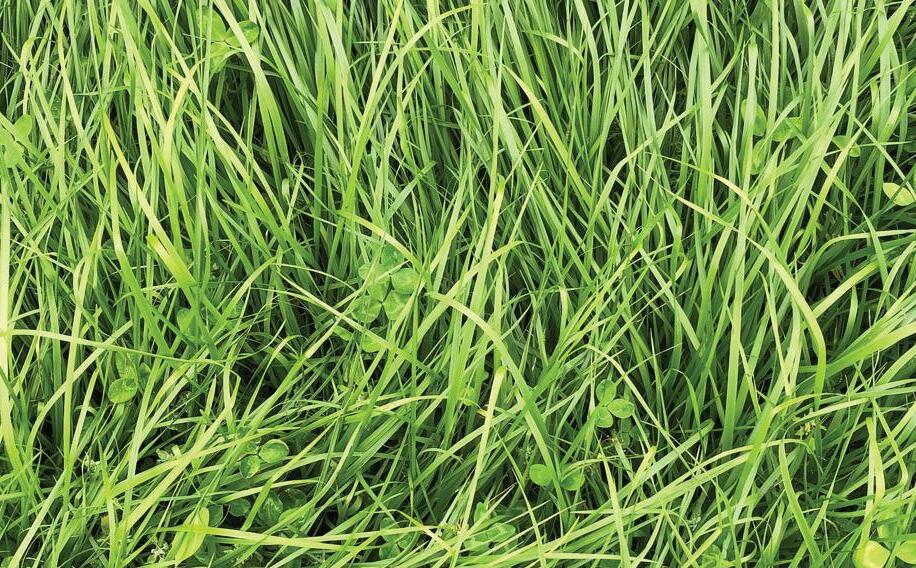
• Soft fine leaves providing increased palatability
• Trialled and tested in Australian conditions
• Insect protection from MaxP ® endophyte
• Improved cool season growth and low aftermath heading
• Excellent dryland production and autumn drought recovery
• High disease resistance (crown rust)
For more information on MaxP, see page 13
Sowing rate
4-15kg/ha (sole) 10-20kg/ha (mixed)
Heading date (days) Early Pasture life (years) 5+
Rainfall/Irrigation Minimum 400mm p.a
Used for
Palatable with greater tiller density
Temora Mediterranean tall fescue is a summer dormant, deep rooted perennial that offers improved persistence for Australian producers. Temora has been bred for greater tiller density, leading to increased yield at critical times such as autumn and winter. Ideally suited for low to medium rainfall areas with heavier soil types, Temora is a great option for filling the feed gap soon after the opening rains.
• Summer dormant
• Increased tiller density
• Excellent seasonal dry matter production
• Extremely palatable when rotationally grazed
Sowing rate
20-25kg/ha (sole) 10-20kg/ha (mixed)
Heading date (days) Late Pasture life (years) 3+
Rainfall/Irrigation Minimum 700mm p.a
Used for
Quality feed that's easy to manage
Adapted to a wide range of soil types, Tower summer active tall fescue provides farmers with all the benefits of a modern tall fescue. Adapted to a wide range of soils, Tower is a resilient tall fescue that is drought tolerant, tolerant of wet/poor draining soils and some insects such as Grass Grub and Porina (like all tall fescue varieties). Tower may contain low levels of Protek endophyte and is not suitable for horses.

• Palatable fescue delivering high animal performance
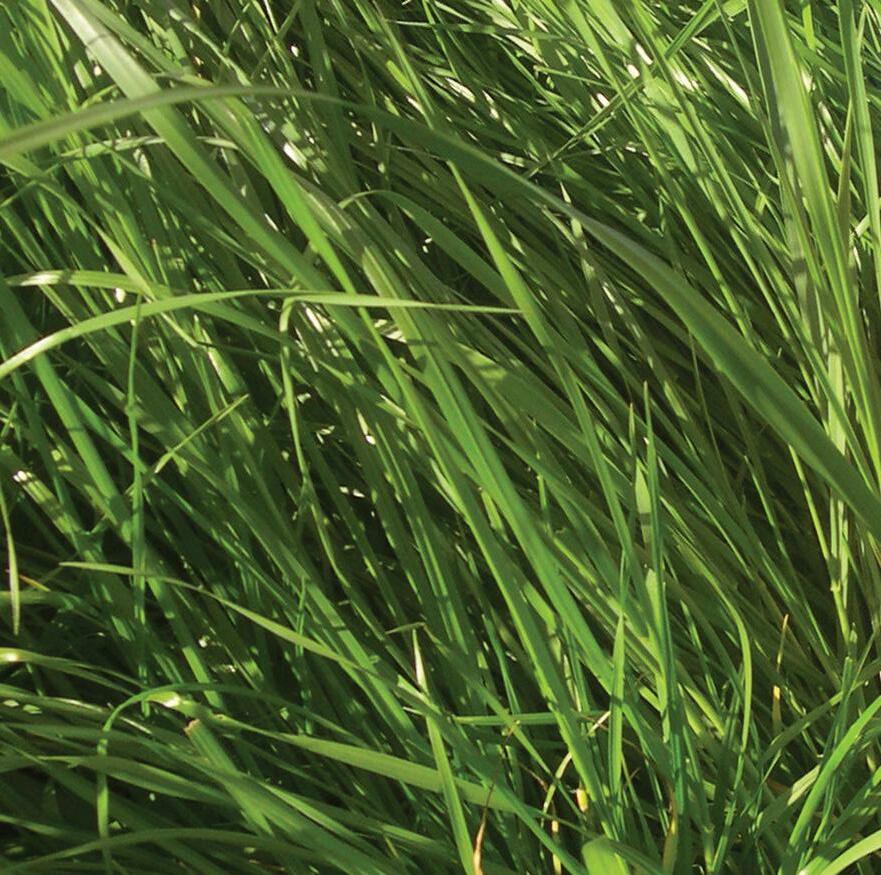
• Adapted to a wide range of soils, including wet/ poorly drained
• Frost tolerant when compared to phalaris and cocksfoot
• High quality pasture late into spring and summer
For improved production, sow Hummer MaxP® or Quantica MaxP ® continental tall fescue
When I was planning to improve our pastures on our property at High Range, a common response from some of the locals was: It won’t work, it's a waste of money and good luck to you!
We have made it work and are now heading into year 3 with a pasture blend* that contains Platform AR37 perennial ryegrass, Aurus cocksfoot, Confederate phalaris, Bindoon sub clover and Quantum II MaxP tall fescue. This blend has been a huge success with lush rich pastures throughout the whole year. In 2021, we baled more silage than ever before. Our Wagyu and Angus cattle are thriving and the weight gains are excellent.

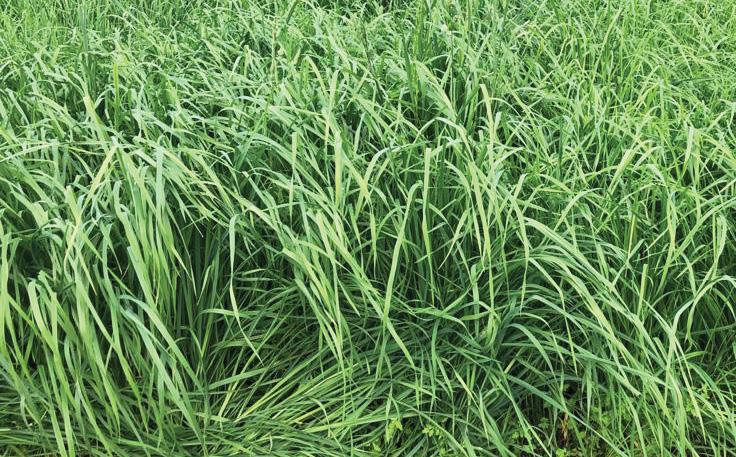
Strong winter growth and overall total yield
Aurus is an upright, summer active cocksfoot with strong winter growth and a parentage that combines Uruguayan and French genetics. This combination provides both good winter growth and overall total yield. For a cocksfoot, Aurus displays strong seedling vigour and establishment and with its upright growth habit is well suited to being sown with clover or lucerne mixed pasture swards.
Being a continental cocksfoot, it has very good drought tolerance compared to many other perennial grass species and excellent reseeding ability. Aurus cocksfoot is a very persistent grass when sown in appropriate rainfall zones with the ability to provide important forage production after tough dry periods and during cooler times of the year.
• High yielding variety with improved winter activity over Tekapo
• Upright growth habit
• Strong seedling vigour enabling rapid establishment
• Excellent reseeding ability to ensure strong persistence
• Excellent drought tolerance in an appropriate rainfall zone
Confederate phalaris is a winter active phalaris that is best suited to 500mm+ rainfall and heavier soil types. It has a similar growth habit to Sirosa and Holdfast. The selection criteria was for strong winter activity combined with low alkaloid production and improved late season growth. Prefers rotational grazing, tolerates periods of set stocking.
Bred in Australia, Confederate phalaris has been trialled extensively at Ballarat (VIC), Lismore (VIC), Maryborough (VIC) and central/southern NSW alongside many of the commercially available phalaris varieties. It has proven itself as a strong performing, winter active variety with excellent seasonal dry matter production, good persistence and the benefit of low alkaloids levels.

• Winter active with excellent dry matter production
• Selected for disease resistance to maintain high quality feed
• Excellent companion with clovers to provide high quality pastures for dryland systems
Low levels of the alkaloids which are known to cause phalaris staggers
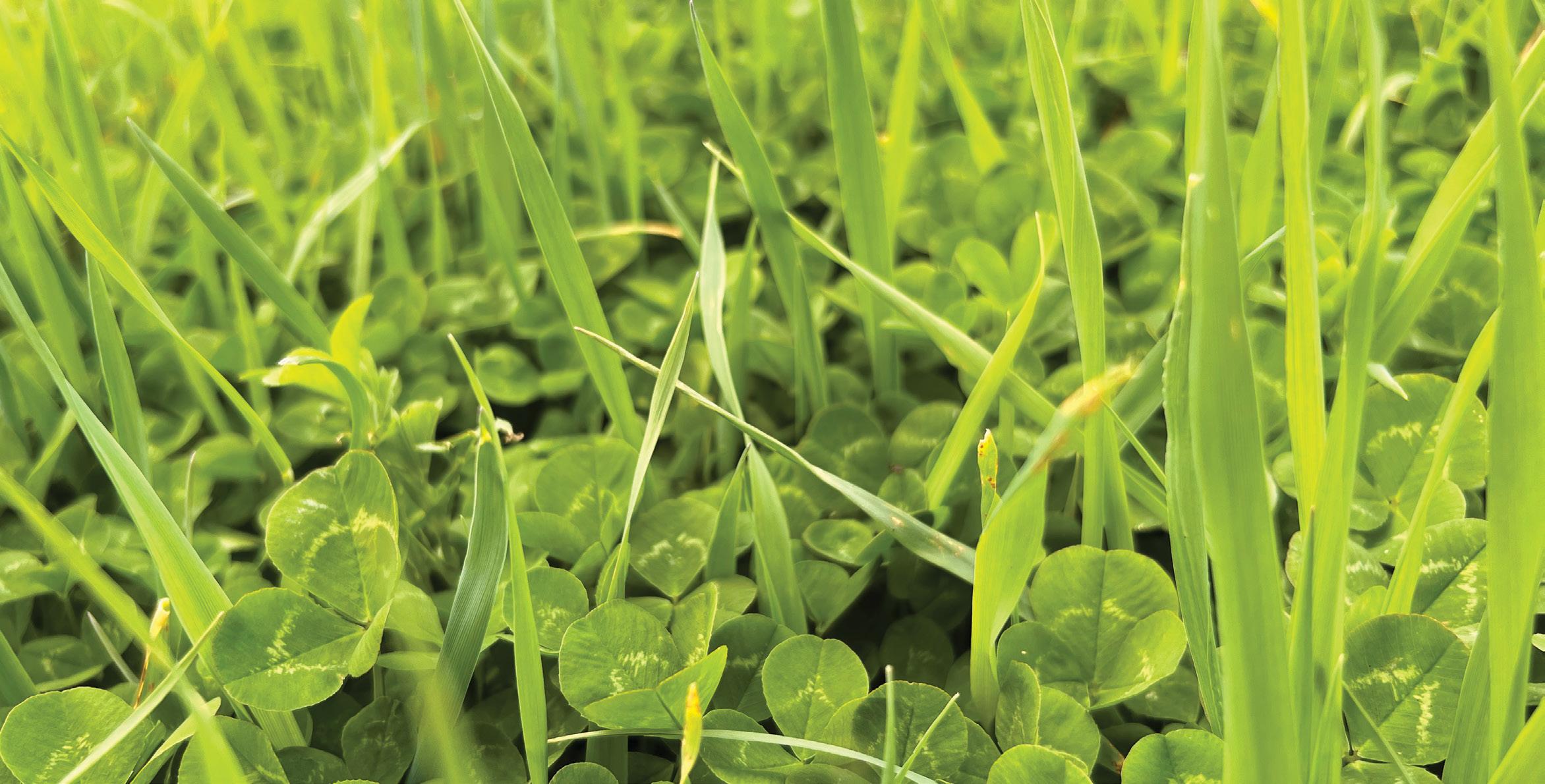
Sowing rate
8-10kg/ha (sole) 4-6kg/ha (mixed)
Heading date (days) Mid Pasture life (years) 5+
Rainfall/Irrigation Minimum +700mm p.a
Used for
Savvy Cocksfoot is a new age, high yielding cocksfoot suited to high rainfall environments.Providing high production levels in all seasons, it maintains summer quality and palatability due to its low aftermath heading and soft leaves. Unlike many other cocksfoot varieties, Savvy has exceptional disease resistance and has been bred to tolerate hard grazing in cattle and sheep systems, ensuring excellent recovery and persistence in a range of conditions.
• High autumn and winter production
• High quality and very leafy with summer moisture
• Bred for soft fine leaves
• Disease tolerant with Increased palatability
• Suited to well drained sandy loam soils
• Tolerates acidic soils where perennial ryegrass struggles to persist


Sowing rate 8-10kg/ha (sole) 4-6kg/ha (mixed)
Heading date (days) Mid Pasture life (years) 5+
Rainfall/Irrigation Minimum 350mm p.a
Used for
Highly drought tolerant
Uplands is a Hispanica cocksfoot suited to rainfall of 350mm+. It is a compact densely tillered, fine leaved Mediterranean cocksfoot, with a high level of drought tolerance. Semi dormant over summer to maximise persistence, Uplands is slow to establish, then provides a productive and persistent pasture with higher levels of animal acceptance over Porto.
• Semi-dormant over summer with a level of drought tolerance
• Good persistence in drier areas
• Higher animal acceptance over Porto
Sowing rate
30-50kg/ha (sole) 20kg/ha (mixed)
Pasture life (years) 5+
Rainfall/ Irrigation Minimum 650mm p.a
Used for
Suited to high annual rainfall areas, Atom prairie grass was bred for improved palatability, hard grazing and tiller density. Extremely productive throughout the year and highly productive in well drained soils. No known animal health issues and well suited to all stock classes.


• High quality, palatable feed
• High protein content
• Highly productive in well drained soils
• Grazing, hay and silage opportunities
• Tolerates hard grazing
Sowing rate
30-50kg/ha (sole) 20kg/ha (mixed)
Pasture life (years) 5+
Rainfall/ Irrigation Minimum 650mm p.a
Used for
The feed your animals will love
Leona is a prairie grass for Australian producers who are looking for improved productivity, quality and persistence. Leona has been selected for increased seedling vigour resulting in faster establishment, reducing the time to first graze. The palatability and improved winter yields of Leona result in high quality feed at a very valuable time of year.
• Improved seedling vigour
• Exceptional winter production
• High tiller density
• Improved persistence through higher reseeding
• Extremely palatable
Lower rates for fine, firm seed beds and high rates for broadcast and no till situation
Sowing rate 25kg/ha (sole) 20kg/ha (mixed)
Pasture life (years) 5+ Rainfall/ Irrigation Minimum 600mm p.a
Used for
Persistent in harsh conditions
Gala is a grazing brome that is an alternative to perennial ryegrass in harsh conditions. Gala is a highly productive and densely tillered winter active grass, which is an ideal companion to cocksfoot in slightly acidic, well drained soils. Persistent in harsher conditions when compared to Prairie grass, Gala demonstrates persistence under hard grazing and harsh climatic conditions.

• Densely tillered
• Perennial ryegrass alternative in harsh conditions
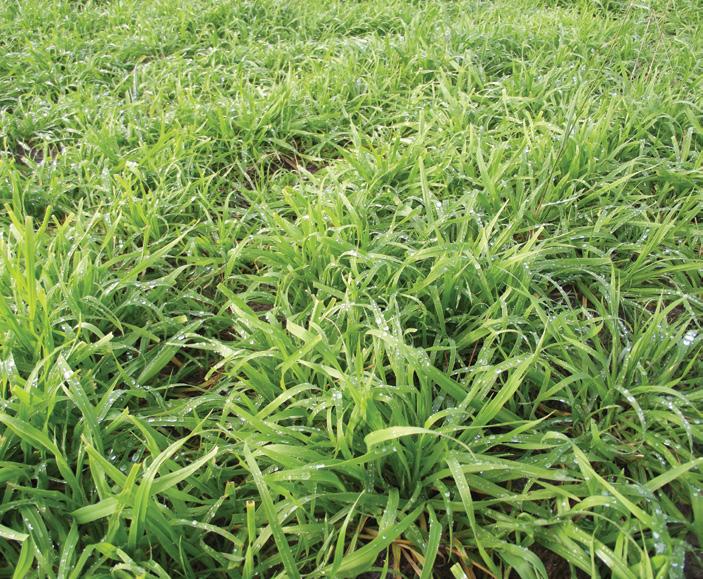
• Drought tolerant
• Strong autumn recovery
Fix free atmospheric Nitrogen with red, white, balansa, annual, arrowleaf and subterranean clovers.
Agricom product portfolio: Brace large leaf white clover, Nomad white clover, Tribute medium leaf white clover and Relish red clover.
DLF Seeds product portfolio: Coolamon, Bindoon and Izmir subterranean clover, Viper balansa clover, Agwest® bartolo bladder.
PGG Wrightson Seeds product portfolio: Hilltop small-leaf white clover, Quartz medium leaf white clover, Legacy large leaf white clover, Taipan balansa clover and Amigain red clover.
Common varieties available (more varieties available on request): Riverina, Goulburn, Leura, Trikkala, Seaton Park, Dalkeith and Urana subterranean clover and Shaftal Persian clover, Paradana balansa clover, common Arrowleaf clover, Haifa white clover and USA red clover.
At DLF Seeds, we offer a range of proprietary clover options suitable for most conditions and environments across Australia. Alongside DLF Seeds proprietary clover seed varieties, we also supply a strong range of common clover varieties including annual, arrowleaf, balansa, Persian clovers and more. To find about more, contact us on 1800 619 910 or visit dlfseeds.com.au/contact/contact-us.

Our range of high quality, proprietary clover varieties includes:
Brace white clover is a large leaved, high producing white clover ideally suited to high yielding grass pastures, including dairy and beef farming systems. As a Mainstay replacement, Brace is a new generation release from AgResearch’s white clover breeding programme in New Zealand which has performed well in Australian trials. Brace has set a new benchmark for dry matter production for a large leaf white clover showing a robust persistent nature under rotational cattle and dairy grazing systems.
• New generation of genetics for large-leaved white clover


• Very high spring and summer production
• Improved autumn and winter activity
• Ideal for dairy, beef and lamb finishing
A medium to large leaved white clover bred for drought tolerance and winter activity. Its performance against other medium to large leaved varieties in trials has been outstanding. Tribute also has good stolon density aiding in persistence.


• High stolon density to leaf size ratio
• Improved out of season production
• Suited to a wide range of farming systems
• Persistent within a mix • Versatile and productive
Sowing rate
3-5kg/ha (sole) 1-3kg/ha (mixed)
Rainfall/Irrigation Minimum 700mm p.a
Used for
Hilltop small-medium leaf white clover was bred to cope with more challenging environments from variable fertility to variable moisture availability or combinations of the two. It has a higher stolon density than Tahora II resulting in improved persistence and making it the ideal addition to those pastures where a robust white clover is required.


• Persistence from very high stolon density
• Ideally suited to dryland sheep grazing systems
• Good option for dry conditions providing minimal annual rainfall achieved
• Performs in low fertility conditions
Sowing rate
3-5kg/ha (sole) 1-3kg/ha (mixed)
Rainfall/Irrigation Minimum 650mm p.a
Used for
A small to medium leaved white clover, Nomad was selected for increased persistence and drought tolerance and is especially suited to dry environments. It is an excellent performer under dryland sheep grazing and grows mostly in spring, summer and autumn. Nomad has high nutritive value and is relatively tolerant of acidic soils. Great stolon density allows Nomad to persist in areas prone to low summer soil moisture levels.
• Small to medium-leaved white clover
• Bred for increased stolon recovery after dry summers
• Persistent under hard grazing
• A recommended inclusion in all dryland mixes
Limited stock available
Sowing rate
3-5kg/ha (sole) 1-3kg/ha (mixed)
Rainfall/Irrigation Minimum 800mm p.a
Used for
High performance, improved production
Legacy offers improved clover production in your high performing perennial pasture system. It is a large leaf white clover that brings greater persistence and improved year round production. Greater productivity and persistence of clover results in more nitrogen being generated to drive pasture performance.


• Exceptionally high yielding
• Large leaf size
• Greater winter and autumn productivity
Strong stolon activity for increased persistence
Sowing rate
3-5kg/ha (sole) 5-3kg/ha (mixed)
Rainfall/Irrigation Minimum 700mm p.a
Used for
Productive year-round performer
Quartz medium leaf white clover is an excellent yielding, persistent white clover that has broad adaptability across environments and farm systems. It performs well under sheep, beef and dairy grazing management. It has been bred for higher yield and increased stolon density resulting in greater persistence.
Quartz had been bred from the same programme that produced high performing clovers including Legacy.
• Improved persistence due to high stolon density
• Excellent dry matter yields
• Suited to a wide range of farming systems
• Outstanding seasonal production
Highly persistent with Red Legged Earth Mite resistance
Bindoon is a major breakthrough in subterranean clover. It offers the benefits of Red Legged Earth Mite resistance combined with highly productive mid season growth.

Bindoon is suited to a wide range of environments where sub clover is the base of a perennial pasture system. Red Legged Earth Mite resistance significantly increases the autumn and winter production as well as increases seed set which greatly enhances long term persistence.
• Resistant to Red Legged Earth Mite
• High dry matter production during autumn and winter
• Excellent seed set for increased persistence
• Significantly higher winter production than Seaton Park
• Ideally sown as part of a perennial pasture mix with grasses
Although Bindoon has Red Legged Earth Mite resistance, it is important to monitor the pasture for pest pressure to maximise establishment

Sowing rate 10-20kg/ha (sole) 6-10kg/ha (mixed)
Days to flower 136 Pasture life (years) 5+
Rainfall/Irrigation Minimum +600mm p.a
Used for
Offering improved seedling regeneration and improved winter and spring production, Coolamon is suited to a wide range of soil types and climatic regions. Displaying resistance to Red Legged Earth Mite and clover scorch, Coolamon provides farmers with high yields and dense swards.

Coolamon is a mid to mid to late maturing variety which can take advantage of extended seasonal conditions, giving longer growing seasons before setting large amounts of seed for the following seasons.
• Fixes free atmospheric Nitrogen
• High yields and dense swards
• Improved winter and spring production
• Long growing season
Sowing rate 10-20kg/ha (sole) 6-10kg/ha (mixed)
Days to flower 85 Pasture life (years) 5+
Rainfall/Irrigation Minimum +375mm p.a
Used for
Early maturing persistence
Suited to a wide range of soil types and climatic regions including low rainfall areas, an early maturing variety like Izmir ensures persistent as it grows in the short season, flowers, and then sets seed early. Very early to flower, Izmir will provide farmers with high winter production and extra herbage when it is needed most and fix free atmospheric Nitrogen. Izmir has very high hard seed levels, late seed softening and improved seed production.
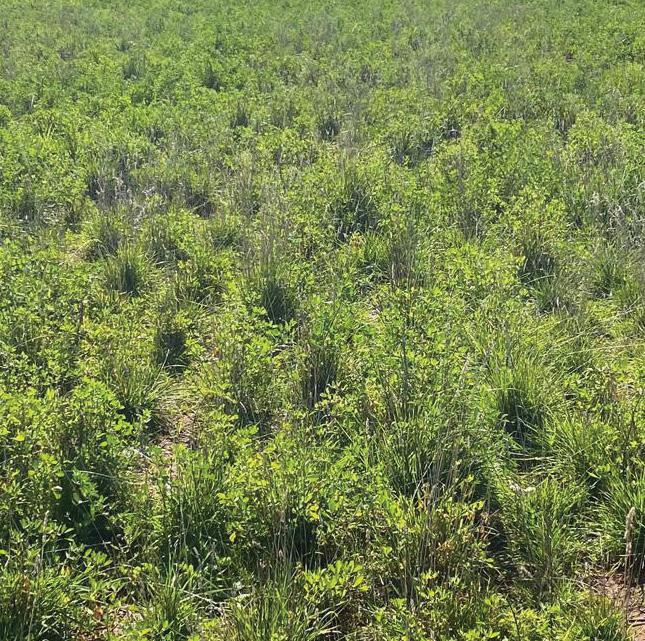
• Low oestrogen levels
• High winter production
• Superior dry matter production and seedling regeneration compared to Nungarin
Sowing rate
6-10kg/ha (sole) 1-3kg/ha (mixed)
Rainfall/Irrigation Minimum 700mm p.a
Used for
New generation red clover with increased persistance

Amigain is the latest generation red clover bred for increased persistence and growth in permanent or short term, high performance pastures. In a pasture mixture, Amigain provides spring, summer and autumn productivity ideal for increased animal performance, enhancing pasture management and fixing nitrogen. As a specialist multi year crop, Amigain provides high quality feed ideal for liveweight gain and/or improved condition scores of priority stock classes in sheep and beef systems.
• Bred to persist and perform in both pasture mixes and pure swards
• Semi prostrate growth habit to enhance persistence
• Excellent quality aiding animal production
• Selected for a more fibrous root system
• Lower formononetin (oestrogen) levels than older varieties
• Can improve soil Nitrogen – 20kgN fixed/tDM grown
Sowing rate
6-10kg/ha (sole) 1-3kg/ha (mixed)
Rainfall/Irrigation Minimum 700mm p.a
Used for
Early spring production
Relish perennial red clover offers strong persistence within grazing systems, high yields and a semi prostrate growth habit. Highly productive in early spring, Relish contains low levels of formononetin (oestrogen), making it suitable as a lambing forage and provides farmers with high quality grazing, hay or silage.

• Highly persistent within grazing systems
• High yield potential over time
• Semi-prostrate growth habit
• Low levels of formononetin (oestrogen)
Sowing rate
5-8kg/ha (sole) 1-2kg/ha (mixed)
Flowering date Mid Rainfall/Irrigation Minimum 450mm p.a
Used for
Outstanding balansa for low rainfall zones
Taipan is a mid maturing balansa clover that provides early spring feed and has high levels of hard seed which allows for flexibility when seasons are dry.

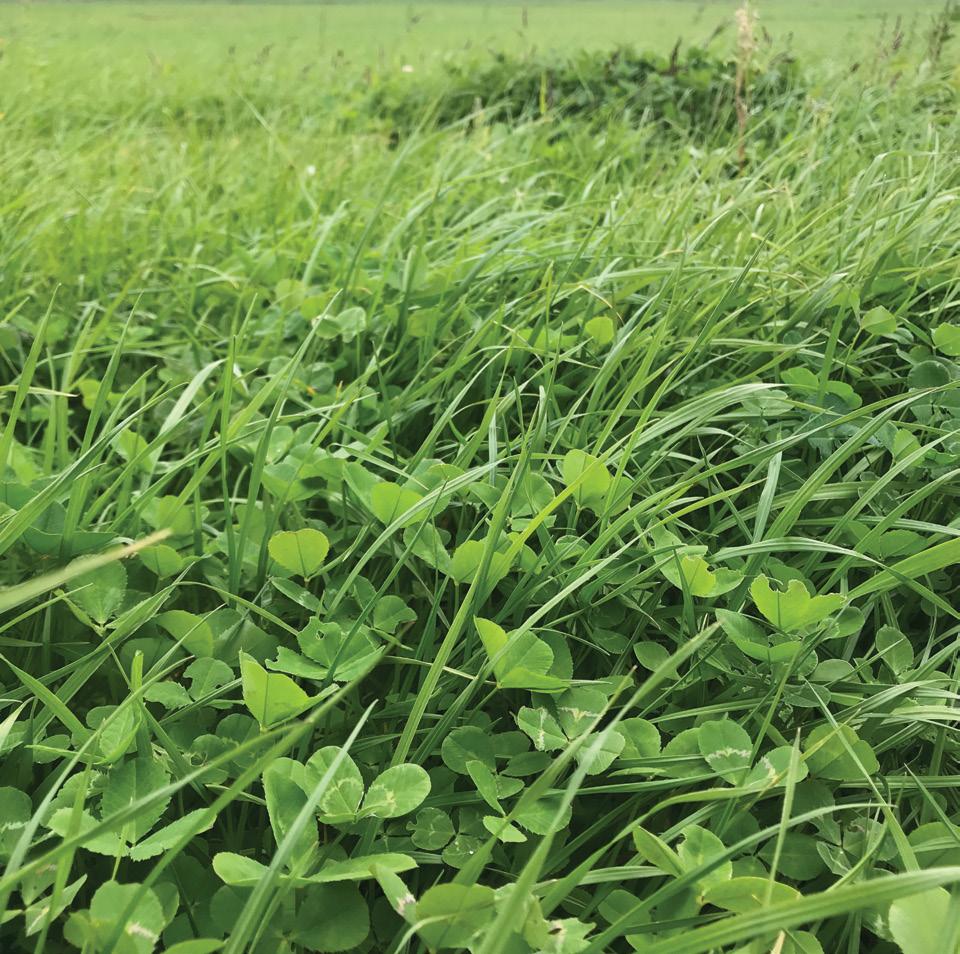
Taipan suits a wide range of soil types, is tolerant of moderate soil salinity, has excellent waterlogging tolerance and can grow in areas of medium rainfall. For high dry matter production, grow Taipan for quality hay or as part of a perennial pasture system.
• High dry matter yields and excellent production
• Can withstand periods of waterlogging
• Increased winter/early spring production compared to subterranean clover
• Adapted to a wide range of soils and pH
Ideally sown as part of a mix
Sowing rate
5-8kg/ha (sole) 1-2kg/ha (mixed)
Flowering date Late Rainfall/Irrigation Minimum 450mm p.a
Used for
Self regenerating, persistent clover
Viper is a late flowering long season balansa clover that is known as a self regenerating annual legume. It is a semi erect, hollow stemmed that can grow up to 1 metre in height and remains prostrate when grazed. Viper is very hard seeded and will often not start germinating substantially until two summers have passed.
Although predominantly autumn sown, sow Viper strategically through spring mixed with/sown with spring cereals, Italian ryegrass or brassica for a fast 3-4 month burst of legume growth.
• Highly persistent within grazing systems
• High yield potential over time
• Semi prostrate growth habit
• Fixes free atmospheric Nitrogen
SUBTERRANEAN CLOVER
*Sowing rate 10-20kg/ha (sole) 6-10kg/ha (mixed)
Days to flower 103
Rainfall/Irrigation Minimum 400mm p.a
Used for
An early season variety that is resistant to root rot but susceptible to clover scorch. 45-55% hard seed. Approximately 103 days to flower.
SUBTERRANEAN CLOVER
*Sowing rate 10-20kg/ha (sole) 6-10kg/ha (mixed)
Days to flower 145
Rainfall/Irrigation Minimum 650mm p.a
Used for
A mid-late season variety resistant to clover scorch and partially resistant to root rot. 25-35% hard seed. Approximately 145 days to flower.
SUBTERRANEAN CLOVER
*Sowing rate 10-20kg/ha (sole) 6-10kg/ha (mixed)
Days to flower 151
Rainfall/Irrigation Minimum 750mm p.a
Used for
A late season variety with outstanding dry matter production in high rainfall areas. Able to remain green after main flowering period. 5-15% hard seed. Approximately 151 days to flower.
SUBTERRANEAN CLOVER
*Sowing rate 10-20kg/ha (sole) 6-10kg/ha (mixed)
Days to flower 107
Rainfall/Irrigation Minimum 450mm p.a
Used for
A mid season variety that is highly resistant to root rot and moderately resistant to clover scorch. 5-10% hard seed. Approximately 107 days to flower.
*Sowing rate 10-20kg/ha (sole) 6-10kg/ha (mixed)
Days to flower 120
Rainfall/Irrigation Minimum 500mm p.a
Used for
A mid season variety which has strong clover scorch resistance, good root rot resistance and superior dry matter production to Trikkala. 15-25% hard seed. Approximately 120 days to flower.
SUBTERRANEAN CLOVER
*Sowing rate 10-20kg/ha (sole) 6-10kg/ha (mixed)
Days to flower 110
Rainfall/Irrigation Minimum 500mm p.a
Used for
An early season replacement for Dalkeith with increased dry matter production, higher hard seed levels (55-65%) and better resistance to RLEM. Approximately 110 days to flower.
*If including more than one cultivar of sub clover, it is recommended that you have a total minimum of 6kg/ha. Days to first flower is from an early May sowing in Wagga Wagga NSW, days to flower dependent on sowing time and climatic conditions.
Agricom product portfolio: Ecotain® environmental plantain and Choice perennial chicory
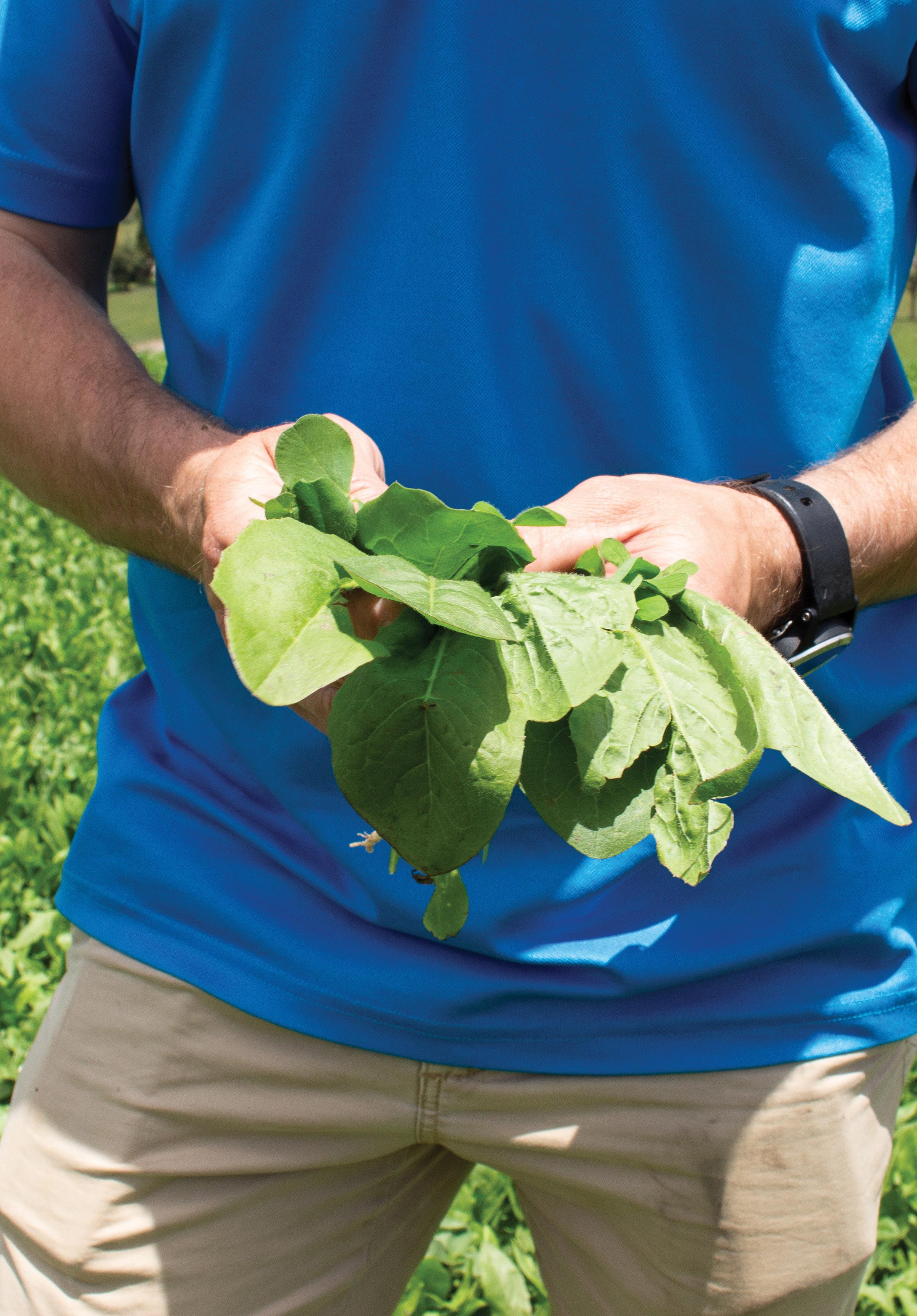
PGG Wrightson Seeds product portfolio: Puna and Puna II perennial chicory, Rocket Fuel™ and Rocket Fuel® elite chicory clover blend
Herbs are a high quality forage with good nutritional value for grazing animals and have the potential to deliver excellent animal performance by providing stock with:
• A well balanced protein to energy ratio which supports good rumen function
• Low levels of fibre for improved digestibility for faster passage through the gut
• Higher live weight gains (especially in sheep, lambs and beef cattle)
• Higher milk production in dairy cows
At DLF Seeds, we offer a range of proprietary herb options suitable for most conditions and environments across Australia. To find about more, contact us on 1800 619 910 or visit dlfseeds.com.au/contact/contact-us.
Our range of high quality, proprietary herb varieties includes:
All our twin bearing ewes will be on Ecotain next year. It really delivered for us last season – our ewes were in such good condition through the winter, our lamb marking rate was good and we were able to finish the lambs early enough to get good prices at the market and clear 100% within six months.
Rebecca Gardiner Foxhow, VIC
Take your livestock to new heights with Ecotain® Ecotain® environmental plantain is a mineral-rich perennial grazing herb. Ecotain is fast establishing and tolerant to a wide range of soils, including less fertile soils and dryland regions with 600mm+ annual rainfall/irrigation. Ecotain has a deep coarse root system, which gives it a degree of drought tolerance and the ability to respond quickly after summer dry conditions.
Ecotain pastures offer strong animal performance to sheep, beef and dairy farmers, particularly in winter and spring, as well as supporting a high level of animal health, reduced incidence of dags in sheep and good micronutrient supply (Zn, Cu, Se, Mg, Ca, K). Pure stands of Ecotain can be used during lambing to increase lamb and ewe weights at weaning.

• Suitable for lamb and beef finishing
• An ideal source of minerals important for good animal health and performance
• Strong cool season growth
• Valuable year-round production
• Reduced N losses from farm systems, through N leaching reduction from the urine patch
Sow Ecotain in a mixed pasture sward for quality hay (Ecotain is not suitable for hay if sown as a sole pasture)
Animal performance – Dairy
Adding Ecotain® environmental plantain to dairy pastures can significantly increase milk production. Figure 8 demonstrates a 2L/cow/day increase in milk production when cows grazing low quality ryegrass were supplemented Ecotain.
Ecotain improves palatability in spring and summer when grass goes reproductive, improving pasture utilisation.
The rapid rumen degradation time of Ecotain allows cows to spend less time ruminating and more time eating, increasing feed intake and milk production.
Ecotain has been shown to reduce nitrate leaching by up to 89% in lysimeter studies*. Benefiting your farm and the environment.
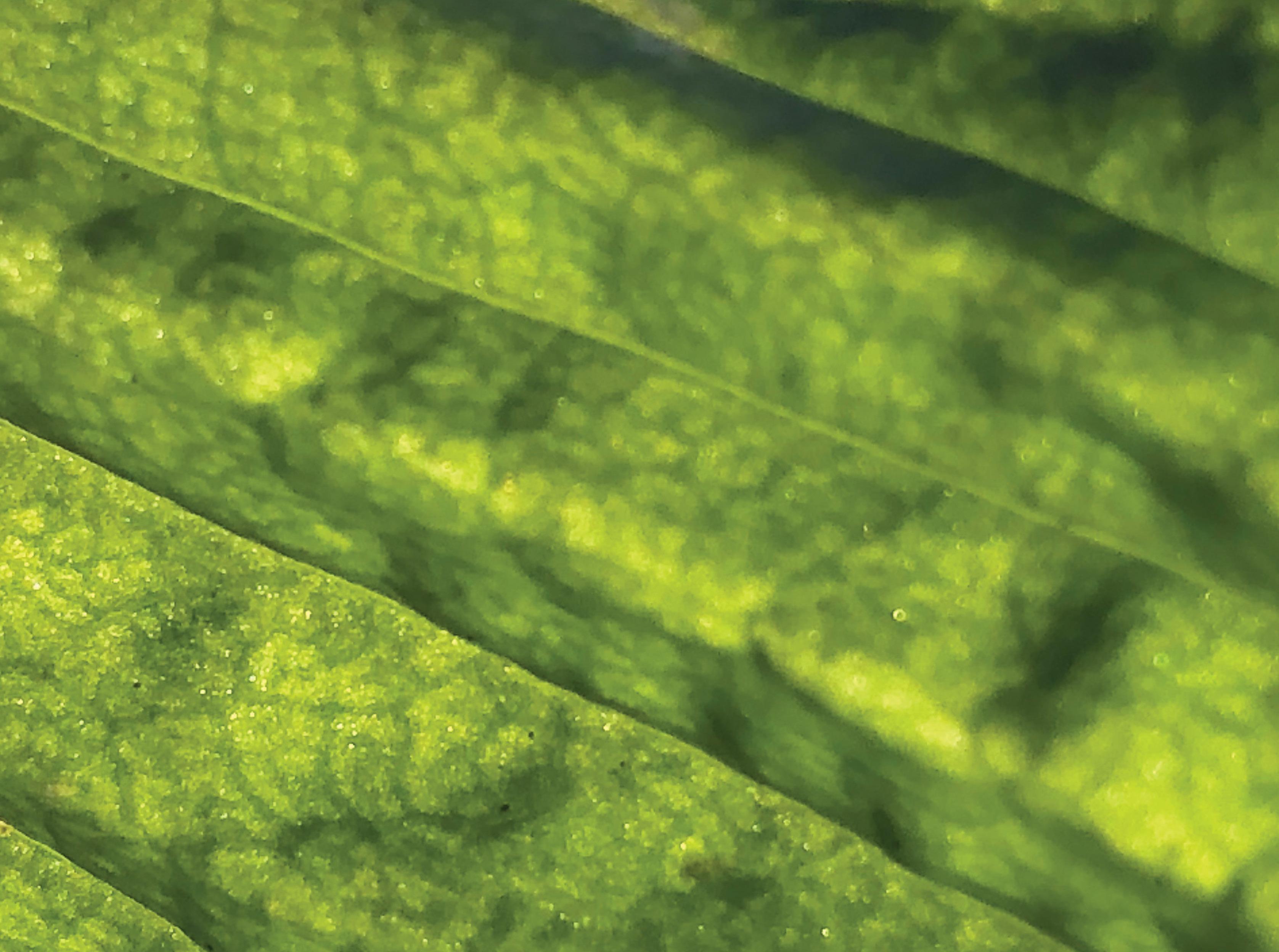
*Reducing nitrogen leaching losses in grazed dairy systems using an Italian ryegrass-plantain-white clover forage mix. Woods RR, Cameron KC, Edwards GR, Di HJ, Clough Tim J (2018) Grass Forage Science 73:878–887
Milk production (l/cow/day) of cows grazing irrigated ryegrass based pasture vs. Ecotain vs. grass + Ecotain 16.3b Ecotain 100%
FIGURE 8: 14.3a Grass 50% Ecotain® 50% Forage type grazed
PRODUCTION (L/COW/DAY) 16.4bb
Study 1: Adapted from Judson. (2008). (109 day lactation)
Study 2: Adapted from Judson et al. (2009). (95 day lactation)
Study 3: Adapted from Judson et al. (2009). (87 day lactation)
Study 4: Adapted from Judson (2010). Unpublished hogget lambing (hogget 90 day lactation)

Ecotain environmental plantain is showing significant advantages for lamb producers in an extensive on farm grazing trial at Foxhow in Victoria’s Western District.
In a bid to better match feed supply with demand over winter, Rebecca and Dan Gardiner from Ambleside Pastoral compared Ecotain, a mineral rich perennial grazing herb with strong autumn, winter and spring growth, against standard grass-based pastures on selected twin bearing ewe paddocks last year.

The results are in, and the Gardiners couldn’t be happier with Ecotain. The Gardiners planted 38 hectares of Ecotain in spring 2020 and this established well through a relatively mild summer.
They scanned their ewes in late February 2021 and moved the twin bearing ewes from crop stubbles onto one of two new Ecotain paddocks at stocking rates of 11.5 ewes/ha or 6.5 ewes/ha. This was compared with twin bearing ewes on a phalaris and clover paddock at a stocking rate of 6.5 ewes/ha. Their cross bred ewes average 75 kg with a condition score of 4.
Lambing started in April and by lamb marking time at the end of May, the Ecotain paddocks were already starting to show their worth.
“Our lamb marking rate was 153% overall, but the really outstanding point when we looked at the data was that our marked percentages increased by 10% on the two Ecotain paddocks compared with the rates in those paddocks last year,” she said.
On the two Ecotain paddocks they achieved 185% and 179%. She also noticed improvements in ewe health and mothering ability where the ewes were grazing Ecotain.
“We didn’t see any mismothering on the Ecotain at either the high or low stocking rate, the ewes were all clean and they had big bags of milk, so you could see they were doing well,” she said.
She estimated that the condition score of the ewes grazing Ecotain was about 4 through winter and the lambs also seemed more vibrant and energetic. Despite the cold and wet season, they were thrilled with the results they got from finishing the lambs on Ecotain, with lamb growth rates of up to 260grams/day. Growth rates were compared across three treatments, weaned twin lambs on Ecotain and clover, unweaned twin lambs on Ecotain and clover and unweaned single lambs on a phalaris pasture and clover.
The best growth rates were seen in early weaned twin lambs on Ecotain and clover, with average growth rates of 260 grams/day. Unweaned lambs on the same feed achieved 230 grams/day, while single lambs on phalaris and clover gained 180 grams/day at the same stocking rate.
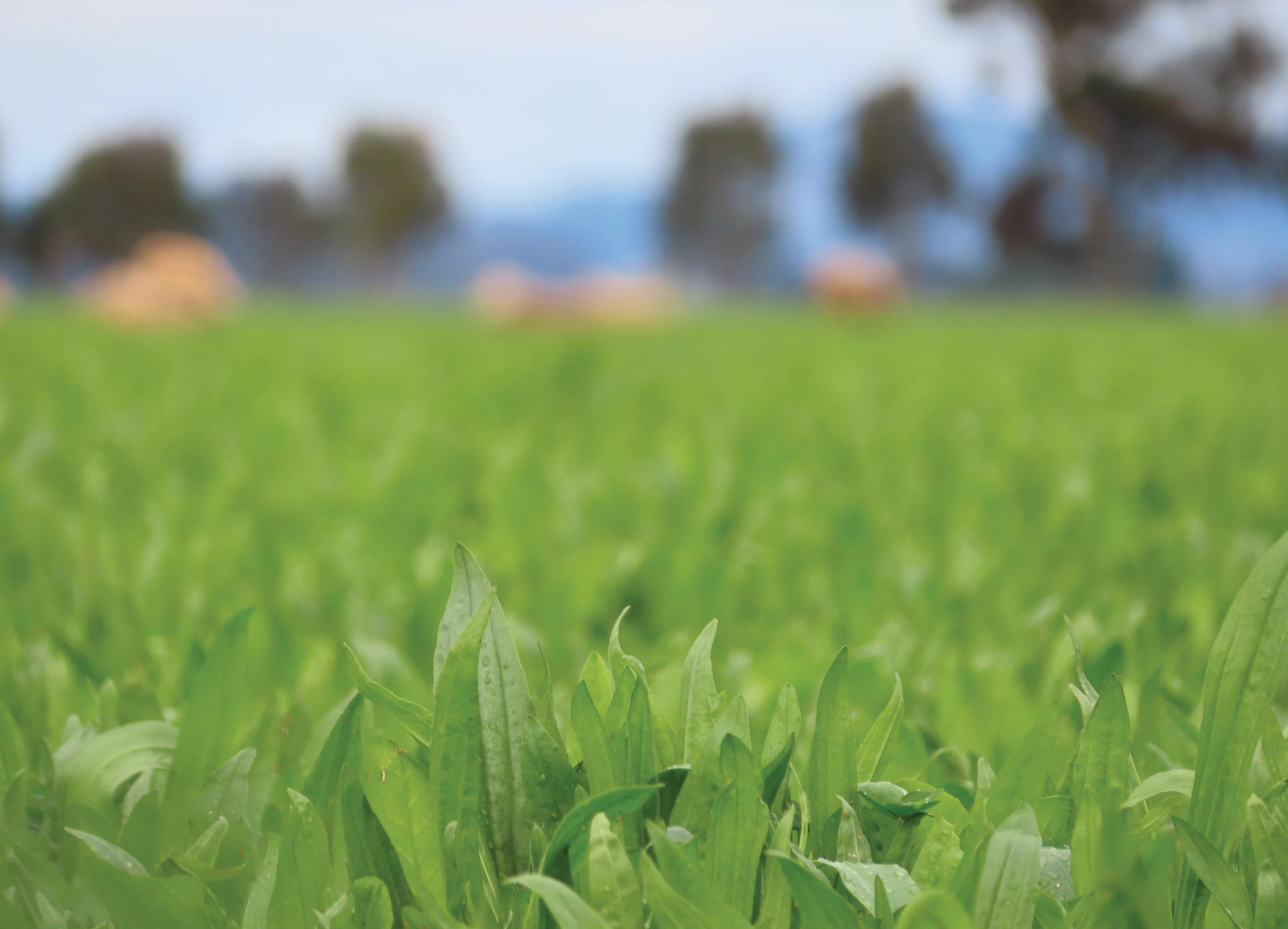
“This was a great result for us because it showed we were obviously better off weaning the lambs early, both from the point of view of finishing the lambs and giving the ewes a longer break before joining,” Ms Gardiner said.
After selling all their lambs, they decided to replant the remaining phalaris twin paddock to Ecotain for 2022. They have also purchased more ewes to top up their flock.
“All our twin bearing ewes will be on Ecotain next year. “
“It really delivered for us last season – our ewes were in such good condition through the winter, our lamb marking rate was good and we were able to finish the lambs early enough to get good prices at the market and clear 100% within six months.”
Former DLF Seeds Victorian Sales Agronomist said there was significant upside potential to grazing Ecotain at Ambleside Pastoral.
“Rebecca and Dan are now in a position to refine their system, and with more area under Ecotain to utilise, they’ll be able to refine stocking rates and rotate grazing with fresh plantain paddocks to minimise overgrazing through winter,” he said.
A DLF Seeds Sales Agronomist added that the contribution of nitrogen from the clover was a significant factor in driving the productivity of the Ecotain grazing system. He encouraged lamb producers to consider Ecotain® environmental plantain for meeting the feed challenge at lambing time, particularly with multi-bearing ewes, and for lamb finishing.
“In a better season, we might even be able to get them out a month earlier.”
Deep taproot with high summer dry matter production
Choice has an upright growth habit with a large, uniform leaf for good utilisation, improved winter activity and persistence.This also improves the establishment of other species in a mix such as clovers and brassicas. Due to its improved winter growth, Choice exhibits quick establishment in the autumn and provides early grazing in the spring and later grazing into the winter.
• High ME (+12ME/kgDM)
• High summer dry matter production given adequate moisture
• Selected for lower lactucin levels
Sow chicory as a sole pasture or mixed pasture sward for quality silage (chicory is not suitable for hay if sown as a sole pasture)

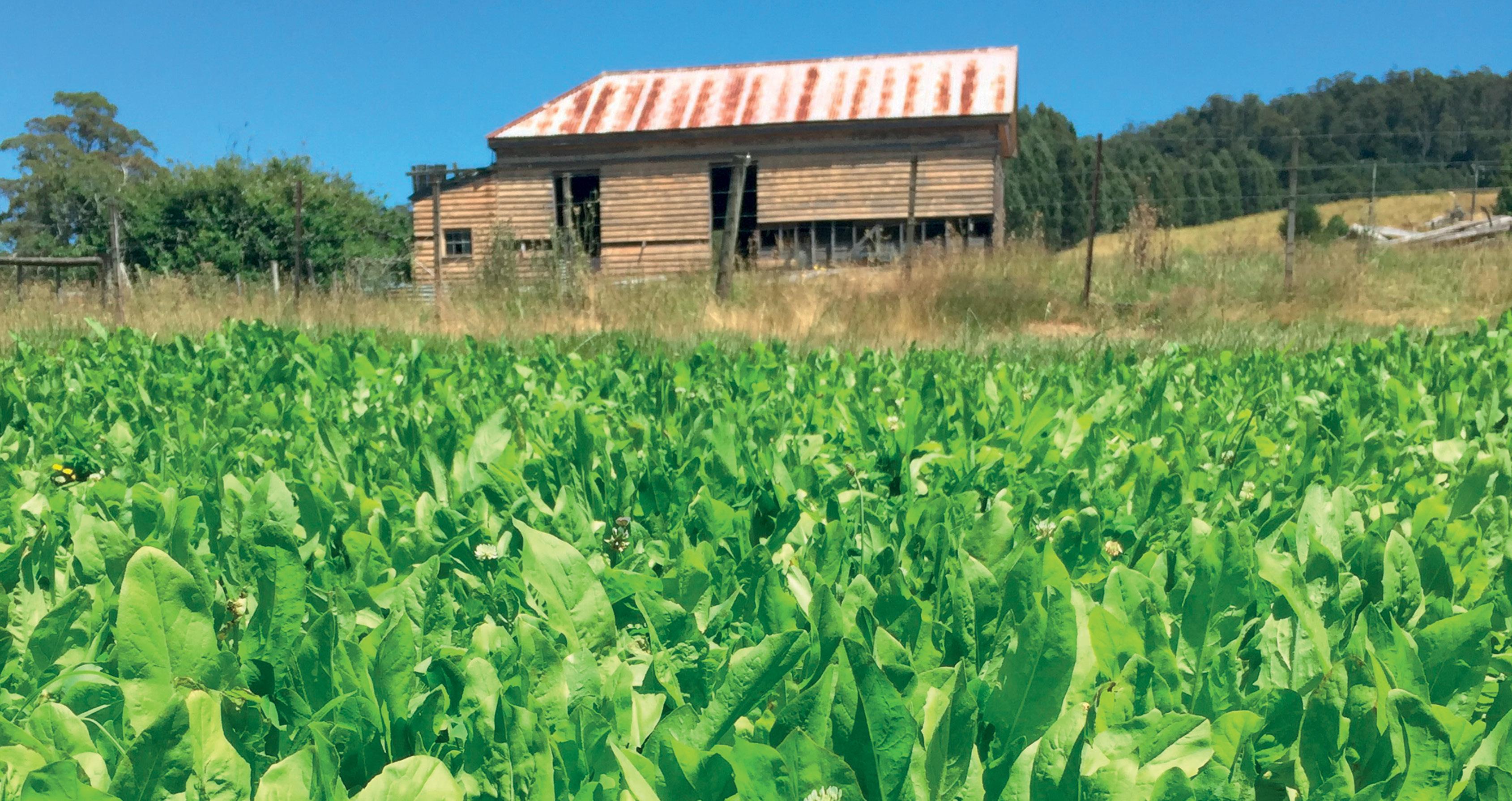
Sowing rate
6-10kg/ha (sole) 2-8kg/ha (mixed)
Ready to graze (weeks) 8-10
Rainfall/Irrigation Minimum 500mm p.a
Used for
Produces highly nutritious feed in all seasons
Puna II is a true perennial chicory bred for improved animal performance. It delivers premium quality feed and a high dry matter yield. Puna II is ideally suited to dairy pastures and finishing systems due to its semi-erect growth habit. It has a fast regrowth after grazing, especially if rotationally grazed and establishes well in pasture swards.
• Excellent drought tolerance
• Highly palatable
• Good disease resistance and insect tolerance
• High yielding
• Long season growth
In tropical and subtropical environments, Puna II can be sown in a mixed pasture sward successfully
Sowing rate 12.5kg/ha (sole)
Ready to graze (weeks) 8-10
Rainfall/Irrigation Minimum 600mm p.a
Used for
Specialist finishing crop with excellent animal performance
Rocket Fuel™ is a proprietary seed mixture consisting of chicory, red and white clover. It produces a leafy, high quality feed over spring, summer and autumn when traditional pastures can decrease in quality. This versatile mix can be sown as a specialist finishing crop or a high protein milking option. Use as a 6 month or 2 year crop depending on farm system and grazing management. Suitable for a wide range of environments, Rocket Fuel offers an excellent animal performance package. White and red clover will provide nitrogen to the chicory over time and are both an ideal companion species for leafy upright herbs, filling gaps and shading out weeds.


• Excellent feed for high live weight gains in lambs and cattle
• Provides high quality feed through spring, summer and autumn
• High protein option for dairy farmers
• Grass can be sown into an established Rocket Fuel paddock
• Highly palatable
Grazing tolerant lucerne Australian bred lucerne
PGG Wrightson Seeds product portfolio: Stamina® GT5, Stamina® GT6, Warrego GT6 and Torrens GT8 grazing tolerant lucerne.
Agricom product portfolio: Titan 7 and Titan 9 Australian bred lucerne.
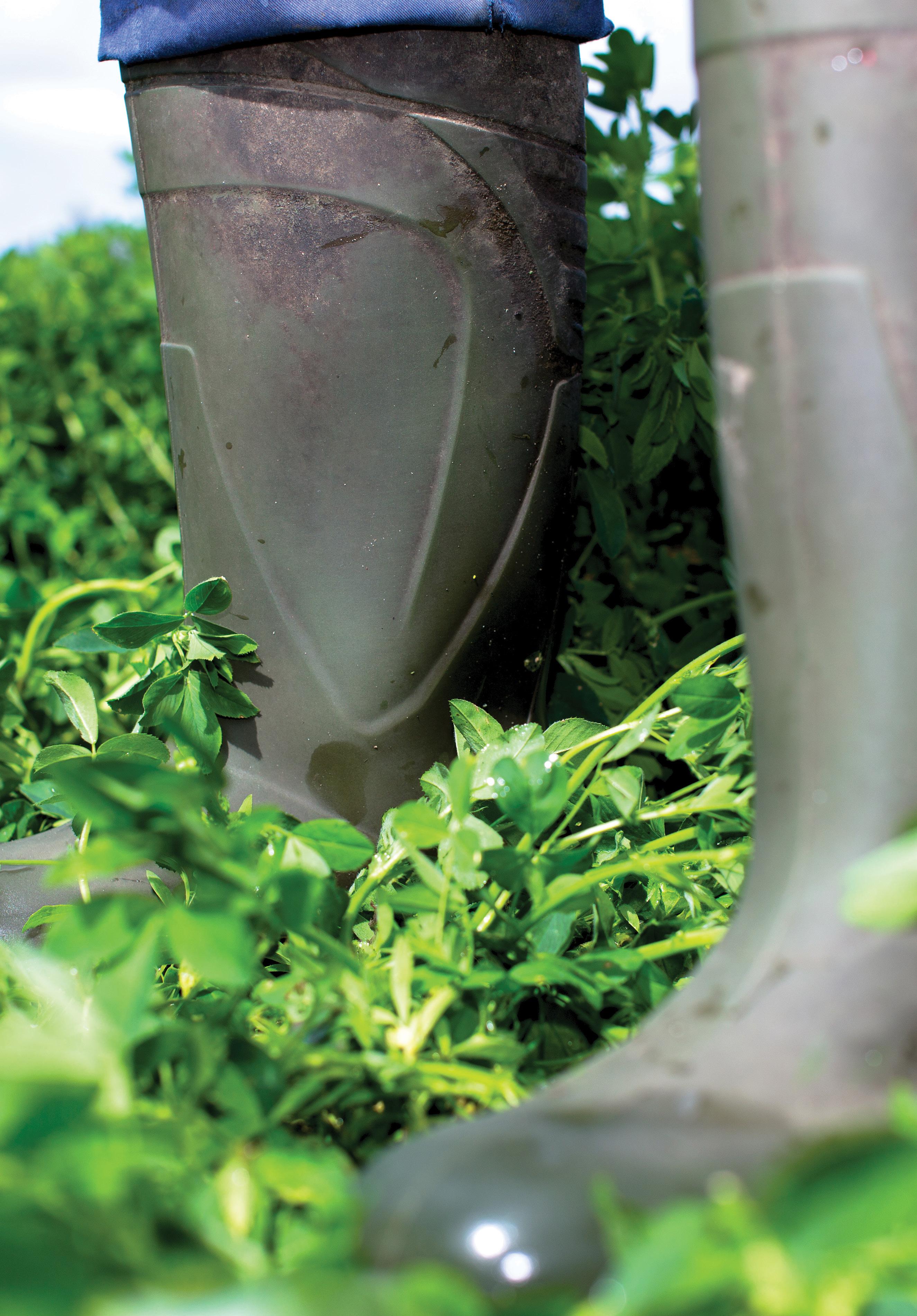
Sowing rate 5-25kg/ha (sole)
Rainfall/Irrigation Minimum 350mm p.a
Used for
The ultimate choice for grazing tolerant lucerne
Stamina® GT5 is a high performing lucerne variety that will produce quality hay and grazing opportunities for seven to ten years. It is a true grazing tolerant lucerne that has been trialled over many years under the internationally recognised Standard Test Protocol for grazing tolerant lucernes. It has low, broad crowns and is naturally of high forage quality with fine stems and high leaf to stem ratio. Stamina GT5 lucerne is the ultimate choice where a stand is required for prolonged periods of set-stocking.
• Ultra persistent under grazing
• A semi-dormant grazing tolerant lucerne
• Tolerates prolonged periods of set-stocking
• Produces excellent quality hay
• Has good overall resistance to most lucerne diseases

Sowing rate 5-25kg/ha (sole)
Rainfall/Irrigation Minimum 350mm p.a
Used for
The first grazing tolerant lucerne for the Australian market
Stamina® GT6 combines useful winter growth, great persistence and the ability to tolerate set stocking of sheep, however, set stocking is not recommended for lamb finishing. It provides excellent yield and quality during warmer growing months.
Stamina GT6 was the first lucerne released for Australian farmers trialled under the internationally recognised Standard Test Protocol for grazing tolerant lucernes.

• Excellent yield
• High quality feed for grazing and hay
• A grazing tolerant lucerne that is semi-dormant
• Bred under ther internationally recognised, Standard Test Protocol for grazing tolerant lucerne
Sowing rate 5-25kg/ha (sole)
Rainfall/Irrigation Minimum 350mm p.a
Used for
Improved persistence with Warrego GT6, the upgraded replacement to Stamina® GT6

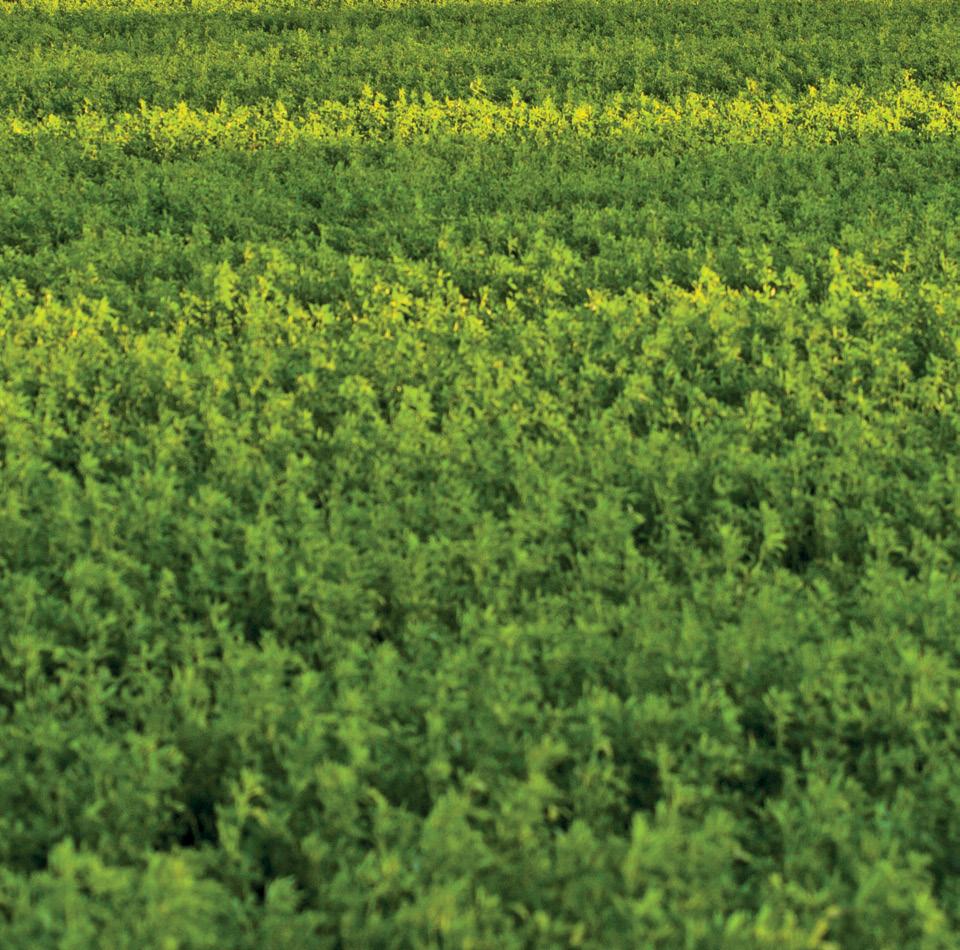
Trialled and tested over multiple environments and conditions, Warrego GT6 is a significant step up in grazing tolerance and persistence compared to older dormancy 6 varieties. Bred to persist for prolonged periods of set stocking, Warrego GT6 (of the Stamina® range) provides growers with grazing flexibility, high quality hay, persistence similar to a dormancy 5 and winter activity of a 6. Warrego GT6 is a new generation, highly persistent, true grazing tolerant lucerne. Warrego GT6 was selected and bred from grazing tolerance trials in Leigh Creek (Vic) and Gundagai (NSW) and trialled under the internationally recognised Standard Test Protocol for grazing tolerant lucernes.
• Next generation dormancy 6 with TRUE grazing tolerance
• Ultra persistent under grazing with improved persistence over Stamina GT6
• Low crown height offering protection from periods of set stocking and traffic tolerance
• Good disease resistance package
• High quality hay and grazing opportunities
• Strong return on investment over the extended grazing lifespan
Sowing rate 5-25kg/ha (sole)
Rainfall/Irrigation Minimum 350mm p.a
Used for
Australian bred Titan 7 is a winter active lucerne variety best recommended for irrigation and dryland conditions. It is a multi purpose variety for grazing and hay production and provides a high quality yield when sown in autumn, early winter or early spring, with best results achieved when sown into a moist, firm seedbed. It offers superior insect and disease resistance, withstanding Phytophthora Root Rot and all three strains of Colletotrichum Crown Rot.
• Winter active (dormancy 7)
• Suited to dryland and irrigation
• Multi purpose variety for grazing and hay production Australian bred
Sowing rate 5-25kg/ha (sole)
Rainfall/Irrigation Minimum 350mm p.a
Used for
Grazing tolerance and winter activity – the ultimate combination
Torrens GT8 (of the Stamina® range) is the first grazing tolerant highly winter active lucerne to be released to the Australian market*. This product was selected from highly winter active survivors in grazing tolerance trials at Leigh Creek (VIC) and Gundagai (NSW). With a high leaf to stem ratio and fine stems, it produces high quality forage for premium hay production or grazing.
• The FIRST highly winter active grazing tolerant lucerne*

• A true dual purpose lucerne
• Strong resistance to most lucerne pests and diseases
• Premium quality hay (high leaf to stem ratio)
• Suitable for a wide range of farming systems
• Ultra persistent under grazing with improved traffic tolerance
• Suited to dryland and irrigated systems
* Torrens GT8 is the first highly winter active, grazing tolerant lucerne to be released to the Australian market that has been tested under the internationally recognised Standard Test Protocol for grazing tolerant lucerne.

Sowing rate 5-25kg/ha (sole)
Rainfall/Irrigation Minimum 350mm p.a
Used for
High production under irrigation and strong persistence
Titan 9 lucerne is highly recommended for growers seeking high production under irrigation and superior persistence compared to other highly winter active varieties. Titan 9 produces soft leafy hay and is quick to regrow after cutting. Titan 9 is highly resistant to Colletotrichum Crown Rot Race 4 and highly resistant to Phytophthora Root Rot, resistant to Colletotrichum Crown Rot Races 1, blue-green Aphid and spotted alfalfa Aphid.
• Highly winter active (dormancy 9)
• High dry matter production for grazing, silage and hay
• Strong recovery from cutting or grazing Australian bred
Lucerne varieties are categorised into three main groups: semi winter dormant (5), winter active (6-7) and highly winter active (8-10).
Semi winter dormant (5):
Persistent stands with slow winter growth. In comparison to winter active types (6-7), semi winter dormant (5) varieties are well suited to grazing and quality hay production due to a lower crown and a semi-prostrate but denser growth than winter active types (6-7).
Tend to have smaller crowns with an erect growth that provides some winter growth (providing suitable temperatures). Although a multi purpose stand that provides quality hay production and grazing opportunities, strict rotational grazing management is required as winter active (6-7) lucerne varieties are comparatively less tolerant to grazing than semi winter dormant (5) varieties. For Grazing Tolerance see the Stamina® range of lucernes.
Understanding the limitations of lucerne is essential, and factors such as low pH, Aluminum, and where it is located within the soil profile will determine if the paddock is suitable for sowing lucerne. Soil test at least 12 months in advance to allow enough time for deficiencies to be identified and fixed.

Note: Nitrogen is not normally applied as lucerne can fix nitrogen during the growing season.
winter active (8-10):
Good winter growth with an upright growth habit. Vigorous at establishment and fast recovery from cutting or grazing. High production for at least three years, making them a great option in cropping rotations. Strict rotational grazing management is required as highly winter active (8-10) lucerne varieties are comparatively less tolerant to grazing than semi winter dormant (5) and winter active (6-7) lucerne.
Torrens GT8 however provides growers with increased persistence compared to traditional highly winter active varieties due to its grazing tolerance and below ground budding trait.
For TRUE grazing tolerance, see the Stamina range of grazing tolerant lucernes which includes Stamina GT5, Stamina GT6, Warrego GT6 and Torrens GT8.
Correct paddock selection is a key driver for long-term lucerne stand persistence. When sowing, identify an area to plant lucerne (minimum of 12 months prior to sowing). When selecting a paddock, consider that lucerne will grow on a variety of soils with a preference to:
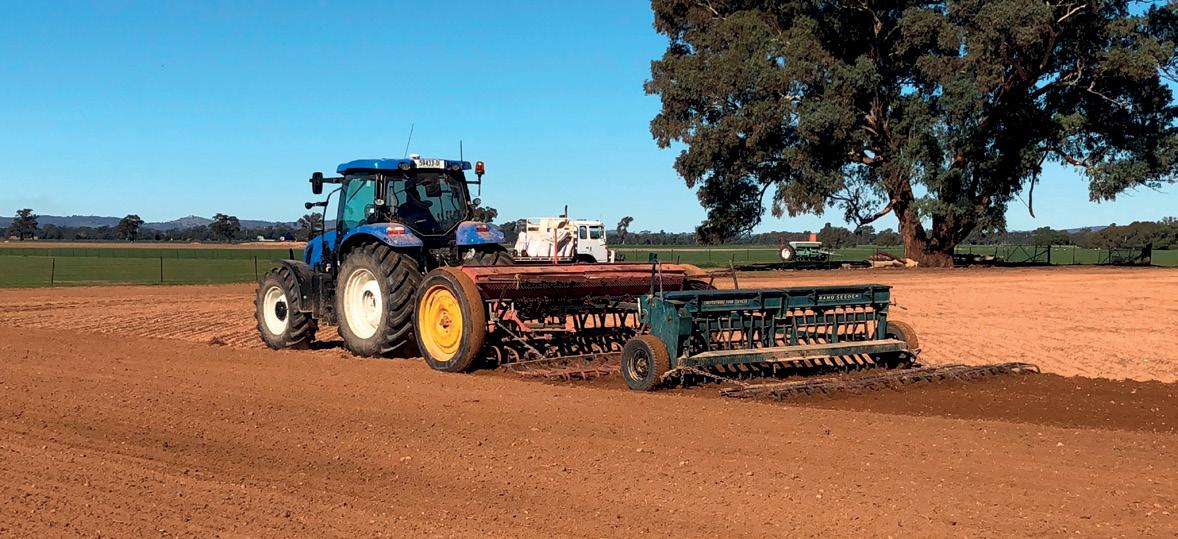
• Deep, well drained soils of medium to light texture
• Rich alluvial soils
• Most of the red earth/red-brown earth soils
• Well drained black/grey soils
• Highly fertile/slightly acidic soils
Note: Established lucerne moderately tolerates saline soils, but seedlings are less tolerant.
In recent years slugs have been a real problem in decimating newly sown pastures, crops and lucerne. Heavy soil types, summer rains and reduced tillage are all factors which promote the build-up of slug populations. Inspect potential paddocks prior to sowing and if found contact your local agronomist for control of this devastating pest.
Although there are various techniques to assess when lucerne is ready to be cut, there are key factors to take into account. These include; location (i.e. Southern QLD versus Tasmania), which will determine the rotational length between cuts in different seasons, the dormancy class, and the prevailing weather conditions. Plant growth stage can be a very accurate predictor of cutting time.
Cut lucerne when new crown shoots are at least 2cm long but below mower to ensure persistence. Making good quality lucerne hay is a skill that requires experience or good advice from experienced people, a good environment, good organisation, motivation, commitment and dedication with good reliable equipment.
Source: Producing Quality Lucerne Hay, M Lattimore, NSW DPI (2008)
FIGURE 10: Cutting height
Old regrowth Regrowth
Too early
Half the plants have buds just beginning to show at the base. No new leaves apparent.
Regrowth averages 2cm, mainly buds. Leaves not fully unfolded.
Too late
Regrowth higher than cutting height. Leaves unfolded.
Poor weed control is one of the most common issues that lead to poor lucerne establishment. Soil type will determine the cultivation practice during seedbed preparation to ensure the soil is suitable for planting. This will aid the soil to seed contact at the time of sowing and provide good supporting moisture infiltration around the seed either after a rainfall event or irrigation. Weed control must start the year before sowing the lucerne to ensure adequate time and opportunity to control/remove any weeds present in the paddock. This should also reduce the need to use post emergent herbicides in the young lucerne crop as this can retard lucerne growth.
Correct paddock selection is a key driver for long term persistence of lucerne stands. The sowing depth needs to be managed as lucerne is a small seed and therefore only needs to be sown at no more than 15mm deep. This will enable the lucerne to germinate and the seedling to rise above the soil to begin photosynthesis.

The following table shows the number of key nutrients removed from 1 tonne dry matter of lucerne hay.
Nutrient Symbol
Amount removed in 1t DM of lucerne hay
Nitrogen N 20-30kg Phosphorus P 2-3kg Potassium K 15-20kg Sulphur S 2-4kg Calcium Ca 10-17kg Magnesium Mg 2-4kg Boron B 25-40g Copper Cu 5-10g Iron Fe 50-150g
Maganese Mn 35-50g Zinc Zn 20-50g
For long-term productivity and persistence of lucerne stands, best practice management is to allow 30-35 days between each rotational grazing during the growing period (rotation lengths may need to be extended during the cooler months due to slower growth). When grazing lucerne, it is ideal to graze the plant down to 5cm in height and then remove the stock.

The focus for spring grazing is on stock performance, maximising live weight gains and yield. A fundamental, yet unavoidable reality of lucerne production is that the yield and quality are inversely related. This means that as yield increases, the quality of the stand generally declines and is often referred to as the “yield quality trade-off”. The timing of the grazing or harvest is a compromise between yield, quality and persistence.
Grazing adds another level of complexity to this due to animal performance and health factors. Researchers have proposed a relative forage yield and quality summary diagram (figure 11) showing the different stages of lucerne with different yield components and digestibility. As the yield of the crop increases through stages of maturity (vegetative to post flower), stems make up the greater proportion of total yield and the digestibility of the stem material declines because of increased lignin content. The leaf yield contributes little to the total yield beyond the first flowering stage.
Summer grazing period should be focused on utilising the crop yield to maximise animal productivity.
• Short rotation (rotation length will depend on location)
• Water stress accelerates flowering, but leaf is still high quality
• Conserve a true surplus if the opportunity presents (i.e. there is more lucerne available than stock demand)
If sowing a winter active lucerne, grazing rotations should be lengthened.
• Spray weeds before lucerne leaves grow back to minimise crop damage
• Resist the urge to graze regrowth through winter or after winter herbicide application, as this delays spring growth/ first grazing and reduces yield
• The order in which paddocks are ‘hard grazed’ and then winter cleaned dictates the order they will be ready for grazing in spring
• Application of a winter clean too late in the dormancy period can damage the developing buds on the lucerne regrowth
• Late winter grazing or continuous stocking through this period can remove the growing points from the stems and can reduce final yield by up to 25% (Moot et al. 2003)
Autumn time is a critical period in the physiological process of lucerne growth. The objectives through this period should be centered on managing the stand for persistence and production in the subsequent year rather than concentrating on animal performance.
• Longer grazing rotations (rotation length will depend on location)
• Allow a minimum of 50% of the tallest lucerne stems to have an open flower at least once, from mid-summer to autumn, to allow root reserves to recharge before grazing

• Graze if drought is ‘terminal’ i.e. plants stop growing to avoid loss of leaves, then allow recovery to at least 20cm height after rain
• Red Legged Earth Mite, Lucerne Flea and Aphids can be an issue. Ensure monitoring and if population is causing damage, a chemical application may be needed. Consult your local agronomist for chemical recommendations
• Shorter day length and decreasing temperatures signal the plant to start directing energy to root reserves for stand persistence and production next spring
• Ewes can be flushed on lucerne, however, if Leaf Spot is present then oestrogen levels may be affected
Stamina® grazing tolerant lucernes with TRUE grazing tolerance. When identifying lucerne cultivars for true grazing tolerance, be sure to choose cultivars that are evaluated here in Australia under the internationally recognised Standard Test Protocol for grazing tolerant lucerne.

The Stamina range of TRUE grazing tolerant lucerne provides:

• High yields and strong stand density
• Improved traffic tolerance
• Lower crown height causing less stress on crowns
• Long term, reliable feed (5+ years of grazing)
• Quality hay production
• Persistence under multiple grazings
• Reduced risk of weed invasion by maintaining stand density for longer
• Strong recovery from drought
• The ability to tolerate pests and diseases such as Aphids, Sitona weevil, fungi and viruses
Remember that there is lucerne that tolerates grazing and there is grazing tolerant lucerne.
Example of how hard GT varieties are grazed during trials. (Note: Sheep were offered a grain based pellet during this time).

The graph shows the 2012 sown dryland grazing tolerance trial at years 2, 3 and 8. This trial was continuously grazed for six months at 50 sheep per hectare equivalent from January
2014 through to June 2014. It was then repeated from January 2015 until June 2015. All cultivars were trailed under the internationally recognised Standard Test Protocol for grazing tolerant lucerne.
Stamina® GT5: Lucerne trial analysis
• Stamina GT5 is a true standout for grazing tolerance and persistence. After 2 consecutive years of the grazing tolerance protocol and another 6 years of grazing, Stamina GT5 maintained the highest ground cover of all dormancy 5
• Stamina GT5 ground cover remained extremely high at 76.7% after the first hard set stocking period, 50.9% higher than Aurora after 1 period of set stocking
• After the second set stocking period in 2015, Stamina GT5 remained at 76% when measured in August 2015, showing its true grazing tolerance
• When another ground cover measurement was taken in September 2020, after 8 years, Stamina GT5 had an impressive ground cover of 71.6%. During this time the lucerne trial had been managed normally and grazed when feed was available

• Using Stamina GT5 lucerne with proven grazing tolerance and persistence increases the amount of dry matter grown per hectare, provides longer lasting feed and increases your economic return compared to nonproprietary varieties such as Aurora and other nongrazing tolerant varieties
NEW Torrens GT8 grazing tolerant lucerne (of the Stamina® range)
• Torrens GT8 had higher ground cover in years 2 and 3 compared to all dormancy 7-10 varieties and some dormancy 6 varieties. Torrens GT8 also maintained 40% ground cover after 8 years of hard grazing
• Torrens GT8 ground cover was 40.8% higher than Aurora after the first set stocking period in 2014
• Torrens GT8 had a ground cover percentage of 62.5% after 2 years of the grazing tolerance trial continuing as a viable lucerne stand
• After 8 years Torrens GT8 remained a standout in the highly winter active category maintaining a ground cover of 42%, demonstrating a viable dryland lucerne stand in comparison to other highly winter active varieties
• Torrens GT8 a Stamina grazing tolerant lucerne, had higher ground cover in years 2 and 3 compared to all dormancy 7-10 varieties and some dormancy 6 varieties
NEW Warrego GT6 (of the Stamina® range): Lucerne trial analysis
• Warrego GT6 ground cover was 75% when measured after the first set stocking period in 2014, which means Warrego GT6 displays similar ground cover to dormancy 5 varieties
• After another six-months set stocking period in 2015, Warrego GT6 maintained a ground cover percentage of 75%, while other dormancy 6 varieties continued to decline
• After 2 consecutive set stocking periods in 2014/2015, Warrego GT6 had 60% more ground cover in comparison to Aurora
• In comparison to older cultivars, such as Aurora, and after all cultivars were trialled under the internationally recognised Standard Test Protocol for grazing tolerant lucerne, it was evident that:
• When measured after the first set stocking period in 2014 Aurora (a non GT lucerne) dropped to 25% in ground cover, rendering the stand unviable
• Aurora continued to decline in 2015, dropping to 15% ground cover
• With increased persistence, Warrego GT6 gives growers management flexibility, allowing them to decide when to terminate the stand in comparison to Aurora
Ultimately, the Stamina range of TRUE grazing tolerant lucernes featuring NEW Warrego GT6, Stamina GT6, NEW Torrens GT8 and Stamina GT5 are an ideal choice for farmers seeking a long term lucerne solution with a higher return on investment compared to cultivars, which decline significantly in ground cover after 2-3 years.
Agricom product portfolio: Mainstar forage rape, Hunter leafy turnip, Rival, New York and Australian purple top turnip, SovGold kale and Graza fodder radish.

PGG Wrightson Seeds product portfolio: Pallaton Raphno® raphanobrassica, Goliath® and Titan forage rape, Barkant turnip, Pasja II and Appin leafy turnip, Green Globe turnip and Regal® kale, Domain swede and the Cleancrop™ brassica system range (spring 2023 release).
At DLF Seeds, we offer a range of proprietary brassica options suitable for most conditions and environments across Australia. To find about more, contact us on 1800 619 910 or visit dlfseeds.com.au/contact/contact-us.
I sowed in the middle of February and was grazing by the start of April which filled a feed gap. Autumn sowing is very successful and has really enabled us to grow big amounts of feed quickly when soil temperatures are up. Once grazing canolas are locked up, I have had another 2-3 grazings off Pallaton by December. That's what sets Pallaton apart; quality feed that keeps on going.
Take your brassica finishing operation to the next level and increase your live weight production per hectare
Pallaton Raphno® is a raphanobrassica, a hybrid between Brassica oleracea (kale) and Raphanus sativus (radish). It is high yielding and offers flexible grazing as early as 56 days after sowing, but can be deferred up to 100 days after sowing. It is persistent under multiple grazings and is highly palatable to stock.

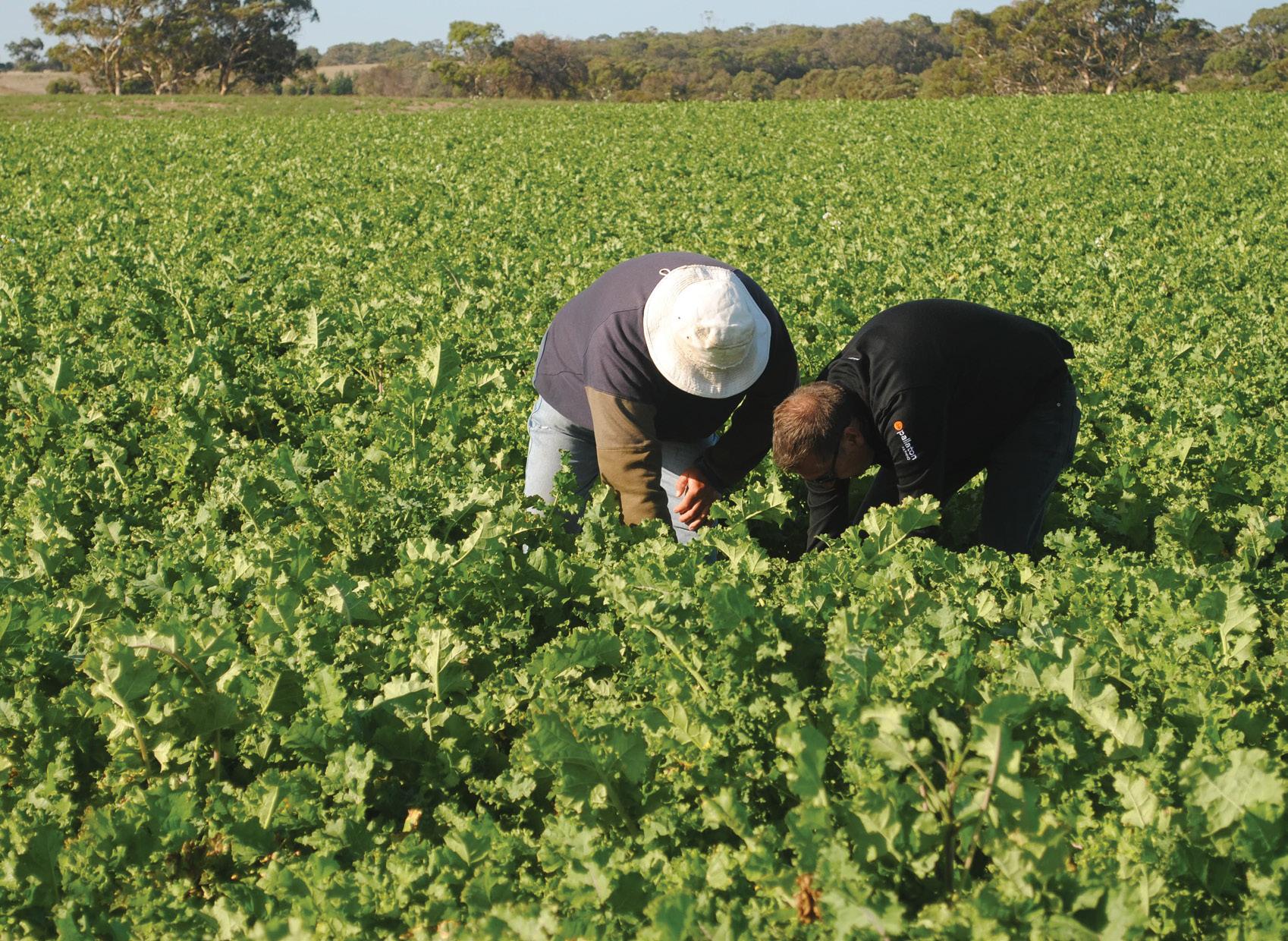
• High yielding
• Strong plant persistence under multiple grazings
• High water use efficiency
• Aphid tolerant
• High palatability
Achieve 5+ grazing’s with recommended management
Sow Pallaton Raphno® as a complement to your dual purpose canola system.
When cereals and canola are locked up and unavailable for grazing, autumn sown Pallaton can produce high quality feed for multiple grazings (increase in ME and crude protein compared to cereals).
A recent paper published by the CSIRO discussing “The potential of forage brassicas to produce herbage for mixed farming systems” identified that forage brassicas can be used as an alternative for/complement to dual purpose canola in the mixed farming zone.

Pallaton provides farmers with an alternative to dual purpose canola and cereals providing
• wider grazing window
• high biomass production from multiple grazings
• a filler for feed gaps in early spring
• altered herbicide use
Autumn sown Pallaton provides farmers with the opportunity to sow in warm soil temperatures, takes the pressure off pastures in cooler conditions and fills a feed gap in the early spring months. Nigel Roberts from Dunbogan Merino Stud has benefited from both autumn sown and spring sown Pallaton. When discussing autumn sown Pallaton, he stated,
"I sowed in the middle of February and was grazing by the start of April which filled a feed gap. Autumn sowing is very successful and has really enabled us to grow big amounts of feed quickly when soil temperatures are up. Once grazing canola’s are locked up, I have had another 2-3 grazings off Pallaton by December. That's what sets Pallaton apart; quality feed that keeps on going."
If you are having trouble accessing your traditional dual purpose canola seed this year, try Pallaton Raphno.
Maximise your grazing days per hectare by planting Pallaton Raphno this autumn. Sown in the same window as your grazing canola or grazing cereals. Pallaton has the ability to grow through winter and produce high quality feed deep into spring when other forages can’t. Providing out of season feed with its increased water use efficiency, Aphid tolerance and grazing flexibility. Pallaton will give you the ability to finish lambs on forage at times of year when either grain or low quality forages might be used. When tested across multiple sites throughout Australia, Pallaton has proven its high stocking rate potential in the mixed farming zone. This work has been done in collaboration with CSIRO.
Planted 13th April, first grazing 1st July at 36 lambs per hectare for 36 days. Second grazing on 31st August at 36 lambs per hectare for 23 days. 3rd grazing included 70 angus heifers for 5 days plus 636 ewes and 1113 lambs for 7 days. Paddock was grazed throughout spring but no grazing data was recorded after September.
• $821/ha income produced from first grazing
• A total of 5432 DSE grazing days from 3 grazings
• Dry matter production spread into spring when other forages aren’t available (Canola)
Elong Elong, NSW
Planted 8th May, first grazing 1st August at 65 lambs per hectare for 20 days. Second grazing on 15th September at 65 lambs per hectare for 20days. Third grazing on 1st November at 60 lambs per hectare for 20 days. Fourth grazing on 23rd December at 60 lambs per hectare for 17 days. 5th grazing on 20th February for 10 days at 100 lambs per hectare.

• $2670/ha income produced from first two grazings
• A total of 9674 DSE grazing days from 5 grazings
• On average 20-30 days between grazings
• Provided dry matter when other forages struggled through heat and moisture stress. Produced feed in shoulders of season when other forages weren’t available (Canola)
• Minimal insect damage through spring FIGURE 13:
9674DSE grazing days per hectare, sown on 8th May 2020
5432DSE grazing days per hectare, sown on 13th April 2020
ewes/ha +
lambs/ha
lambs/ha
lambs/ha
60 lambs/ha
60 lambs/ha 65 lambs/ha
100 lambs/ha 65 lambs/ha
*Income calculated from LW produced/ha at a market value of $3.80/kg LW
# Income caluclated from measured CW produced/ha at a market value of $7.50/kgCW @ 48% dressing out
Liveweight data not recorded for all grazings
Pallaton was developed under the Forage Innovations Limited joint venture with Plant and Food Research. The goal of the breeding programme was to combine five important traits that would perform for Australian farmers within increasingly challenging environments. 1.

Pallaton has shown increased palatability relative to forage rape and leafy turnip brassicas.



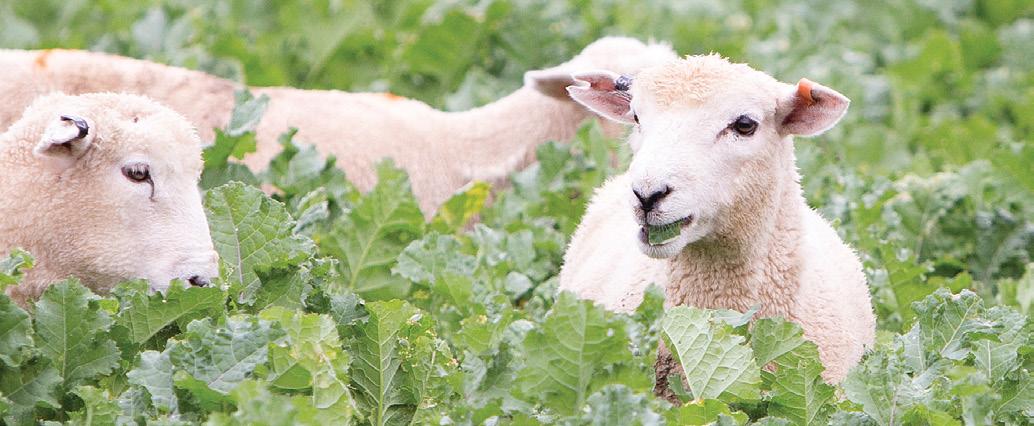
Lambs preferentially grazed Pallaton over the forage rape in central Hawke’s Bay, NZ.
38% increase in water use efficiency (WUE) relative to Goliath® forage rape. Featuring a sizeable taproot, Pallaton is tolerant to drought once established.

Pallaton has excellent regrowth potential and has the ability to persist for up to 4-5+ grazings over a 12 month period.

32% increase in Aphid tolerance relative to forage rape. Pallaton also has a higher level of tolerance to White Butterfly and Diamondback Moth.

Forage rape (L) and Pallaton (R) under Aphid pressure. Both plants have had identical treatment and are in side-by-side plots
Graze Pallaton as early as 56 days after sowing (DAS), to maximise crop utilisation and regrowth potential. It can deferred up to 100 DAS, however utilisation and regrowth potential will be reduced. Pallaton does not have a specific maturity requirement.
Feeding like a: Forage rape?
Graze like a: Forage rape


Note: knee and gumboot height in the illustration are indicative for grazing height based on an average height person. Ideal first grazing height is 25cm+.
When sown in spring it is recommended to sow Pallaton in soils of 12°C soil temperature and rising.
Feeding like a: Leafy turnip?
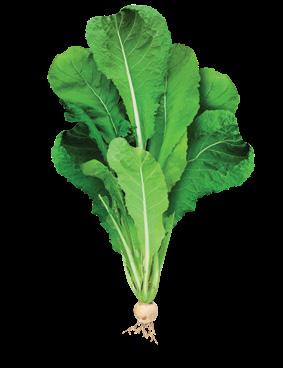
Graze like a: Leafy turnip
Cow grazing height
Maximum crop height for good crop utilisation for cattle
Lamb grazing height
Maximum crop height for good crop utilisation for sheep
TIP: How to get started with Pallaton. Pallaton is a highly adaptable plant, but it is important to note that it requires additional attention to detail in comparison to traditional forage brassicas, most importantly fertiliser and grazing management. Pallaton is not just a forage rape where growers can expect 1-2 grazings; this plant has incredible regrowth characteristics, produces more dry
The above is a guide only as maximum DAS will vary depending on climatic region. Contact your local DLF Seeds Sales Agronomist or accredited retailer for advice specific to your crop.
matter when grazed regularly and responds quickly to rainfall due to its taproot. On average growers will see up to 5+ grazings from Pallaton. Want to take your brassica lamb finishing operation to the next level? Sow Pallaton for up to 5+ grazing’s and high live weight gain with good management.
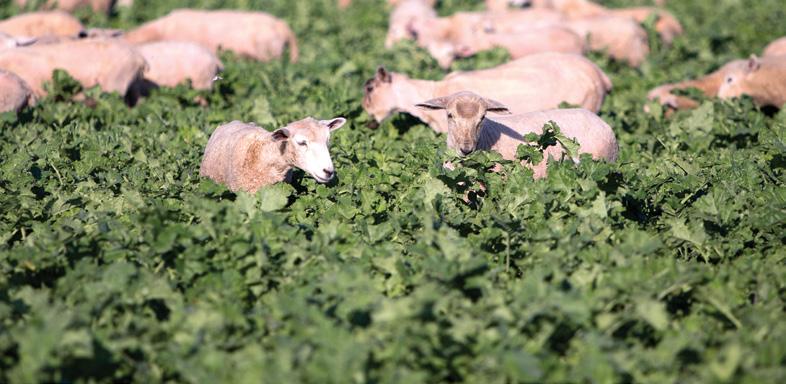

Every time it rained, the Mainstar produced a new mass of leaf back on the root crown. It grew much more quickly than Winfred, the rain just recharged it. With a good quality crop like Mainstar, you might be able to put more stock on, or not sell your lambs as early, so you can get a few more kilograms on them before you have to turn them off. At times this year, the difference between trade weight and heavy in lambs has been as much as $80 or $90 a head so that flexibility is very valuable.
The versatile and highly palatable forage rape
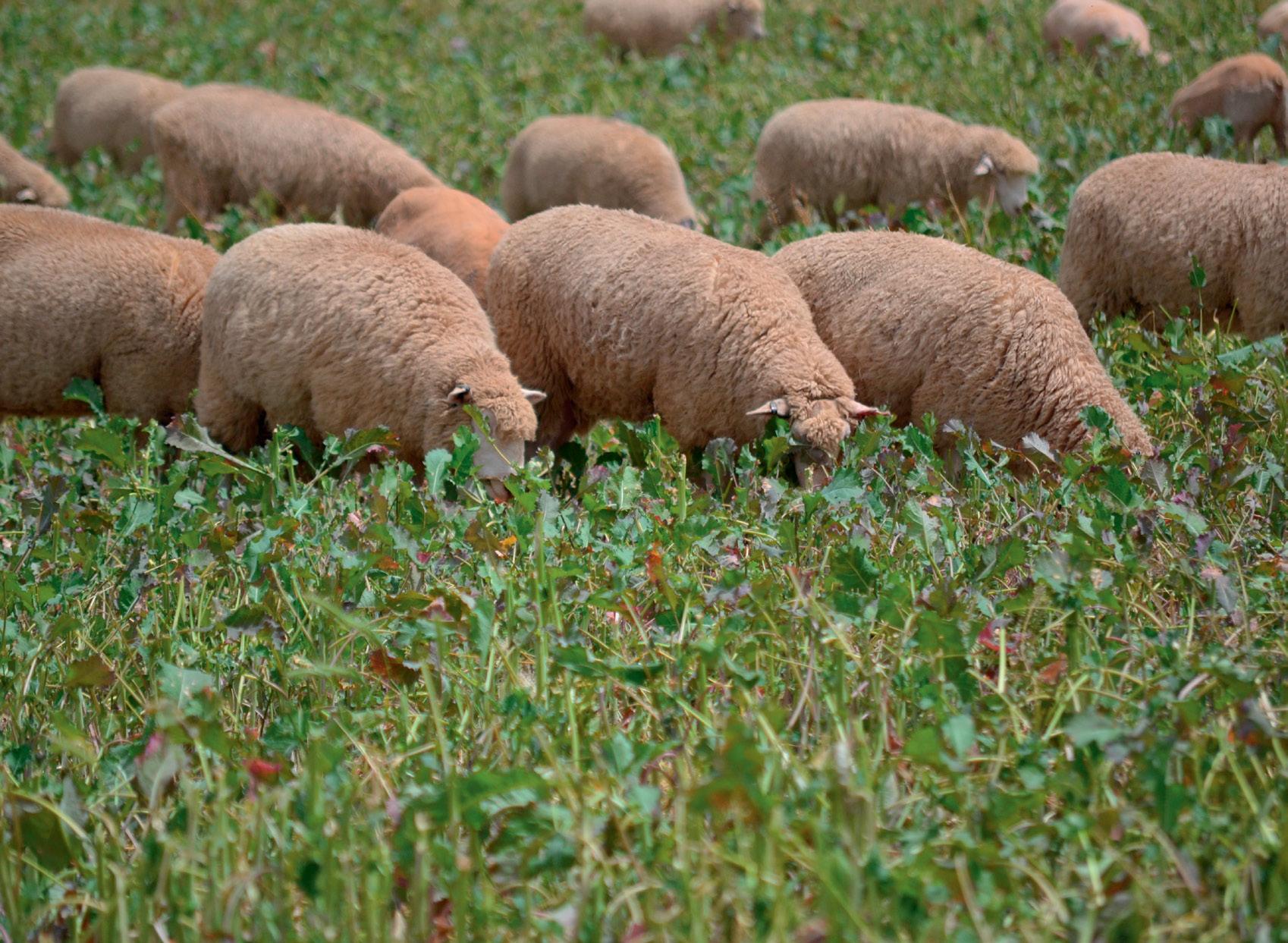

Mainstar is a short type forage rape that has excellent regrowth potential after grazing, giving it the ability to respond to moisture after long periods of summer dry. It has increased forage yields over other short type forage rapes. Animal testing during the breeding process found Mainstar to have a higher leaf percentage and superior animal preference over other short type forage rapes. Mainstar can be grazed 10-12 weeks after sowing.
• Early maturing, 10-12 weeks
• Highly palatable
• Excellent regrowth potential
• Tolerant to Aphids
• High leaf percentage and superior animal preference


Young prime lamb stock finishing in early summer
Feed for post weaning period, where feed demands increase at a time when pasture declines.
Mid-late summer ‘safe’ feed for all stock classes
Feed at a time when pastures are of a low quality and low moisture levels are impacting on pasture growth. This helps avoid stock health issues related to endophyte effects, worms, facial eczema etc.
To support an increased stocking rate, as required when paddocks are removed for pasture renewal.
Break crop for renovation programme of sub-standard pastures
If managed well, forage crops will provide a significant dry matter contribution, with minimal time out of production. It is also a useful system for assisting in weed and disease clean up for pre pasture establishment and a good opportunity for improving fertility.
Maintenance feed for stock when pasture growth is limited, allowing stock to be held on small areas, thereby building the amount of valuable and high quality early spring feed.
Large quantities of quality feed suitable for finishing e.g., cattle and winter lamb contracts.
Trial work has been conducted in Australia and NZ over multiple low rainfall sites (Lincoln, Wairarapa, Hawkes Bay and Ballarat) comparing short type forage rapes like Mainstar and Winfred to tall type cultivars like Greenland. There is considerable variation between forage rapes cultivars in the relative proportion of stem and leaf. The image to the right shows the difference in leaf to stem between a Mainstar and Greenland crop planted on the same day. The leaf of a forage rape plant is the highest quality regardless of the forage rape variety, however the longer the stem the lower the stem quality and there is a direct correlation to high leaf volume and crop utilisation. The below illustrates the differences between Mainstar and other varieties in showing it has over 70% of total yield as leaf and less than 30% of total yield as stem. This is one of the reasons stock show grazing preference to Mainstar over other varieties.
Figure 14 graph shows the total amount of dry matter grown across two grazing events, represented by the line graph. Once the animals had been removed after the second grazing, the residual stem that was left behind by the animals was measured to work out how much feed was consumed. Total feed consumed across each variety is shown by figure 15 graph. This is one of many examples of utlisation rates of Mainstar over other varieties.

Sowing rate 1-4kg/ha (mixed)
Ready to graze (weeks) 6-10
Rainfall/Irrigation Minimum 600mm p.a
Used for
Appin leafy turnip has a very high initial growth rate up until first grazing. Tops can be grazed initially, then regrowth of leaf and bulb will occur after a short spell.
• Tops and bulbs are highly palatable for sheep and cattle
• Excellent option for quick winter feed
• Re-grazing in 30 days is possible if initial grazing is managed well
Highly compatible with annual and Italian ryegrass mixes
Sowing rate 4-5kg/ha (sole)
Ready to graze (weeks) 6-8
Rainfall/Irrigation Minimum 600mm p.a
Used for
As a cross between a turnip and a rape, Hunter is a quick growing, leafy turnip with minimal bulb development. Fast maturing, Hunters first grazing can be as early as 6-8 weeks. Providing high quality forage, Hunter produces high live weight gain in beef and sheep and will provide farmers with multiple grazing opportunities. Selecting for its vigorous regrowth, Hunter recovers fast and produces strong yields into the third year
Bred for tolerance to turnip mosaic virus and cauliflower mosaic virus, Hunter is a great option for early autumn feed. Hunter usually shows good resistance to most clubroot races, but is susceptible to Aphids. Hunter is best suited to heavier soil conditions with periodic summer moisture or irrigation.

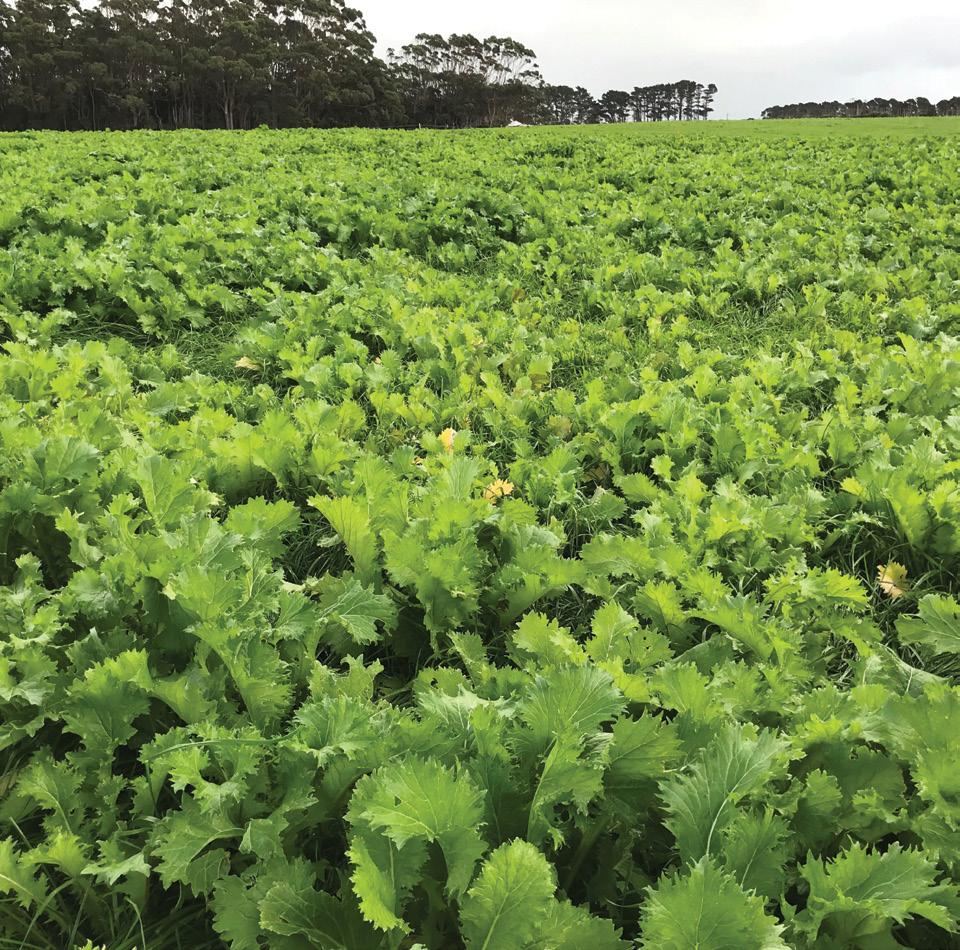
• Early maturing, 6-8 weeks
• Fast recovery from grazing
• High yielding
• Strong plant survival following multiple grazings
• Bred for tolerance to turnip mosaic virus
Sowing rate 4-5kg/ha (sole)
Ready to graze (weeks) 6-8
Rainfall/Irrigation Minimum 600mm p.a
Used for
Ready to graze in 42 days – the quality feed you can rely on
Pasja II – the brassica to choose when fast, high quality spring/summer/autumn feed is needed for your stock. Pasja II combines early maturity with yield and the option for multiple grazings, providing quality fast feed you can rely on. Suited for mixes with annual and Italian ryegrass, and in multi species mixes.
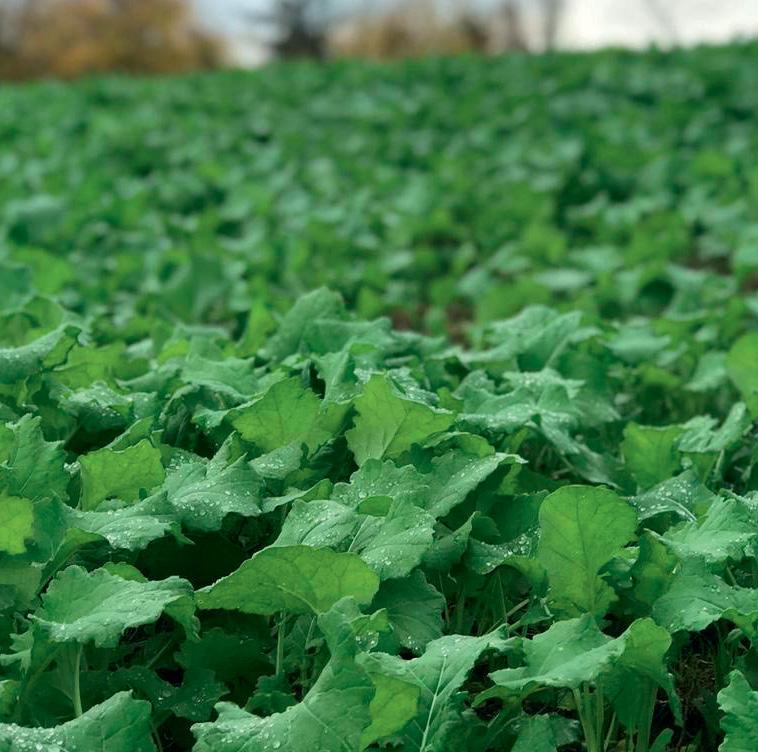
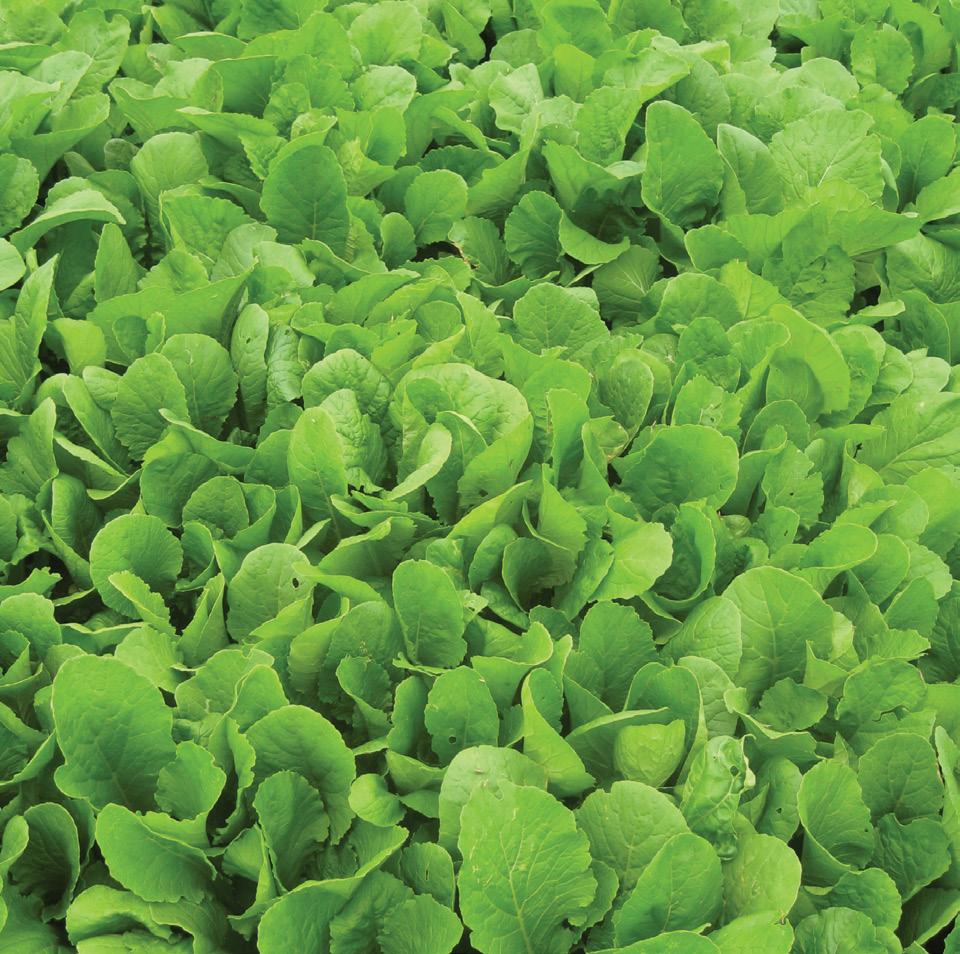
• High dry matter yields
• Selected for reduced bolting
• Multi graze option with excellent regrowth potential
• Fast establishing
• Minimal ripening required
• Excellent grazing tolerance
Sowing rate 3-5kg/ha (sole)
Ready to graze (weeks) 10-13
Rainfall/Irrigation Minimum 500mm p.a
Used for
Titan combines early maturity, high dry matter yields and exceptional palatability to deliver a high quality summer/autumn/winter feed option. Strong regrowth potential offers multi graze options for all grazing systems. Titan provides very good Aphid and virus tolerance.
• High animal preference forage rape cultivar
• High whole plant MJME (megajoules of metabolisable energy) content
• Multi graze option with excellent regrowth potential
• Very good Aphid and virus tolerance
• Bred and trialled by Forage Innovations Limited (FIL) for Australian grazing systems
The methods of grazing a brassica forage crop will vary between crop types, stock classes and the resources available to you. Some general suggestions are presented in the following sections.

Strip grazing Brassica crops will achieve three key outcomes:
By waiting until animals have cleaned up a strip before moving them on, crop utilisation will be improved compared with ad hoc access to the entire crop.
The nutrient profile of tops and bulbs are very different. By encouraging animals to eat bulbs and tops together within a 24-hour period, a balance of nutrient intake and therefore nutrient utilisation can be improved.
Strip grazing will reduce risk of chipping and wastage of crop through treading on the crop before it has been grazed, and reduced intake through faecal and soil contamination of the crop.
Strip grazing will improve utilisation and, combined with back-fencing, will allow maximum regrowth potential for forage rape and leafy turnips. Realistically, particularly for summer lamb fattening on brassica crops, set stocking remains the more practical option for brassica feeding.
For detailed brassica grazing management, visit dlfseeds.com.au
Sudden unrestricted access to a brassica forage crop can upset the balance of rumen microbes, resulting in poor animal performance, scouring and rumen acidosis, particularly in cattle. Start a feeding programme by grazing the crop for no more than 1-2 hours per day, building up to a maximum allowance over at least 7-10 days. Allow rumen microbes time to adjust to the high-quality forage. Most animals going onto a brassica crop have come off pasture. Pasture is usually of lower quality than brassicas, and the rumen contains different types of microbes than
those needed to digest brassicas. If animals suddenly access brassicas, there can be a sudden overgrowth of the wrong types of microbes, which produce large quantities of acid (rumen acidosis). Reduce risk of rumen acidosis by offering animals other non-brassica feed (pasture, silage and/or hay) before moving animals onto crop. Pasture or supplements as part of the diet help maintain a normal rumen function. Feeding supplements before a new break of brassica reduces the risk of dominant, hungry animals gorging/ overconsuming brassica.
Forage crops are highly digestible, and don’t contain much ‘effective fibre’ (the sort of fibre that encourages animals to chew).
Feeding extra effective fibre means:
• More chewing and increased salivation, which helps maintain rumen pH and fewer digestive upsets
• Slower flow of feed through the rumen and gut, with a more effective rumen fermentation
• Increased cud-chewing and more effective digestion. Extra fibre should be given prior to and throughout the brassica feeding period, through access to pasture, hay or straw. This will help to prevent gorging, help rumen microbes adjust to the feed and help to maintain normal rumen function. It is suggested that 20-30% of the diet is fed as hay, straw, or runoff pasture
• The requirement for extra dietary fibre is greater for cattle than sheep
Feed brassicas as part of a balanced diet
Animal performance on brassicas is best when crops are fed strategically as part of a balanced diet. For example, the high protein and energy of brassicas complement stalky summer ryegrasses, which can be deficient in energy content and protein, or whole-crop cereal and maize silages, which are low in protein. Feed dry stock no more than 70-80% of the diet as brassica, once transitioned onto crop. Feed lactating dairy cows no more than 33% of their diet as brassica if milk is being sent to the factory.
Give animals water when grazing brassica crop
Although the water content of brassicas is high, it is recommended that animals have access to clean, fresh water at all times, as a limited water intake may cause an animal’s dry matter intake to decline.
Recognise potential for stock health problems
Feeding brassicas can sometimes be associated with animal health problems. Risk can often be avoided by good agronomic and grazing management.

The right combination of products can create a profitable solution for every operation. We offer a wide range of Proprietary Blends and common mixes and, the flexibility of creating a custom mix.
Contact your local DLF Seeds Sales Agronomist to discuss a suitable mix from our existing range that suits your region, or a customised solution to suit your farm. To find about more, contact us on 1800 619 910 or visit dlfseeds.com.au/contact/contact-us.

MAXIMISER ® MIX
Sowing rate 25-30kg/ha (mixed)
Rainfall/Irrigation Minimum 700mm p.a
Used for
Mix contains:
#Legion AR37 diploid perennial ryegrass
Coolamon subterranean clover – Superstrike® treated seed
Riverina subterranean clover – Superstrike® treated seed
Tribute white clover – Superstrike® treated seed
Nomad white clover – Superstrike® treated seed
MAXIMISER ® MIX
Sowing rate 12.5kg/ha (mixed)
Rainfall/Irrigation Minimum 500mm p.a
Used for
Mix contains:
Confederate phalaris
Uplands cocksfoot
Coolamon subterranean clover – Superstrike® treated seed
Riverina subterranean clover – Superstrike® treated seed
Bindoon subterranean clover – Superstrike® treated seed
MAXIMISER ® MIX
Sowing rate 15-20kg/ha (mixed)
Rainfall/Irrigation Minimum 550mm p.a
Used for
Mix contains:
Kingsgate SE diploid perennial ryegrass
Uplands cocksfoot
Bindoon subterranean clover – Superstrike® treated seed
Arrowleaf clover – Prillcote® treated seed
Riverina subterranean clover – Superstrike® treated seed
Optimise your beef and dairy operation
Optimise your beef and dairy operation, save on Nitrogen costs by fixing free atmospheric Nitrogen (from clovers) and increase pasture persistence and performance with AR37 endophyte. Sow Maximiser Beef & Dairy AR37 mix for strong autumn recovery, high amounts of quality dry matter, excellent density for periods of set stocking, winter grazing and premium insect protection from AR37 endophyte. AR37 protects from Argentine Stem Weevil, Pasture Mealy Bug, Adult Black Beetle and Root Aphid.
#Legion has been bred, selected and successfully tested as a perennial and will function as a perennial ryegrass. Due to a small number of tip awns, Legion is certified as Lolium boucheanum
Persistent in areas not suited to ryegrass
Providing farmers with persistence under heavy grazing in low rainfall areas, Maximiser Hillside Phalaris & Subs provides farmers with the benefits of a long lasting perennial with the added benefit of improved animal health and Nitrogen fixation from subterranean clovers. As a phalaris based pasture with hardy subterranean clovers, this mix is persistent under heavy grazing and will thrive in areas where ryegrass will not persist. Suited to heavy clay soils.
Palatable, persistent and nutritious
Ideal for the farmer that requires balanced growth throughout the year the Maximiser Dryland Mix includes a range of pasture varieties that are palatable, persistent and nutritious. This blend combines both winter and summer active species allowing farmers to take advantage of rainfall, no matter when it occurs. Mix contains standard endophyte (SE).
*Mix components may change subject to seed availability. DLF Seeds will seek to replace with similar products.
MAXIMISER ® MIX
Sowing rate 15-20kg/ha (mixed)
Rainfall/Irrigation Minimum 600mm p.a
Used for
Mix contains:
One50 SE diploid perennial ryegrass
Savvy cocksfoot – Superstrike® treated seed
Confederate phalaris
Tribute white clover – Superstrike® treated seed
Nomad white clover – Superstrike® treated seed
MAXIMISER ® MIX
Sowing rate 25kg/ha (mixed)
Rainfall/Irrigation Minimum 600mm p.a
Used for
Mix contains:
Concord II diploid Italian ryegrass
Asset LE diploid Italian ryegrass
Thumpa tetraploid Italian ryegrass
Reliable and hardy
Designed especially for the grazier who requires a reliable pasture for their farming system. The Maximiser ® Hardy Tablelands Mix combines traditional temperate grass and clover varieties with Ecotain® environmental plantain to provide a highly productive and nutritious pasture. Mix contains standard endophyte (SE).
Coolamon subterranean clover – Superstrike® treated seed
Urana subterranean clover – Superstrike® treated seed
Ecotain® environmental plantain – Ultrastrike® treated seed
This fast establishing, diploid/tetraploid Italian ryegrass mix provides winter/spring production, grazing, silage and hay. Densely tillered for better recovery from grazing, Italian Stallion produces a quality pasture with increased leafiness and very good persistence into the second year (where conditions allow). Mix contains low endophyte (LE). Italian Stallion is not suitable for horses.
MAXIMISER ® MIX
Sowing rate 20kg/ha (mixed)
Rainfall/Irrigation Minimum 600mm p.a
Used for
Mix contains:
Kingsgate SE diploid perennial ryegrass
Somerset SE diploid perennial ryegrass
Uplands cocksfoot
Riverina subterranean clover – Superstrike® treated seed
Coolamon subterranean clover – Superstrike® treated seed
Tribute white clover – Superstrike® treated seed
For increased stocking rates and good live weight gains
This perennial ryegrass pasture blend is suitable for sheep and beef farms that require quality pasture within a rotational grazing system. Maximiser Sheep & Beef mix will produce high amounts of dry matter, quality grazing and is a good option for cutting hay and producing silage.
*Mix components may change subject to seed availability. DLF Seeds will seek to replace with similar products.
PGG Wrightson Seeds product portfolio: Cooee® forage oats, Southern Green ryecorn and Wilpena sulla.
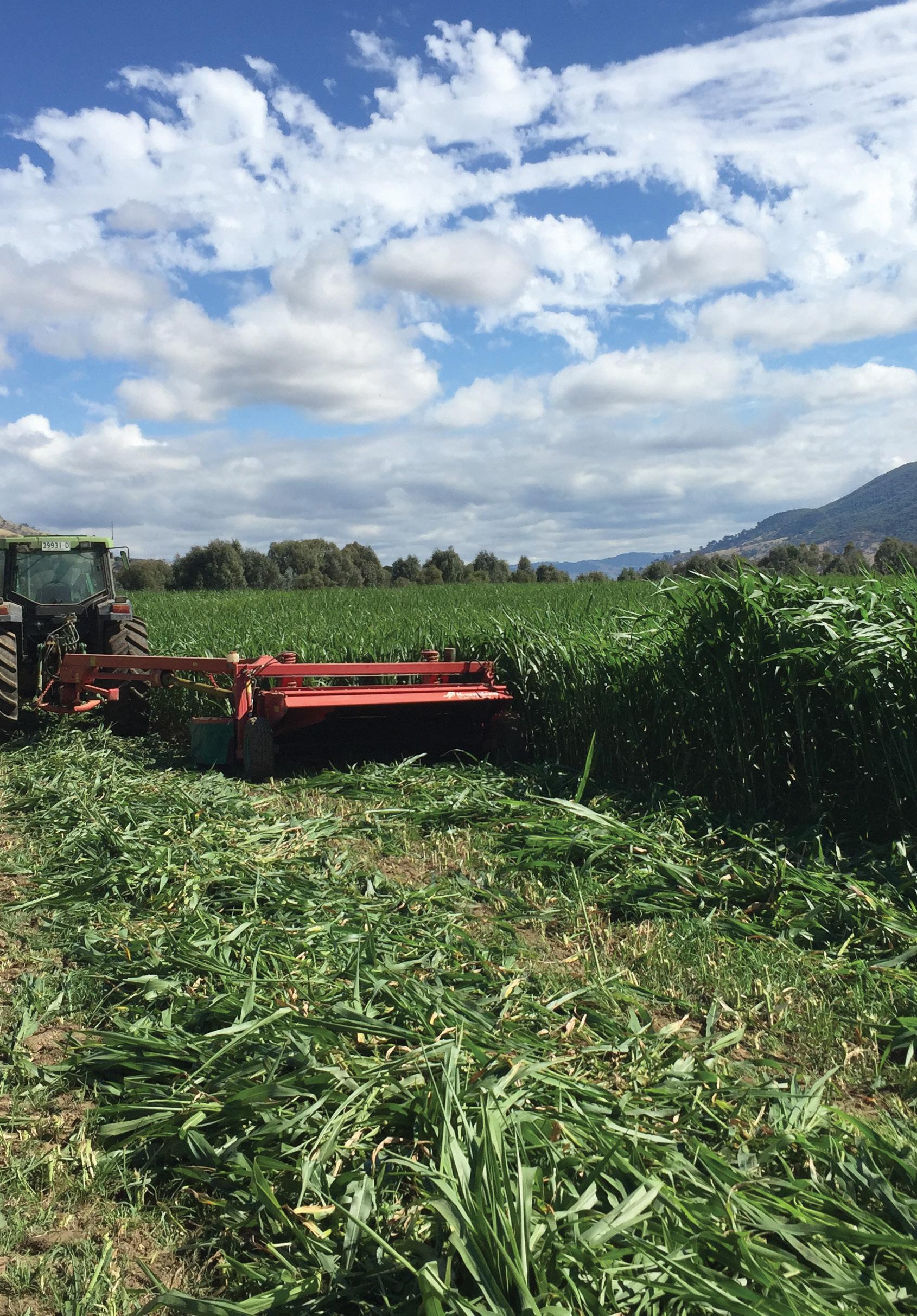
DLF Seeds product portfolio: Feedex, BMR Fuel®, Pronto® and Speedan® forage sorghum, Austin, Bond, Flinders and Ignite forage oats and Kalahari cow pea.
At DLF Seeds, we offer a range of proprietary cereal and forage options suitable for most conditions and environments across Australia. To find about more, contact us on 1800 619 910 or visit dlfseeds.com.au/contact/contact-us.
Complete rust resistance and outstanding dry matter production
Ignite was chosen due to its excellent initial growth and dry matter production combined with full rust resistance to all current leaf rust pathotypes. Suitable for all classes of livestock, hay or silage production, Ignite is a semi erect variety suited to a wide range of soil types.

Ignite is later maturing and will remain vegetative into late spring (moisture dependent). For best results in a continuous grazing system, do not graze below the growing point (located just above the highest node). To achieve maximum regrowth, it is suggested not to graze below 10-15cm.
• Increased tiller density compared to Flinders forage oat

• Establishes in warmer soils (up to 28°c)
• Complete leaf rust resistance
• Excellent early vigour with high dry matter production
• High quality autumn and winter feed (ideal for early plantings)
Heavy grazing will result in poor regrowth
Sowing rate 80-110kg/ha (sole)
Ready to graze (days) 40-55
Heading date Late
Rainfall/Irrigation Minimum 500mm p.a
Used for

Flinders has demonstrated good performance when evaluated in field trials across a range of Australian locations for a number of years. Flinders is a late maturity, erect type oat with prolific tillering. Its stems are of medium thickness, with wide leaves and it is resistant to rust strains. Flinders has the ability to germinate and establish from early sowings into warm soil which is an important requirement for forage oat varieties.
• Strong establishment and early growth
• High dry matter yield and prolific tillering ability
• Excellent recovery from cutting and grazing
• Late maturity
Sowing rate 60-120kg/ha (sole)
Ready to graze (days) 30-55
Heading date Early
Rainfall/Irrigation Minimum 400mm p.a
Used for
Southern Green ryecorn is an exceptionally fast establishing grazing option particularly when sown late into cold conditions. Providing early feed, Southern Green is ready to graze three weeks before oats and will offer multiple grazing opportunities when managed correctly. Unlike common ryecorn, Southern Green produces high quality feed at a time when feed is in short supply. Highly palatable whilst in the vegetative stage, Southern Green is grazed preferentially before oats in early winter but can become unpalatable in spring because stems are more fibrous than those of other cereals.

• Exceptional speed of establishment
• Excellent yield when blended with annual ryegrass
• Can be sown with Italian ryegrass to extend spring growth
• Ready to graze earlier than oats
• Highly palatable in vegetative state
Sowing rate 80-120kg/ha (sole)
Ready to graze (days) 40-55
Heading date Mid Rainfall/ Irrigation Minimum 400mm p.a
Used for
A medium maturity (similar to Drover) forage oat with an erect growth habit. High level of resistance to current races of crown rust. Strong initial growth, regrowth and high total season yield. Good tillering ability for good recovery after cutting or grazing.

• Very strong initial growth
• High total season drymatter yield
• High level resistance to current races of crown rust (Puccinia coronata)
• Medium maturity
Sowing rate 80-120kg/ha (sole)
Ready to graze (days) 40-55
Heading date Mid-Late
Rainfall/ Irrigation Minimum 400mm p.a
Used for
Fast to establish with crown rust resistance

Quicker to establish compared to other varieties, Bond is medium to late maturing with a flowering date 7–10 days and a semi-erect growth habit. Sow Bond forage oats for strong initial growth, high total season dry matter and a high level resistance to current races of crown rust (Puccinia coronata). Prolific tillering gives Bond the ability to recover well after cutting or grazing.

• Strong initial growth
• High total season dry matter yield
• High level resistance to current races of crown rust (Puccinia coronata)
• Medium-late maturity
• Quick winter feed option
Sowing rate 80-110kg/ha (sole)
Ready to graze (days) 40-55
Rainfall/ Irrigation Minimum 500mm p.a
Used for
Quick winter grazing and quality spring feed
Cooee® is a versatile, fast growing, winter forage oat that provides good winter to early spring feed. One of the features of Cooee® oats is its broader style leaves that, when used in a hay production system, offer the benefits of higher quality conserved feed.
Cooee® oats is adapted to a wide range of soil types and has been bred for resistance to leaf rust and good tolerance to Barley Yellow Dwarf Virus (BYDV).
• Fast winter growth
• Provides extended grazing opportunities
• Excellent silage and hay options
• Can be mixed with ryegrass to extend the growing season
A fertiliser supplement supplying this essential trace element.
Selenium is an essential trace element for animal nutrition. It is necessary for growth and fertility of animals and for the prevention of various animal diseases. Selenium acts together with vitamin E as an anti-oxidant, as well as having an important thyroid function. Symptoms of selenium deficiency in livestock include stiff-legged walking motion, poor growth and in severe cases, sudden death can occur.
Selenium Chip is a granule formulation designed for application to pastures where the selenium is taken up by the plants through their root system. Grazing of these pastures then transfers the available selenium to the grazing animals.


This method of selenium uptake by the grazing animals means the risk of selenium overdose is very low when Selenium Chip is applied at recommended rates.
Fertiliser supplement 1kg/ha Used for Apply to paddocks only
Selenium Chip is easy to use, takes minimal time and requires no animal handling.
Application rate: Apply annually to pastures or forage crops at a rate of 1 Kg/ha to selenium deficient soils.
• Selenium Chip provides cost efficient protection against selenium deficiency in livestock for up to 12 months following application
• Fast uptake by plants
• Easy to apply, saving time and labour. Simply add to the annual fertiliser application for the one pass over your pasture paddocks
• No animal handling required, therefore reducing animal stress
• Low risk of selenium toxicity when Selenium Chip is applied to paddocks at recommended rates
Applying a seed treatment to forage seed is a very effective plant protection tool, helping to ensure seedling establishment and early plant development is maximised so that a high producing pasture or crop can be achieved. The first six weeks after sowing is a critical stage in the life of a new plant as seedlings emerge and develop their plant structures. Seed treatment has a very important role to play during this period as seed treatment protects the seedling during establishment (0 - 6 weeks), and it is during this time that seedlings are most at risk from external factors, such as pest and disease pressure.

Superstrike® contains a combination of seed protection and enhancement additives within its seed treatment for clovers and lucerne.
• Assists in maximising seedling establishment, plant development and forage yields

• Targeted protection against major insects and diseases during the first 0-6 weeks after sowing
• Not harmful to beneficials, such as earthworms
• Cost effective compared with ‘broadacre’ control options
Recommended legumes:
• Use in all sub-surface and broadcast sowings in both cultivated and nil tillage situations
Contains:
• Poncho® Plus, a systemic insecticide for protection against Red Legged Earth Mite, Blue Oat Mite, Cutworm and Lucerne Flea (suppression only). Please note, in some cases where high numbers of pests are present, a follow up insecticide treatment may be necessary
• Apron XL® fungicide or Axy-M fungicide are applied to control against ‘damping off’ diseases Pythium and Fusarium, applied to sub clover and lucerne
• Inoculated with nitrogen-fixing bacteria Rhizobia (no Rhizobia inoculant applied to tropical legumes)
• A fine lime base for localised pH correction around seedlings
®
Superstrike seed treatment contains the same ingredients as the SowEasy KickStart™ seed treatment that was previously available from AusWest and Stephen Pasture Seeds.

Ultrastrike® is a broad spectrum ‘film coat’ that provides establishing grass, chicory and brassica seedlings with extensive protection.
• Assists in maximising seedling establishment and plant development

• Effective against a range of common insects
• Effective against a range of diseases in brassica and chicory
• Not harmful to beneficials such as earthworms
• Cost effective compared with ‘broadacre’ control options
Recommended for grass, brassica and chicory:
• Use in oversowing programmes due to the increased risk of insect damage in grass to grass environments
• Oversowing situations where competition from the existing pasture can be limiting on new seedlings
• All autumn and spring sown grasses, brassica and chicory
Contains:
• Poncho® Plus; a systemic insecticide for protection against Red Legged Earth Mite, Blue Oat Mite, African Black Bettle, Yellow Headed Cockchafer and Lucerne Flea (suppression only). Please note, in some cases where high numbers of pests are present, a follow up insecticide treatment may be necessary
• Thiram fungicide effective against the ‘damping off’ diseases Pythium and Fusarium applied on Pallaton, Barkant, and Green Globe
• Apron XL fungicide effective against the ‘damping off’ diseases Pythium and Fusarium applied on Goliath, Mainstar, Winfred, Titan and Regal
• Grazing withholding period is 8 weeks
Contains:
• Pasja II, Hunter and Appin are not Poncho® Plus treated. They are treated with Gaucho®, a systemic insecticide for protection against Red Legged Earth Mite and Blue Oat Mite. Please note, in some cases where high numbers of mites are present, a follow up insecticide treatment may be necessary
• Thiram fungicide effective against the ‘damping off’ diseases Pythium and Fusarium
• Grazing withholding period is 6 weeks
Ultrastrike seed treatment contains the same ingredients as the Kickstart™ seed treatment that was previously available from AusWest and Stephen Pasture Seeds.

Cutworm Wireworm Aphids RLEM BOM YHC African black beetle Lucerne flea
Broadleaf pasture
Grass pasture
Canola, forage brassica Maize, sweet corn, sorghum
Prillcote® has been designed as a cost effective and basic inoculation treatment for clover and lucerne.

Contains: Lime to provide localised pH correction around the seedling and strains of nitrogen fixing bacteria (rhizobia) specific to clover and lucerne
®
Harvest: Not required when used as directed
Grazing: Maize, sorghum, sweet corn: Do not graze or cut for stock food for 4 weeks after sowing
Grass pasture: Do not graze or cut for stock food for 6 weeks after sowing
Canola, forage brassica, broadleaf pasture: Do not graze or cut for stock food for 8 weeks after sowing
Reference: BASF
Prillcote seed treatment contains the same ingredients as the SowEasy® seed treatment that was previously available from AusWest and Stephen Pasture Seeds.
1. Endophyte insect control – Ryegrass, Festulolium & Continental Tall Fescue
Endophyte brand Argentine Stem Weevil Pasture Mealy Bug Black Beetle Root Aphid Porina Grass Grub Field Cricket
Diploid perennial ryegrass
2 - - Not tested NEA2
AR1
(
)
Not tested - Not tested NEA4
Not tested Not tested Not tested AR37
Not tested Standard Endophyte
- Not tested Without Endophyte - - - - - - Not tested
Tetraploid perennial ryegrass
AR1 ( ••• ) (
)
2 - - Not tested AR37 (
(
) • Not tested NEA2
Not tested - Not tested Without Endophyte - - - - - - Not tested
Italian and short term (hybrid) ryegrass
AR1
(
)
2 Not tested - Not tested NEA Not tested ( •••• )
Not tested Not tested - Not tested AR37
( •••• )
Not tested Not tested - Not tested Without Endophyte - - - - - - Not tested
)
MaxP (AR584) Not tested Not tested ••• ( •••• ) Not tested ( •• )
Without Endophyte - - - - - - -
Notes on Tables
Approved by NZPBRA executive 7th december 2021 -
No control.
Low level control: Endophyte may provide a measureable effect, but is unlikely to give any practical control.
Moderate control: Endophyte may provide some practical protection, with a low to moderate reduction in insect population.
Good control: Endophyte markedly reduces insect damage under low to moderate insect pressures. Damage may still occur when insect pressure is high.
Very good control: Endophyte consistently reduces insect populations and keeps pasture damage to low levels, even under high insect pressure. Provisional result: Further results needed to support the rating. Testing is ongoing.
AR37 endophyte controls Argentine stem weevil Larvae, but not adults. While Larvae cause most damage to pastures, adults can damage emerging grass seedlings. In Argentine stem weevil prone areas it is recommended to use treated seed for all cultivars with novel endophyte.
AR1 plants are more susceptible to root Aphid than plants without endophyte.
Active against black beetle adults and Larvae.
Approved by NZPBRA executive 21st september 2021
The information in this table is based on animal safety trialling protocols designed to expose animals to simulated worst-case scenario management. This involves forcing them to graze deep into the base of pure perennial ryegrass pastures that have been allowed to grow for several weeks over late spring/summer (similar to a hay crop) where they will encounter the highest concentrations of harmful endophyte chemicals if these are present.
This management does not represent normal farm practice although similar situations may arise on farms in in rare circumstances. Under normal farm grazing practices, the contribution of basal pasture material to total animal dry matter intake is relatively low and therefore the intake of harmful chemicals (if they are present) is diluted. Thus, the likelihood of adverse effects on animals is reduced,
Freedom from staggers
Endophyte brand
NEA
NEA2
NEA4
but the potential for problems to occur may still exist if the endophyte brand is rated < 4-star for ‘freedom from staggers’ and/or there are comments on animal performance which flag potential issues.
Comments on animal performance have been moderated based on information from other trials (in addition to the formal animal safety testing protocols), consideration of the ‘normal’ grazing management practices implemented on farm (see previous paragraph), and recognition that animal diets are very seldom pure ryegrass. Other dietary components such as clovers or non-ryegrass grass species, crops or supplements will dilute the intake of endophyte alkaloids.
Effects on animal performance Sheep and lambs Cattle and dairy cows
High level of animal performance.
Typically provides a high level of animal performance. Can cause ryegrass staggers in sheep and lambs in extreme circumstances. Lamb liveweight gain can be reduced during periods of severe staggers. While ryegrass staggers has not been observed in cattle and dairy cows, it could occur on rare occasions.
High level of animal performance.
Typically provides a high level of animal performance. Lamb liveweight gain could be reduced in extreme circumstances. While no effects have been observed in cattle and dairy cows, body temperature could be elevated on rare occasions.
Typically provides a high level of animal performance. Lamb liveweight gain could be reduced in extreme circumstances. While no effects have been observed in cattle and dairy cows, body temperature could be elevated on rare occasions.
U2
Standard Endophyte
Without Endophyte
Likely to cause severe staggers in most years Can cause severe staggers in some years Can cause severe staggers occasionally Very unlikely to cause staggers
High level of animal performance.
High level of animal performance. MaxP (AR584)
Can cause ryegrass staggers in sheep and lambs, and significantly decrease lamb growth rates in summer and autumn, and significantly increase dags. In dairy cows, it has been shown to depress milksolids production through summer and autumn.
High level of animal performance.

Nathan Surawski
Northern Region Sales Manager 0429 637 034 nsurawski@dlfseeds.com.au
Gerry Dogao
Central & Northern QLD 0407 113 719 gdogao@dlfseeds.com.au
Nathan Tognela
Western Australia & Northern Territory 0419 312 156 ntognela@dlfseeds.com.au
Brad Byrnes
Southern Region Sales Manager 0417 955 985 bbyrnes@dlfseeds.com.au
Greg Bramley
South West NSW 0427 772 488 gbramley@dlfseeds.com.au
Simon Hunt
South Central VIC 0428 457 044 shunt@dlfseeds.com.au
Barry Varcoe
South Australia 0425 700 442 bvarcoe@dlfseeds.com.au
Peter Tame
Southern QLD & Northern Rivers NSW 0428 405 181 ptame@dlfseeds.com.au
Aaron Kemp
Northern NSW & New England 0427 496 032 akemp@dlfseeds.com.au
Chad Brookes
Western Australia & Northern Territory 0455 724 019 cbrookes@dlfseeds.com.au
Paul Sippel
North West Slopes & Hunter Valley NSW 0429 153 779 psippel@dlfseeds.com.au
Jonathon Tink
Central NSW 0418 329 243 jtink@dlfseeds.com.au
Sam Jarrett
Central West NSW 0456 457 451 sjarrett@dlfseeds.com.au
Barry Dow
Northern VIC 0400 895 650 bdow@dlfseeds.com.au
Jake Frecklington
Gippsland VIC 0427 150 278 jfrecklington@dlfseeds.com.au
Bruce Ramsey
South East NSW 0408 313 240 bramsey@dlfseeds.com.au
Michael Grant Western VIC 0417 059 485 mgrant@dlfseeds.com.au
Heather Cosgriff Tasmania 0425 790 222 hcosgriff@dlfseeds.com.au
Tom Hunt
South West VIC & King Island 0437 945 864 thunt@dlfseeds.com.au
Results will vary depending on all circumstances. PGG Wrightson Seeds Australia (Pty) limited trading as DLF Seeds and its officers, employees, contractors, agents, advisers and licensors of intellectual property provide no assurances, guarantees or warranties in relation to any advice, information, cultivar or product, other than those that must be provided by law. To the extent permitted by law, DLF Seeds excludes all liability, and has no liability to anyone, however arising, from or in relation any advice, information, cultivar or product.
DLF Seeds
13 Felstead Drive, Truganina, VIC 3029 Customer Service: 1800 619 910 | info@dlfseeds.com.au dlfseeds.com.au
Products contained in seed treatments used by DLF Seeds are subject to change without notice. Please refer to the bag information label at time of purchase for details of current inclusions in DLF Seeds seed treatment.
AR37, AR1, Endo5 and MaxP are used under licence from Grasslanz Technology Limited. Goliath is a registered trademark of Forage Innovations Limited. Astro, Concord, Feast, Nourish, Stamina, Regal, Raphno, Superstrike and Ultrastrike, Ecotain, Mach 1, Relish, Winfred, Speedan, BMR Fuel, Maximiser, SowEasy are registered trademarks of PGG Wrightson Seeds Limited in Australia. Poncho Plus is a registered trademark of BASF. Gaucho is a registered trademark of the Bayer Group.
PGG Wrightson Seeds is trading as DLF Seeds. PGG Wrightson Seeds (Australia) Pty Ltd - ABN 83 004 227 972